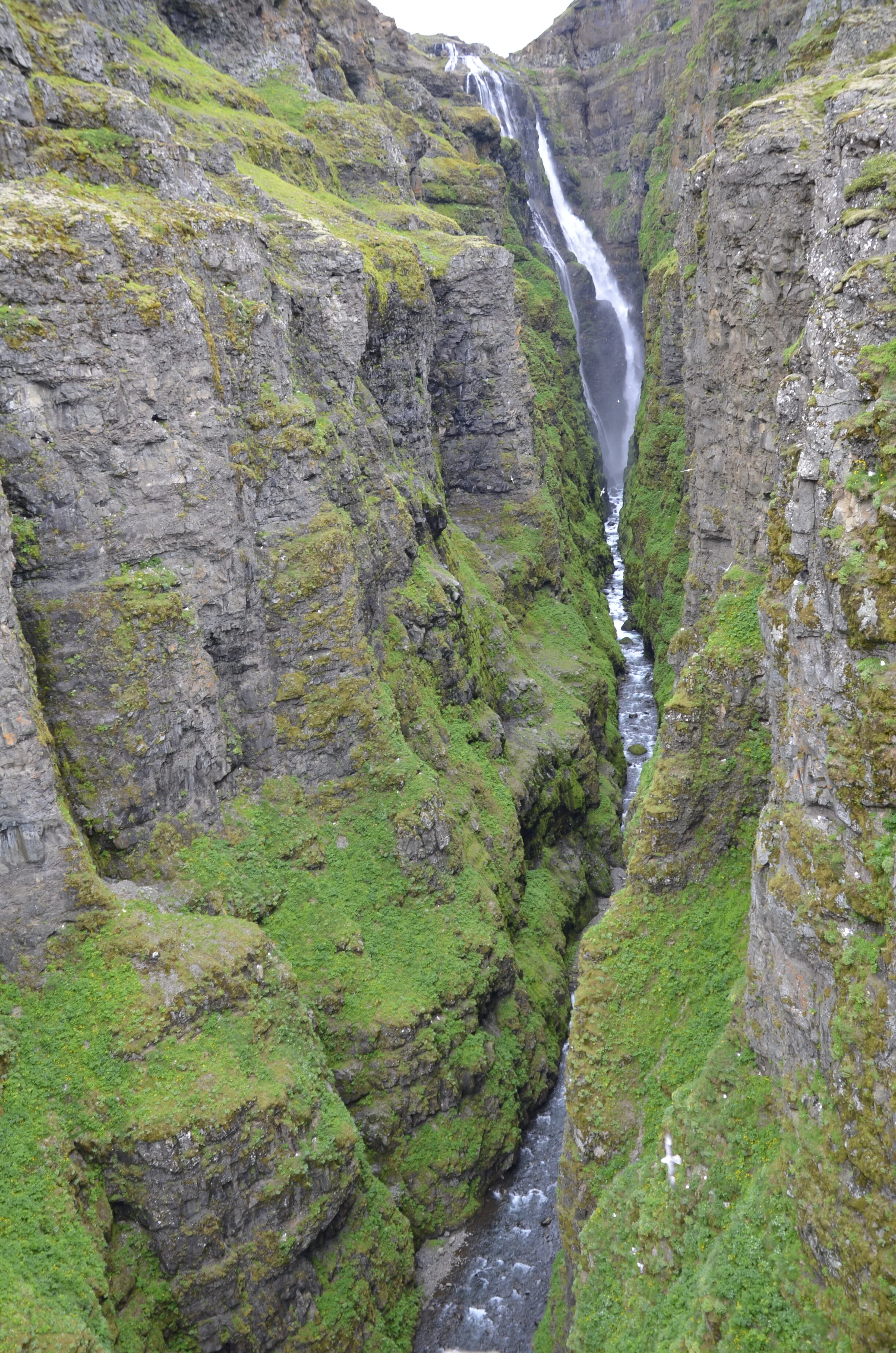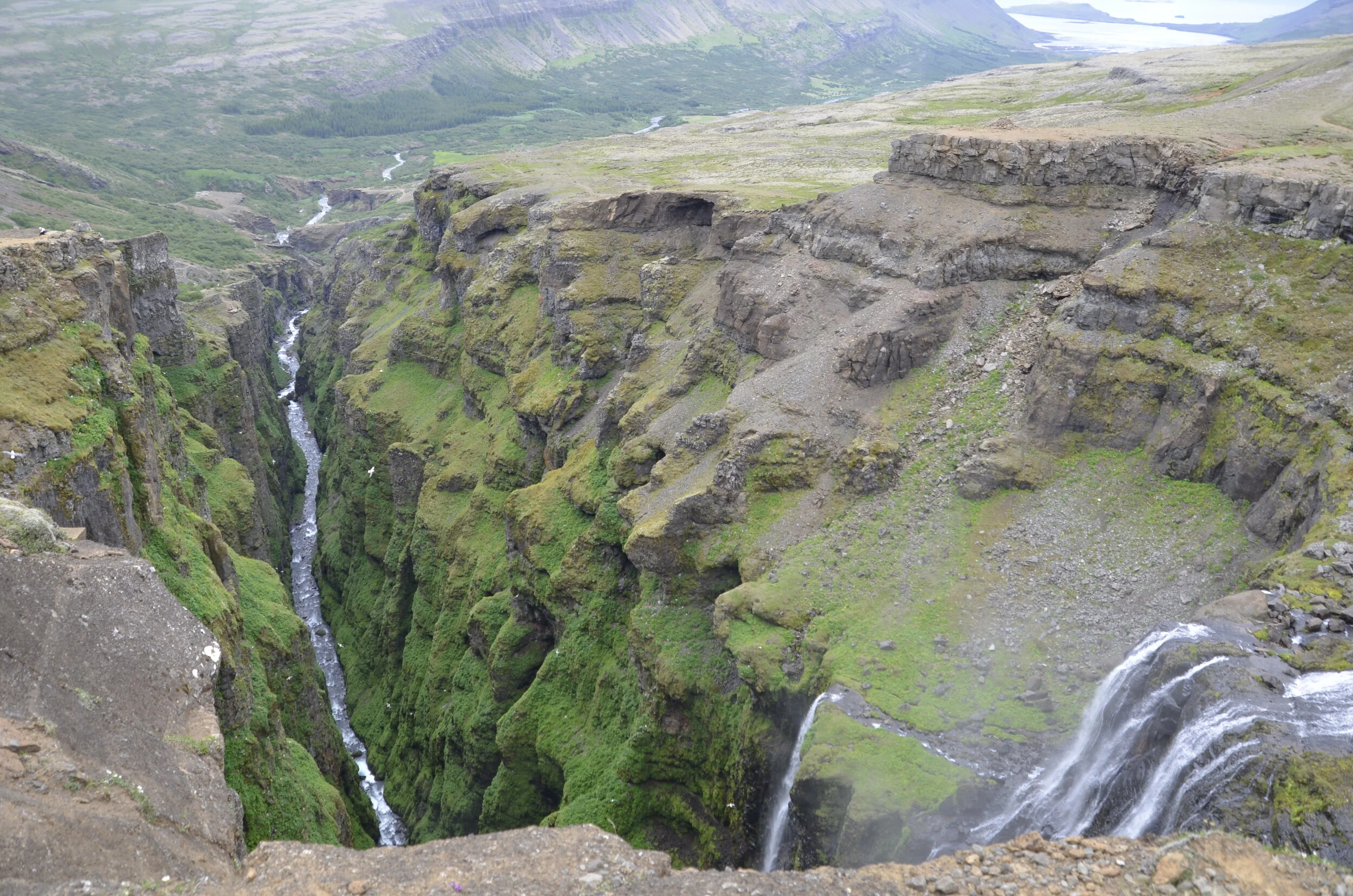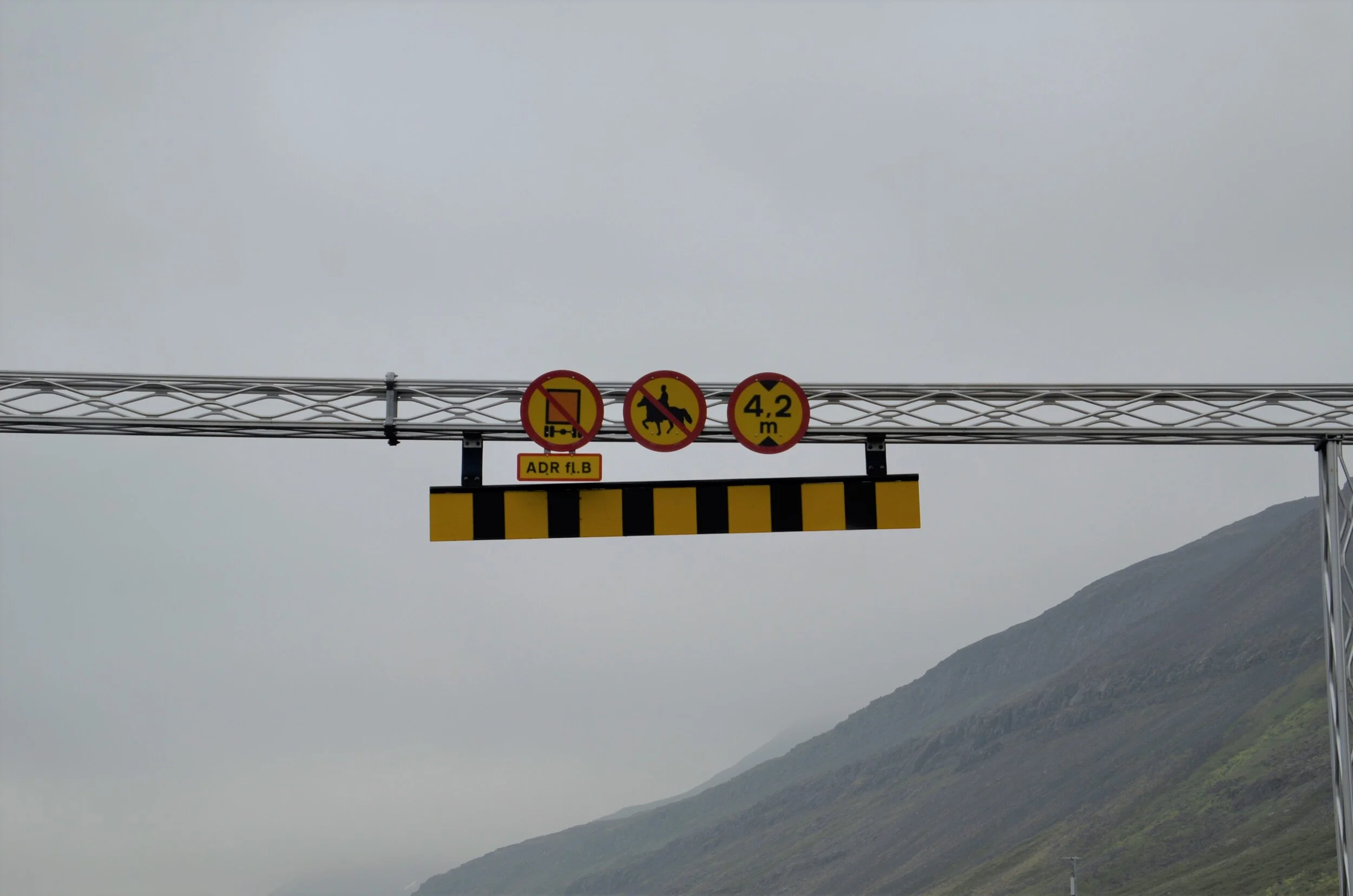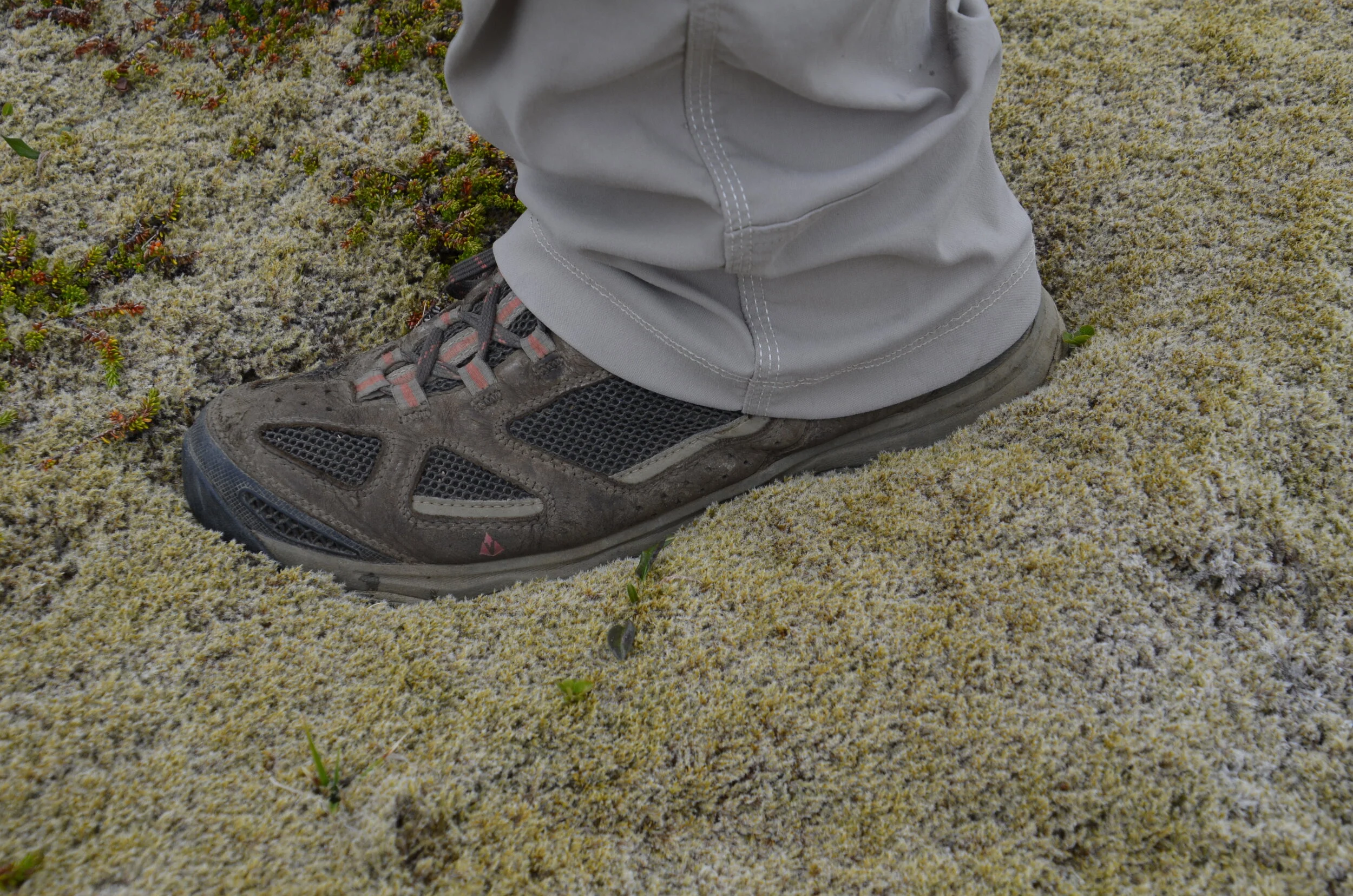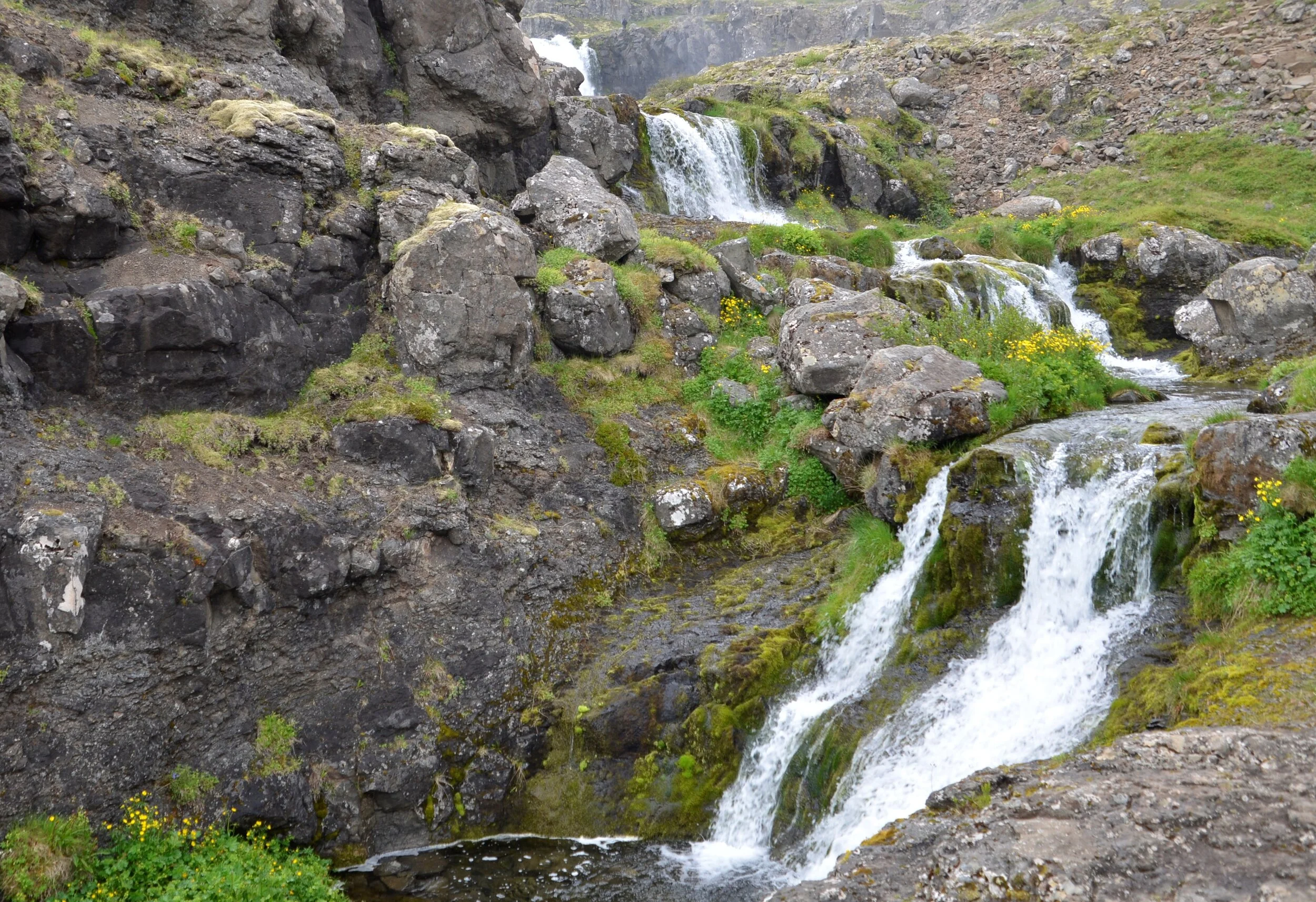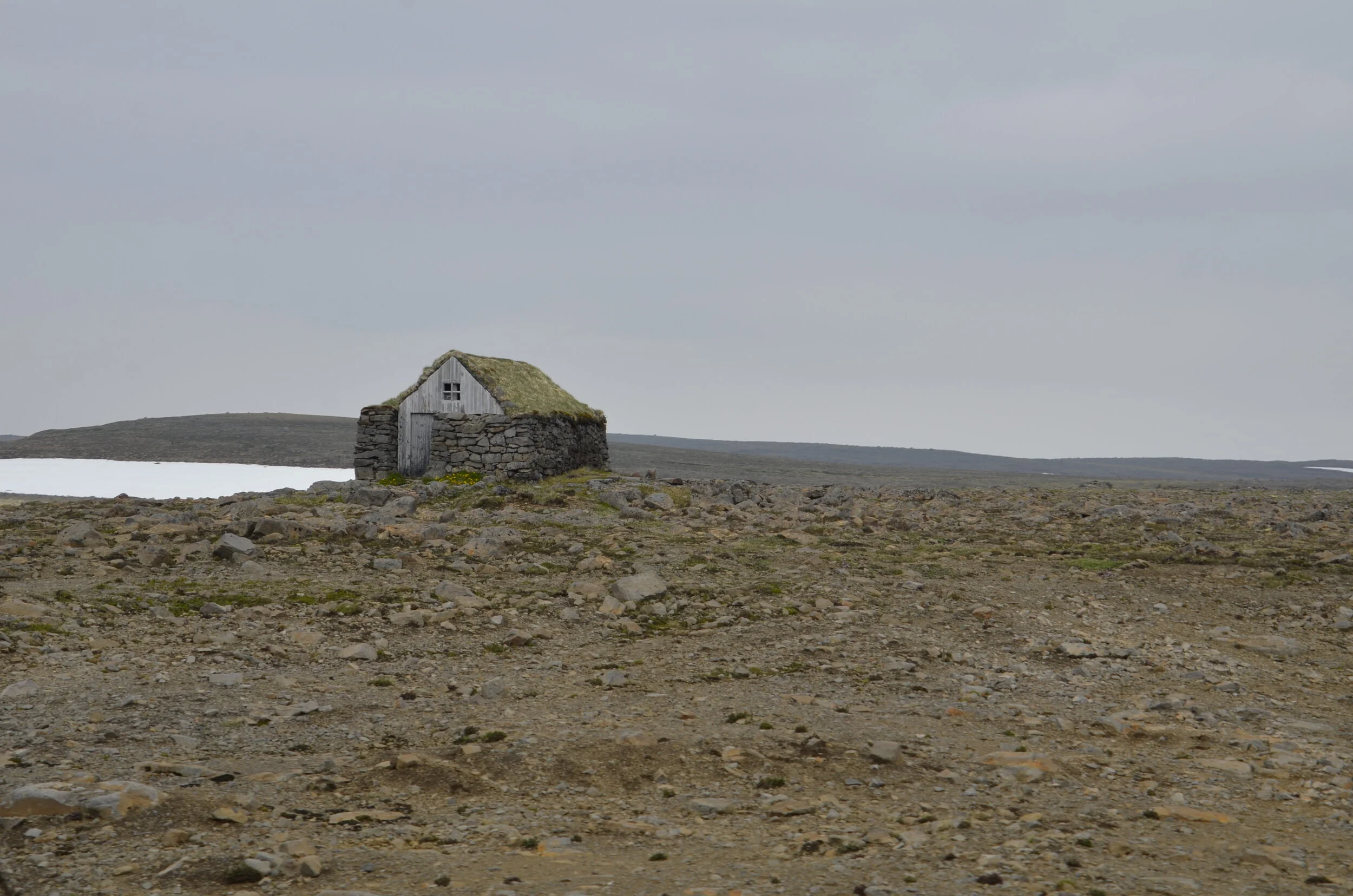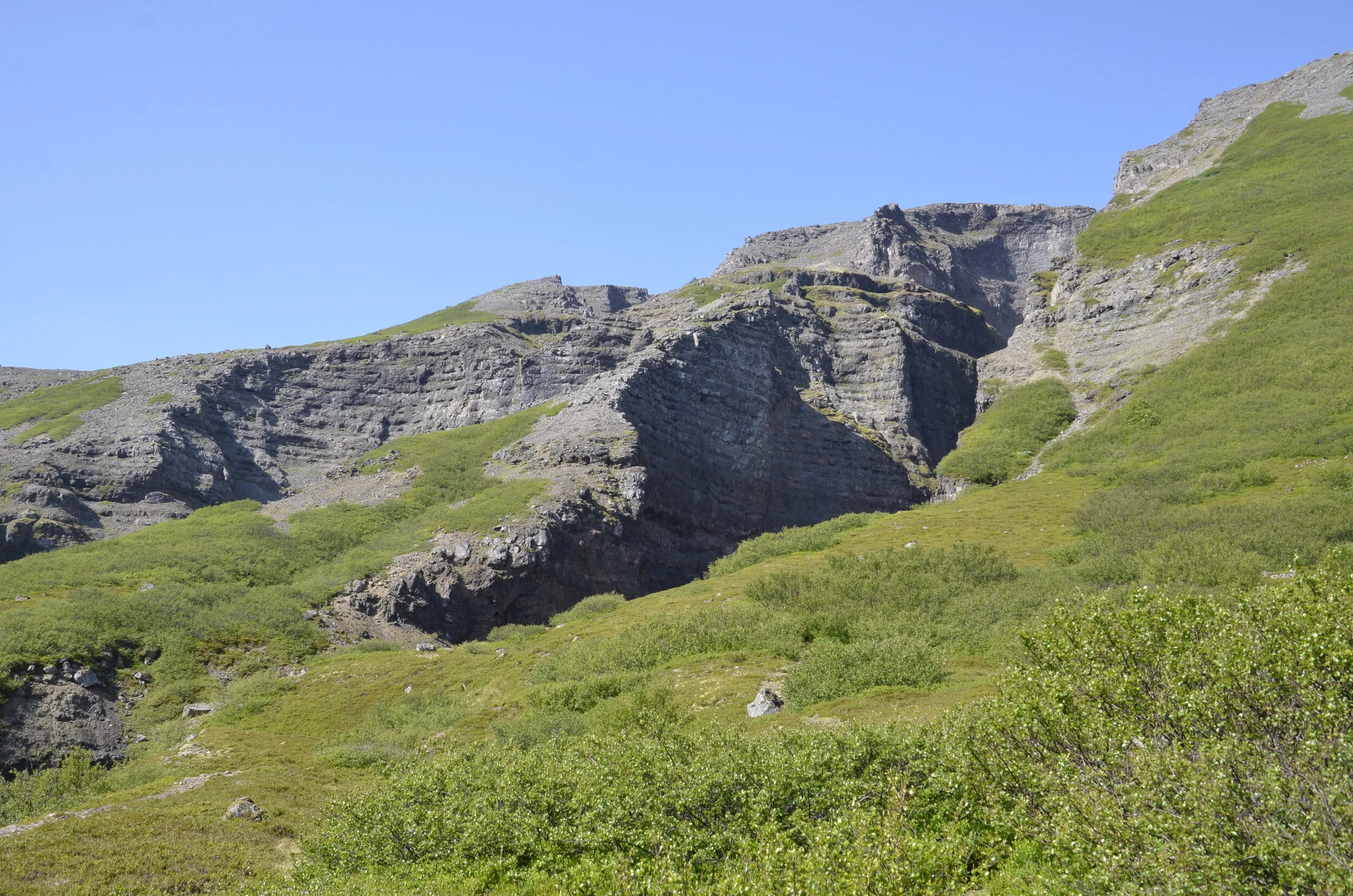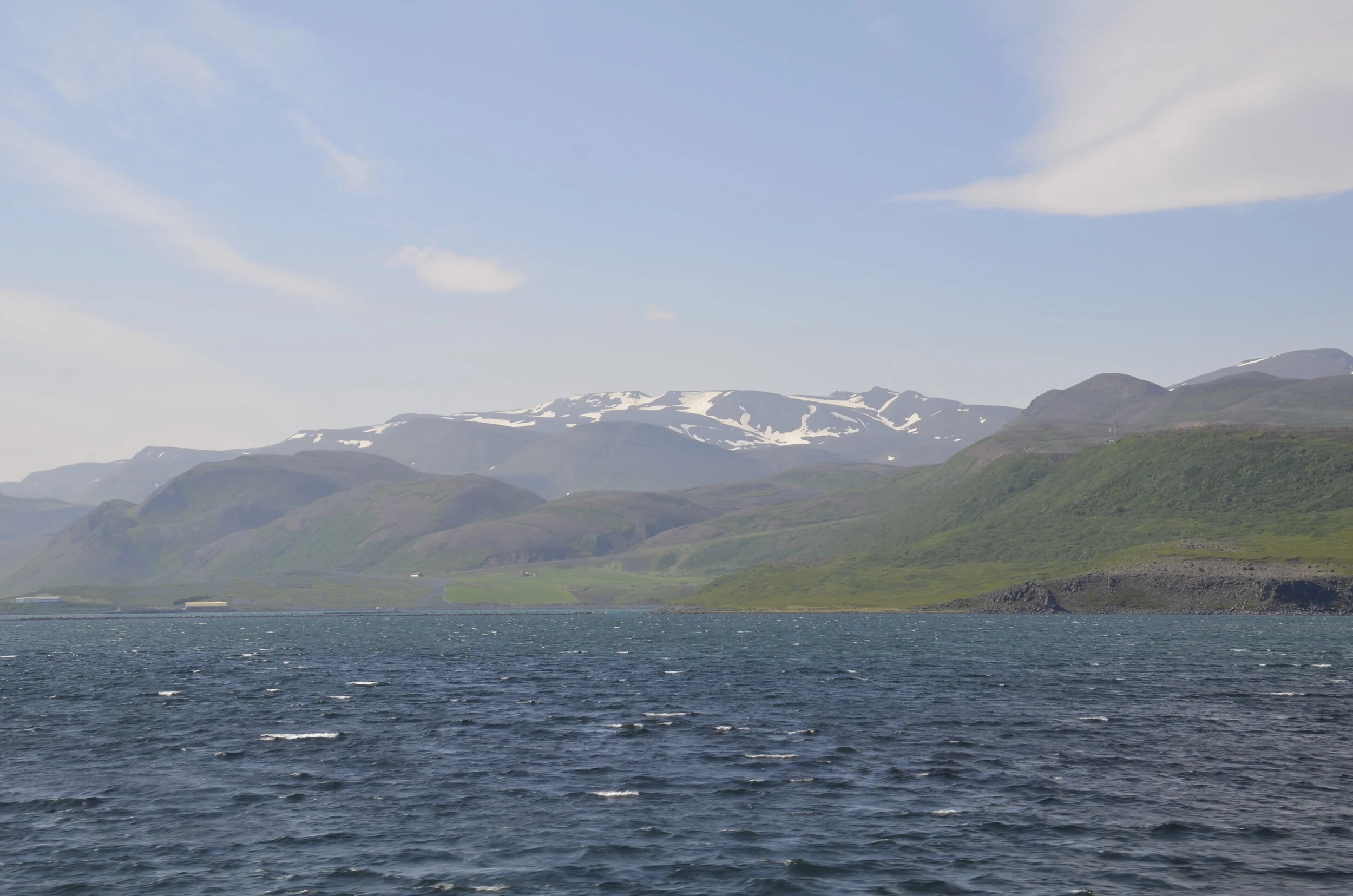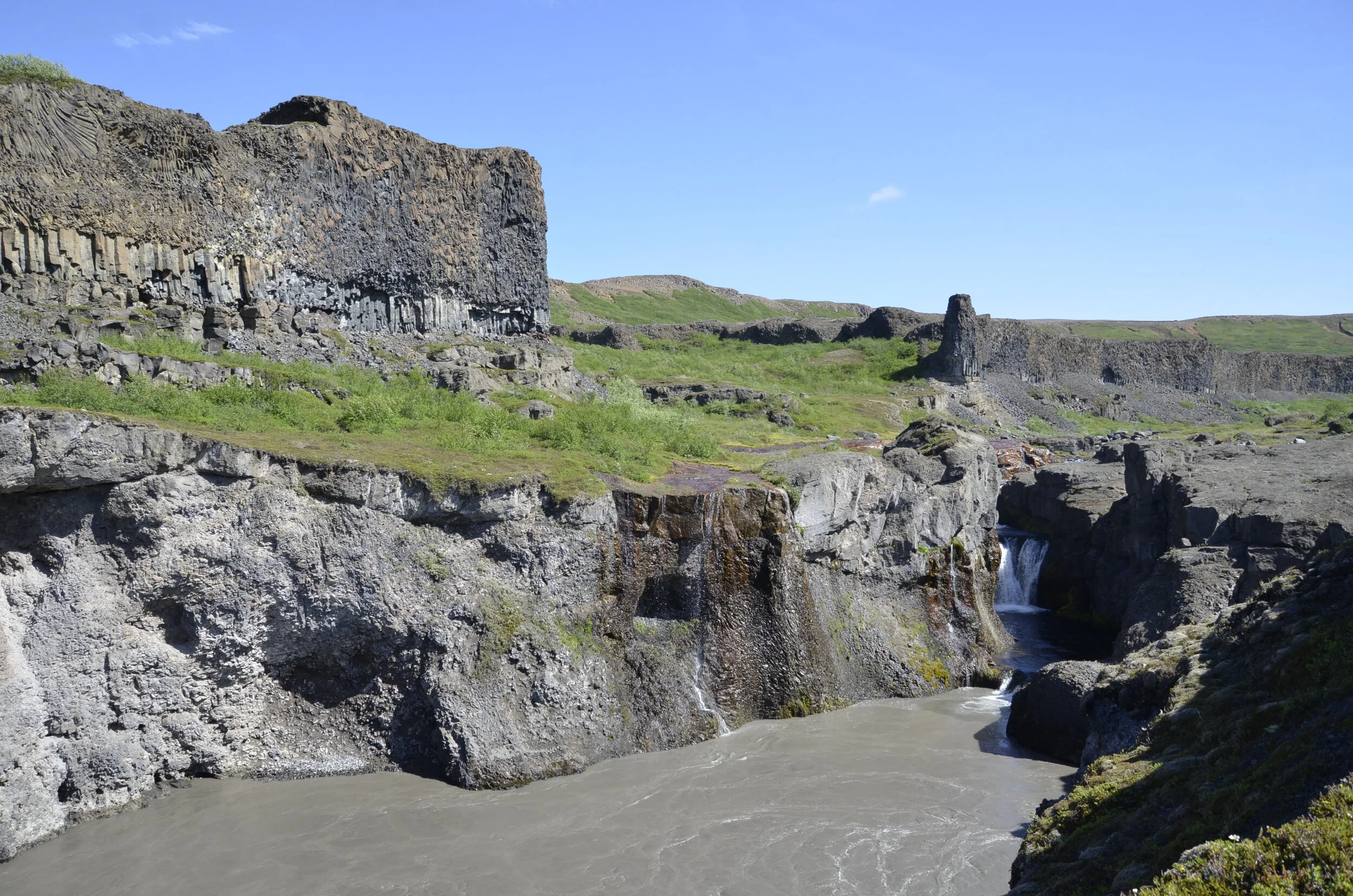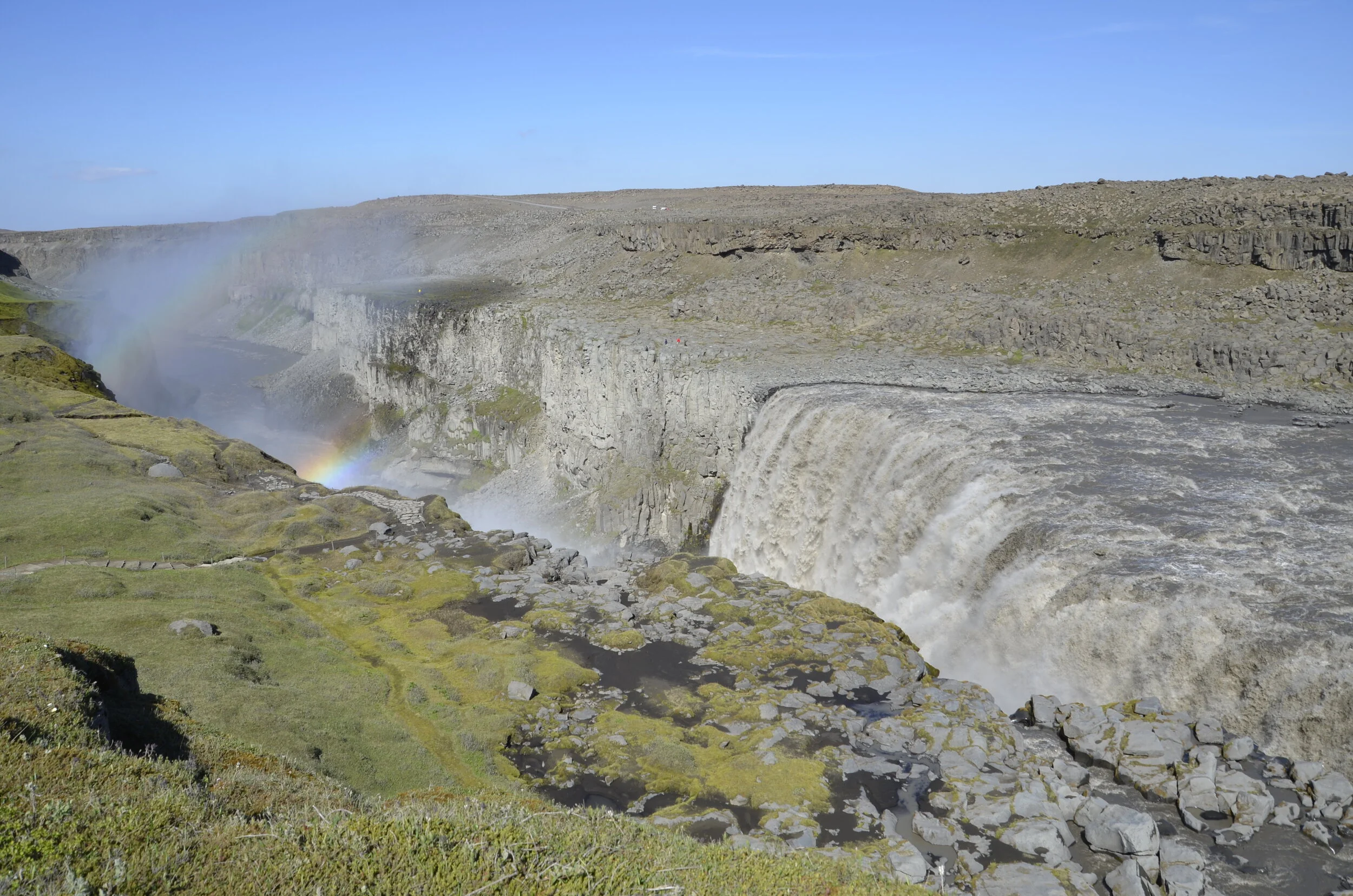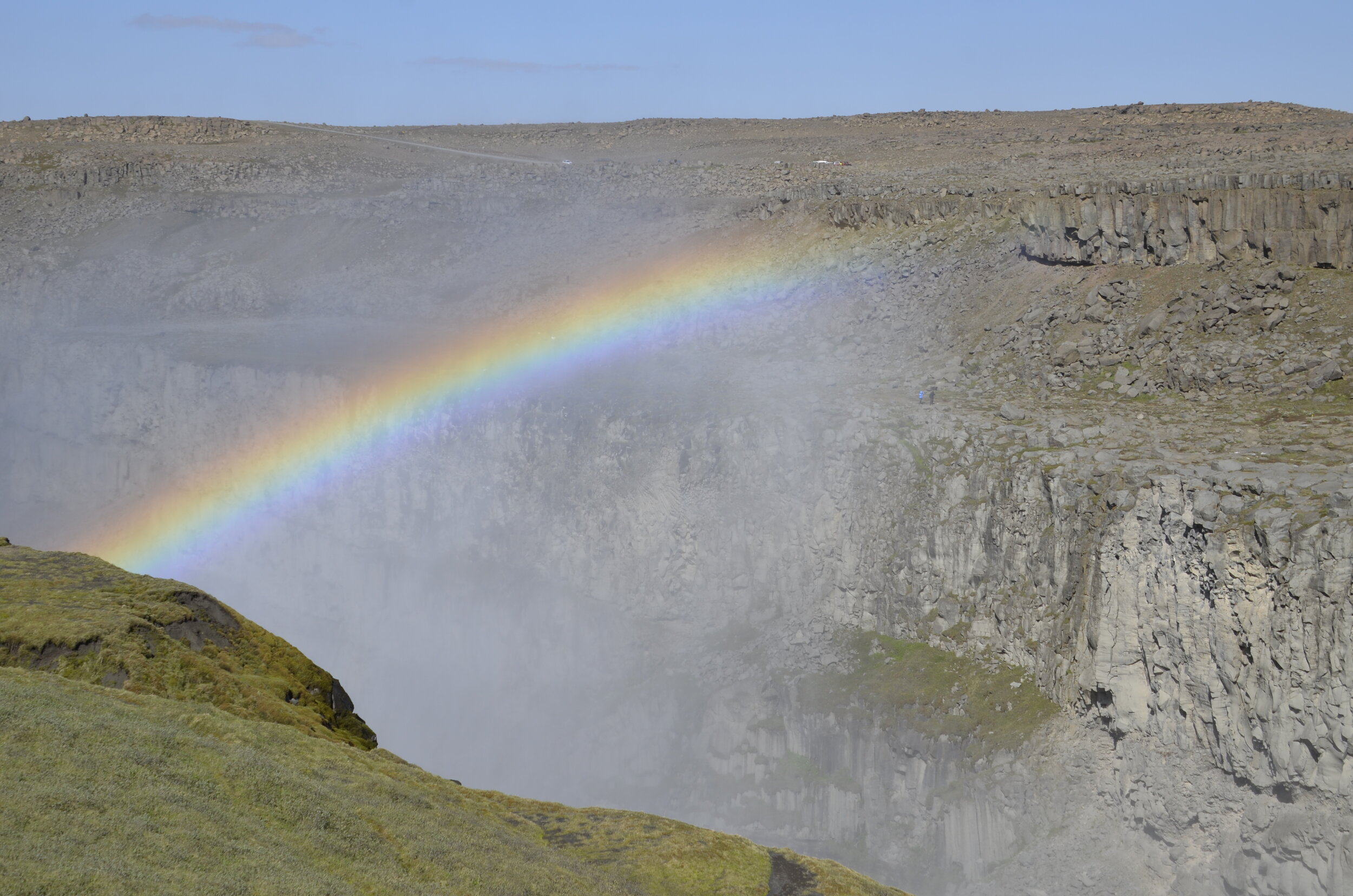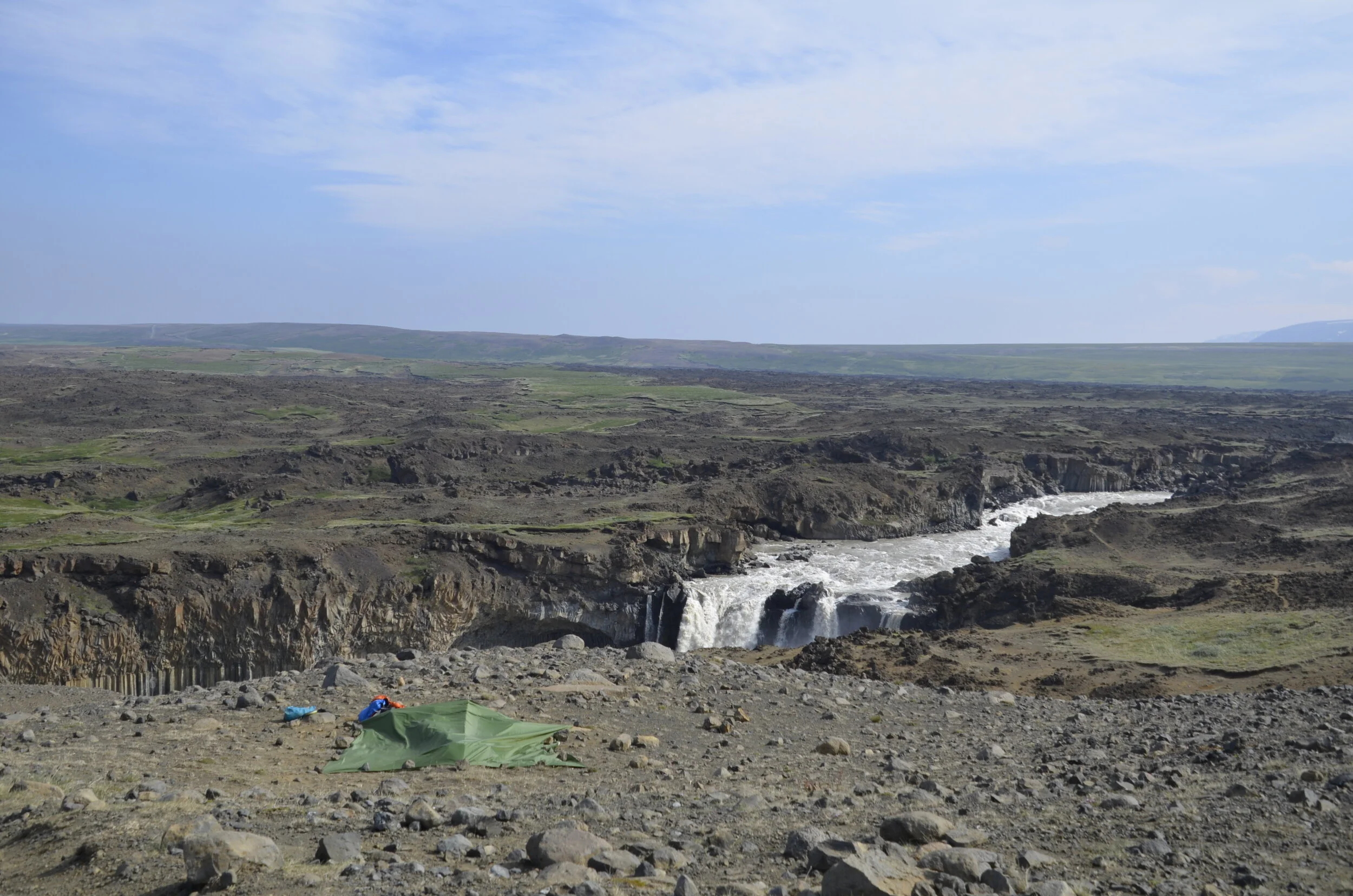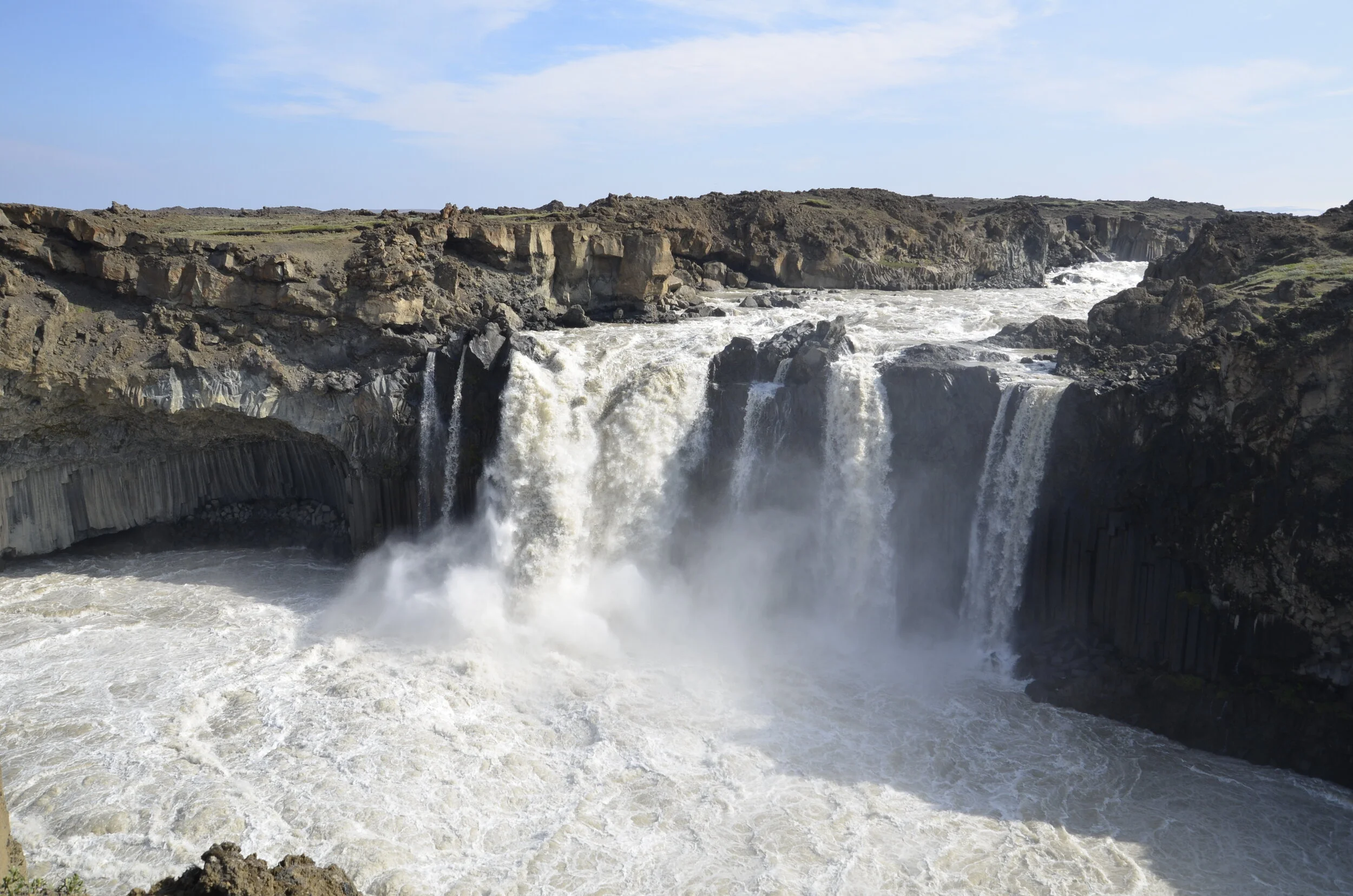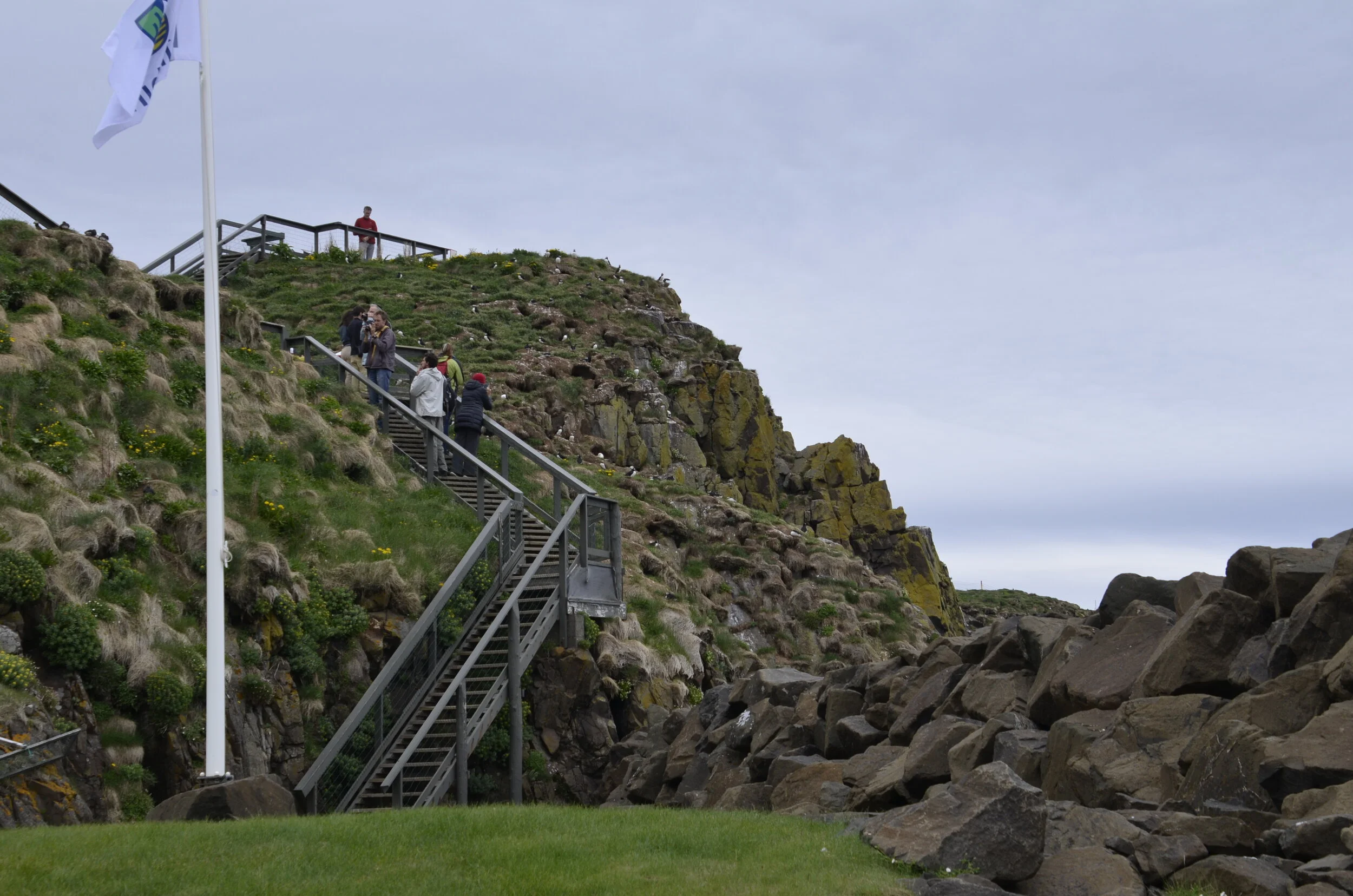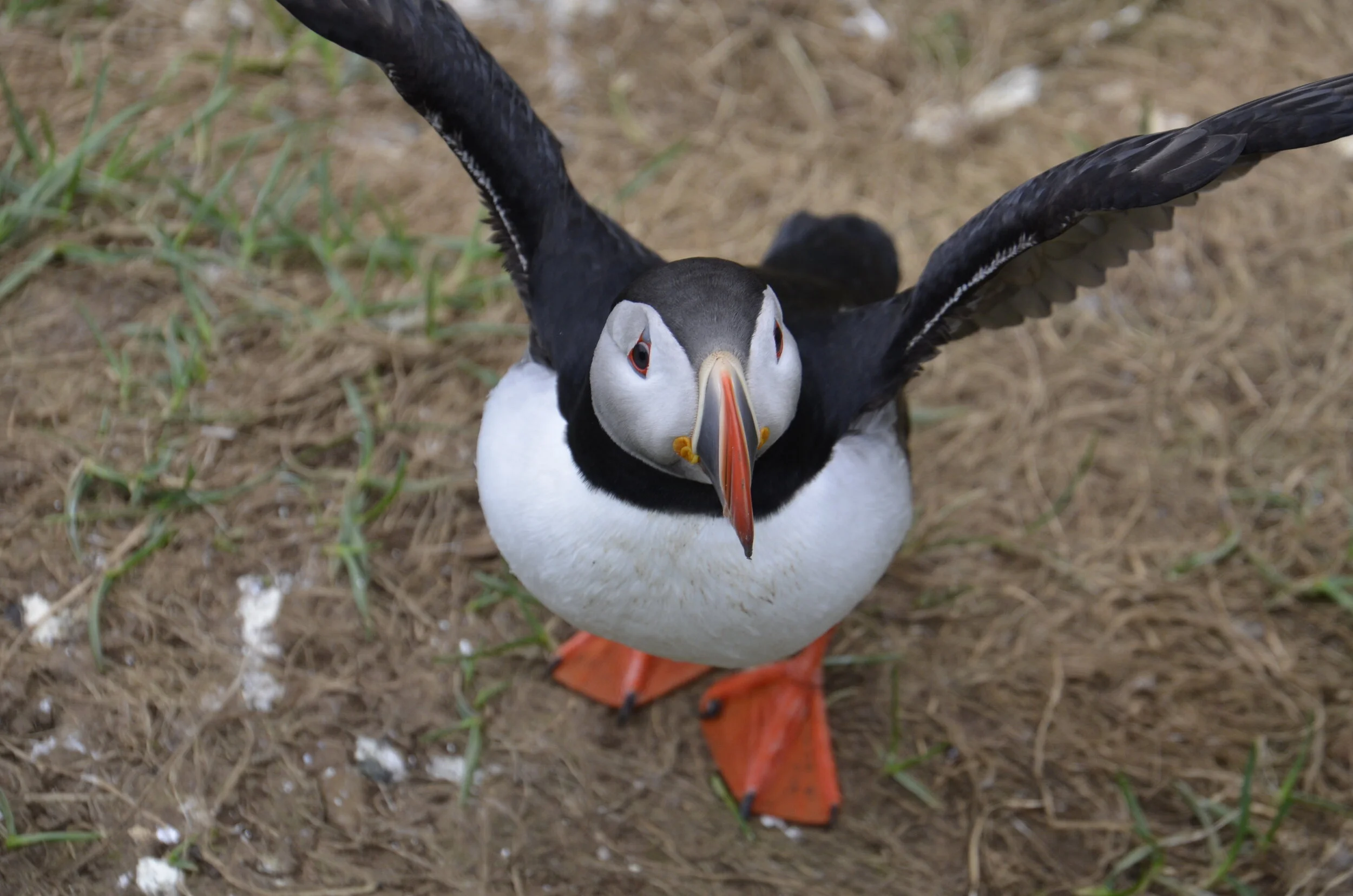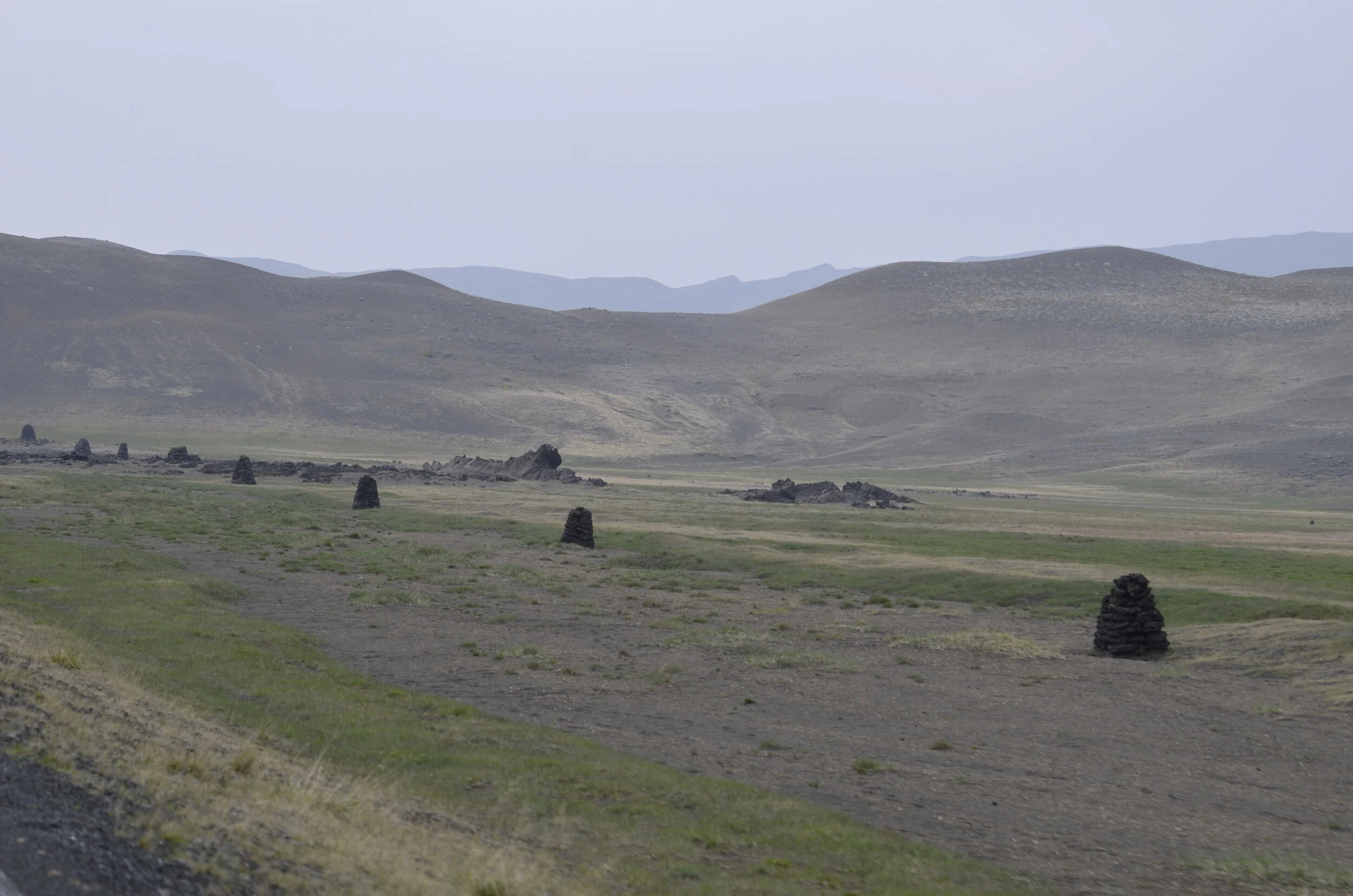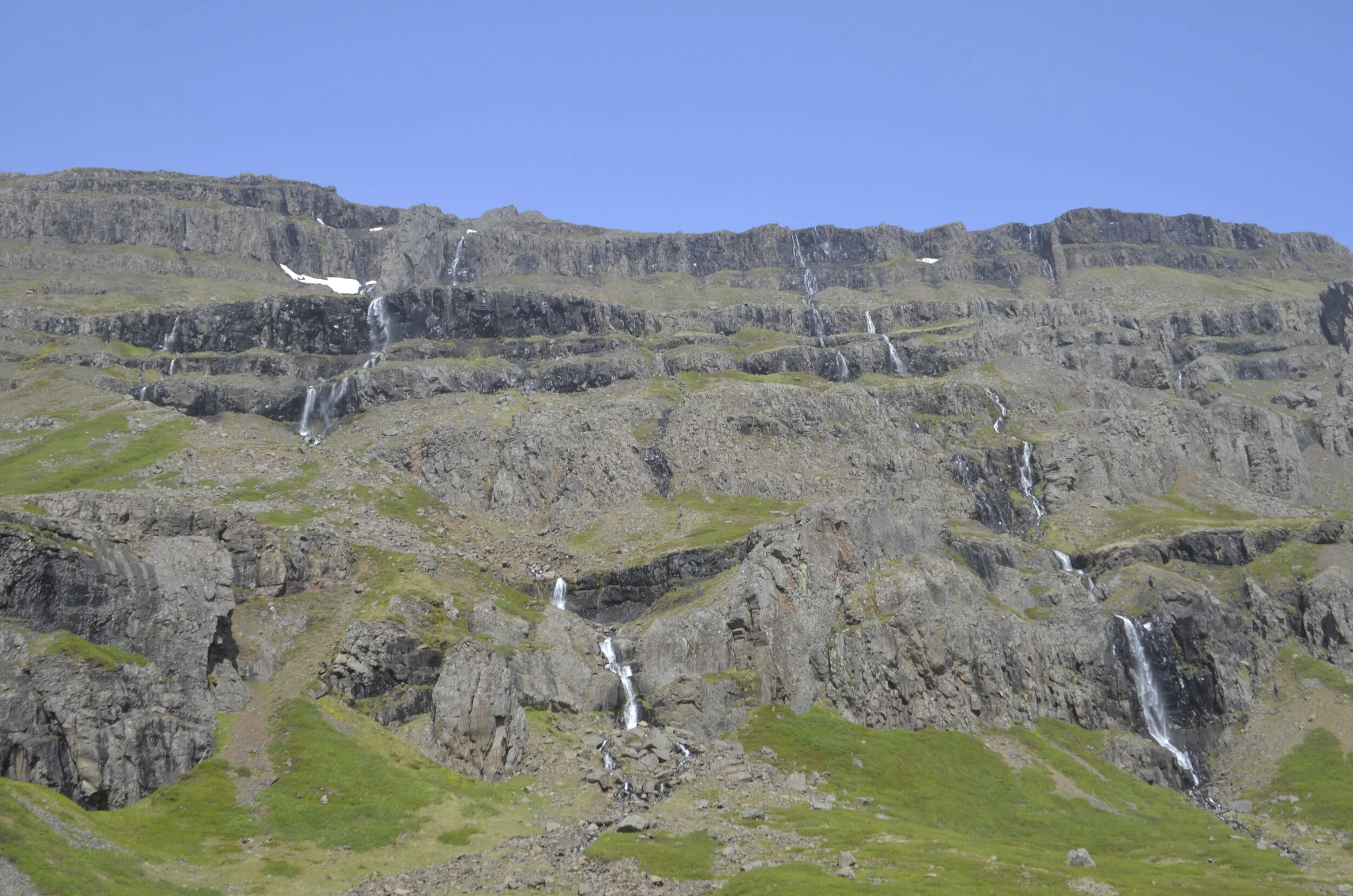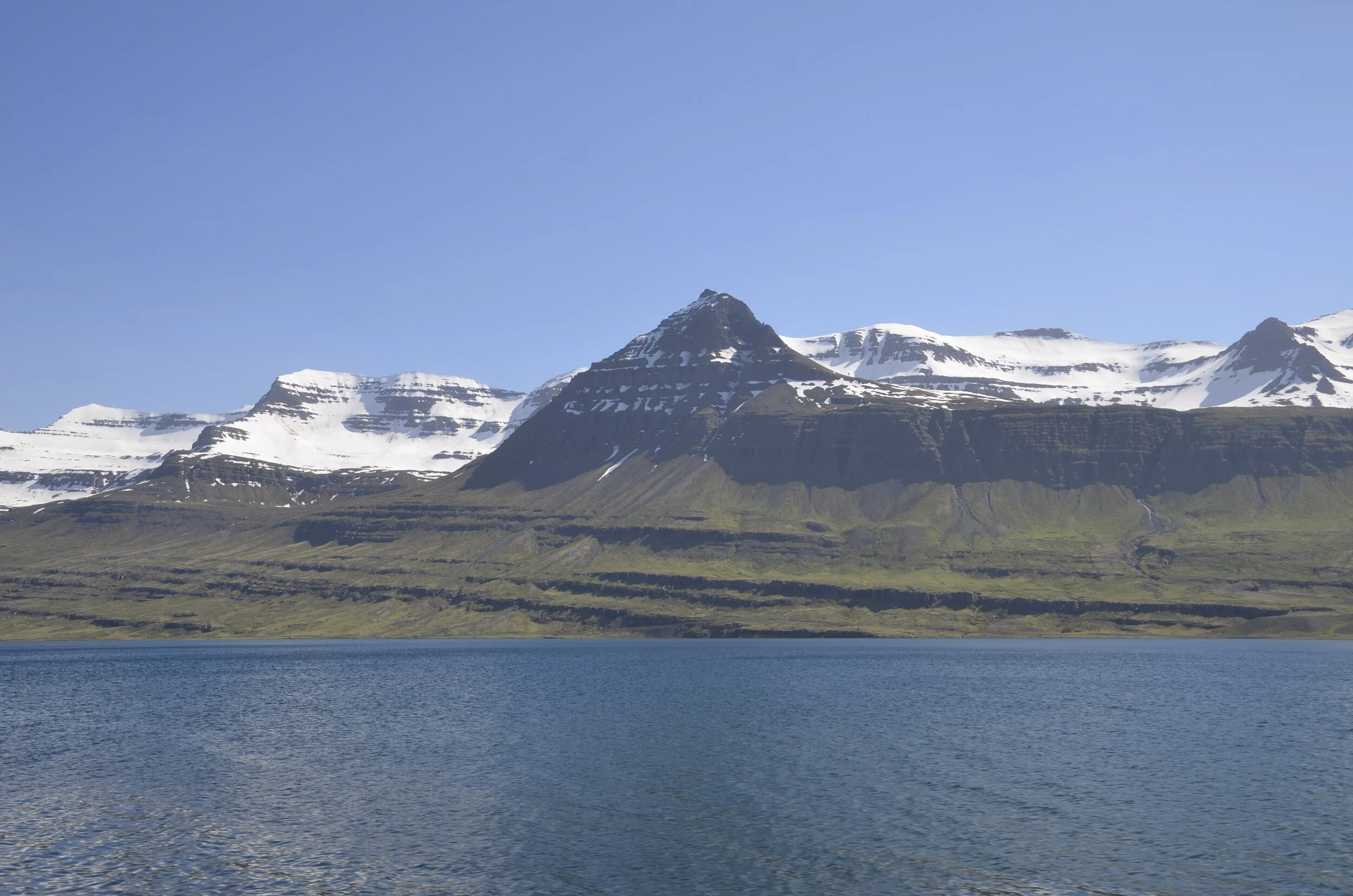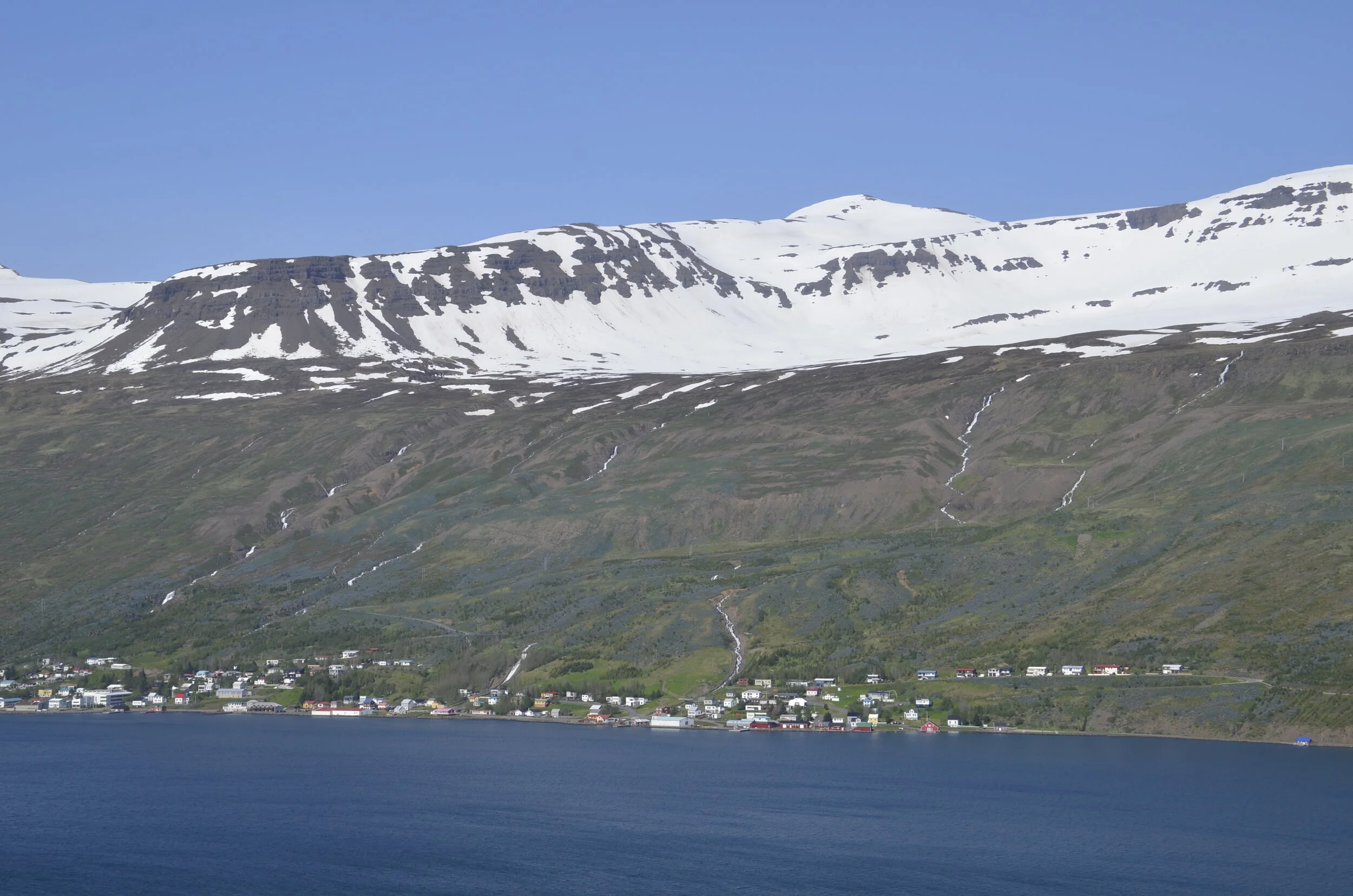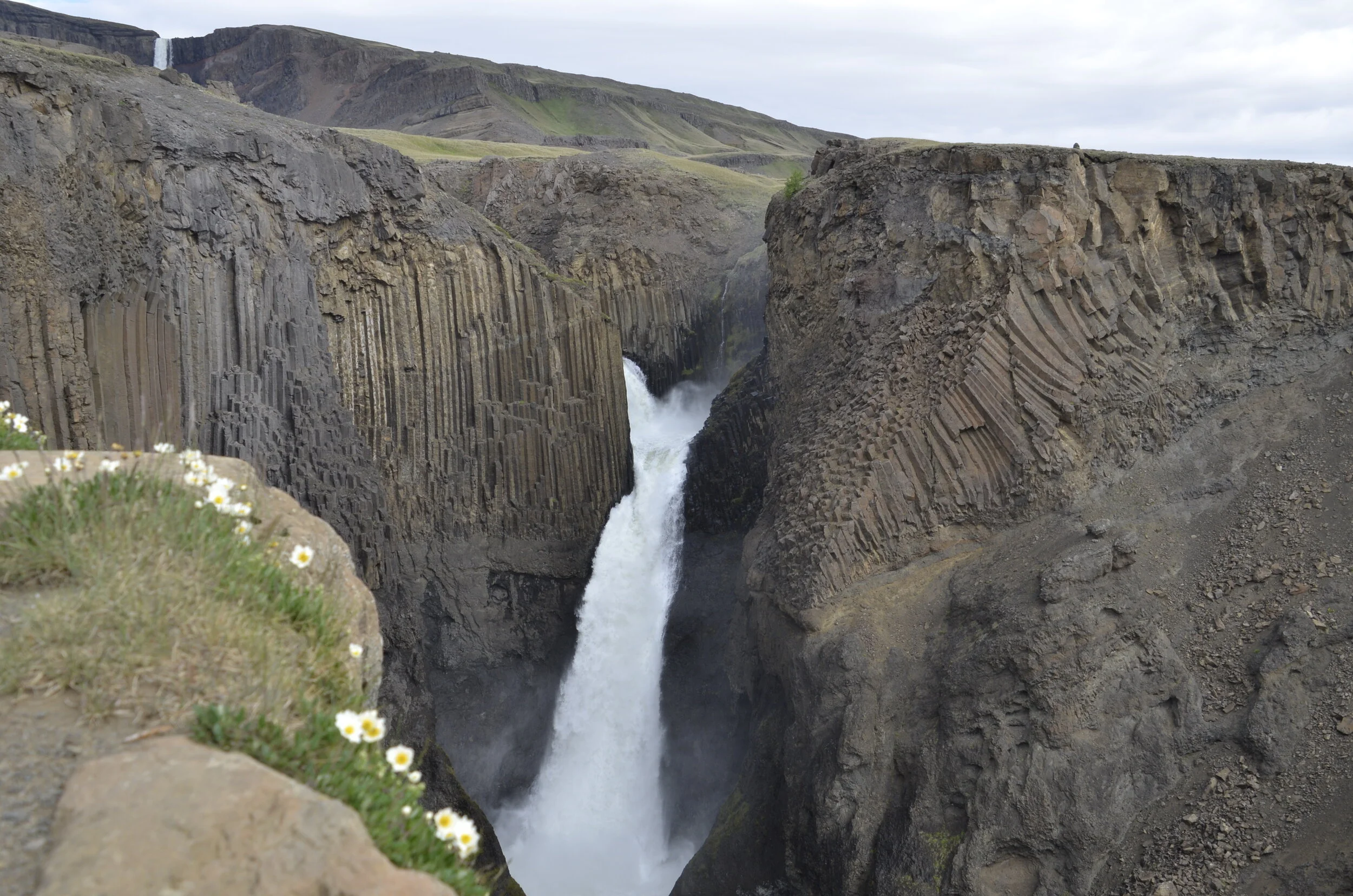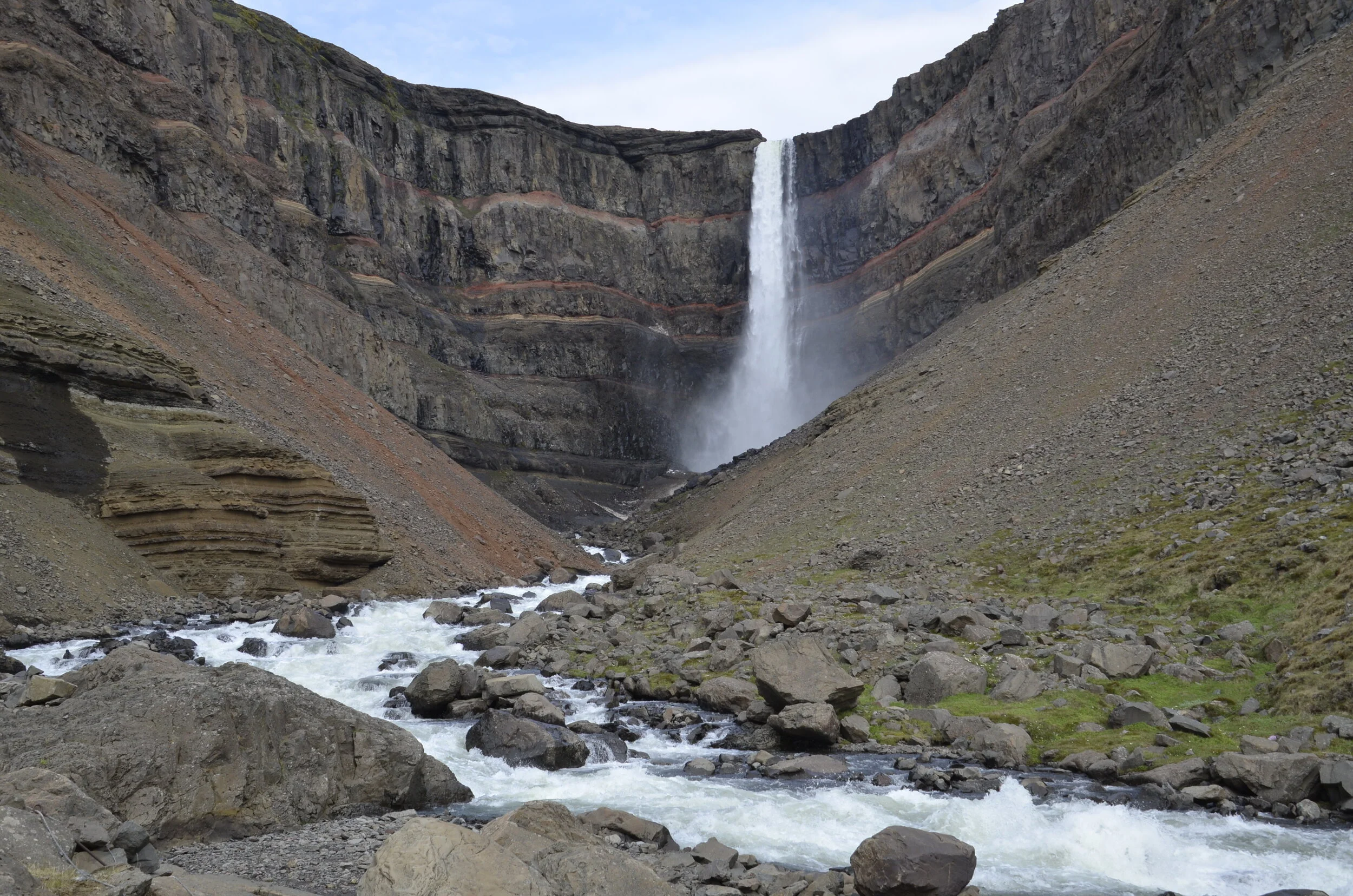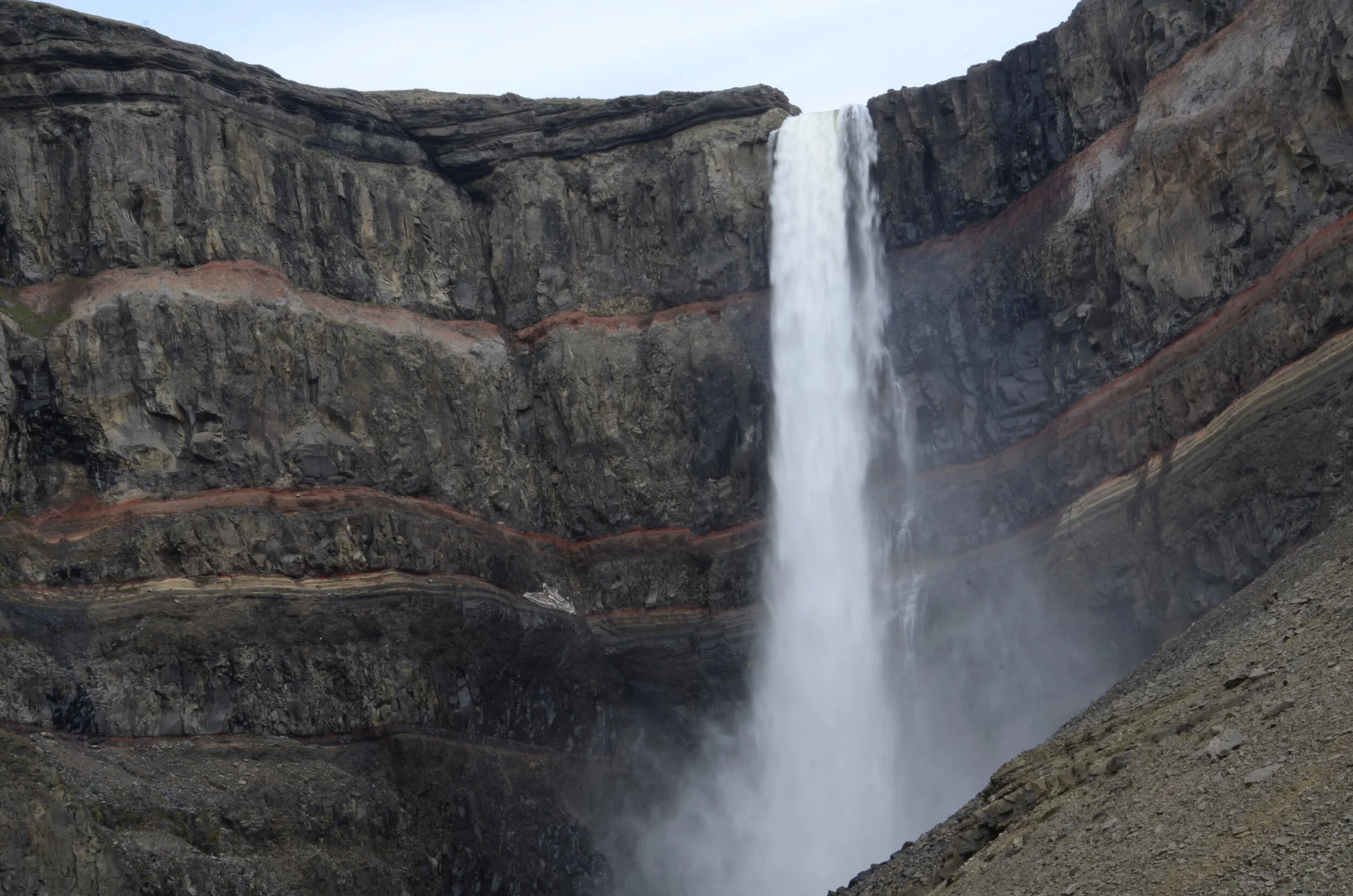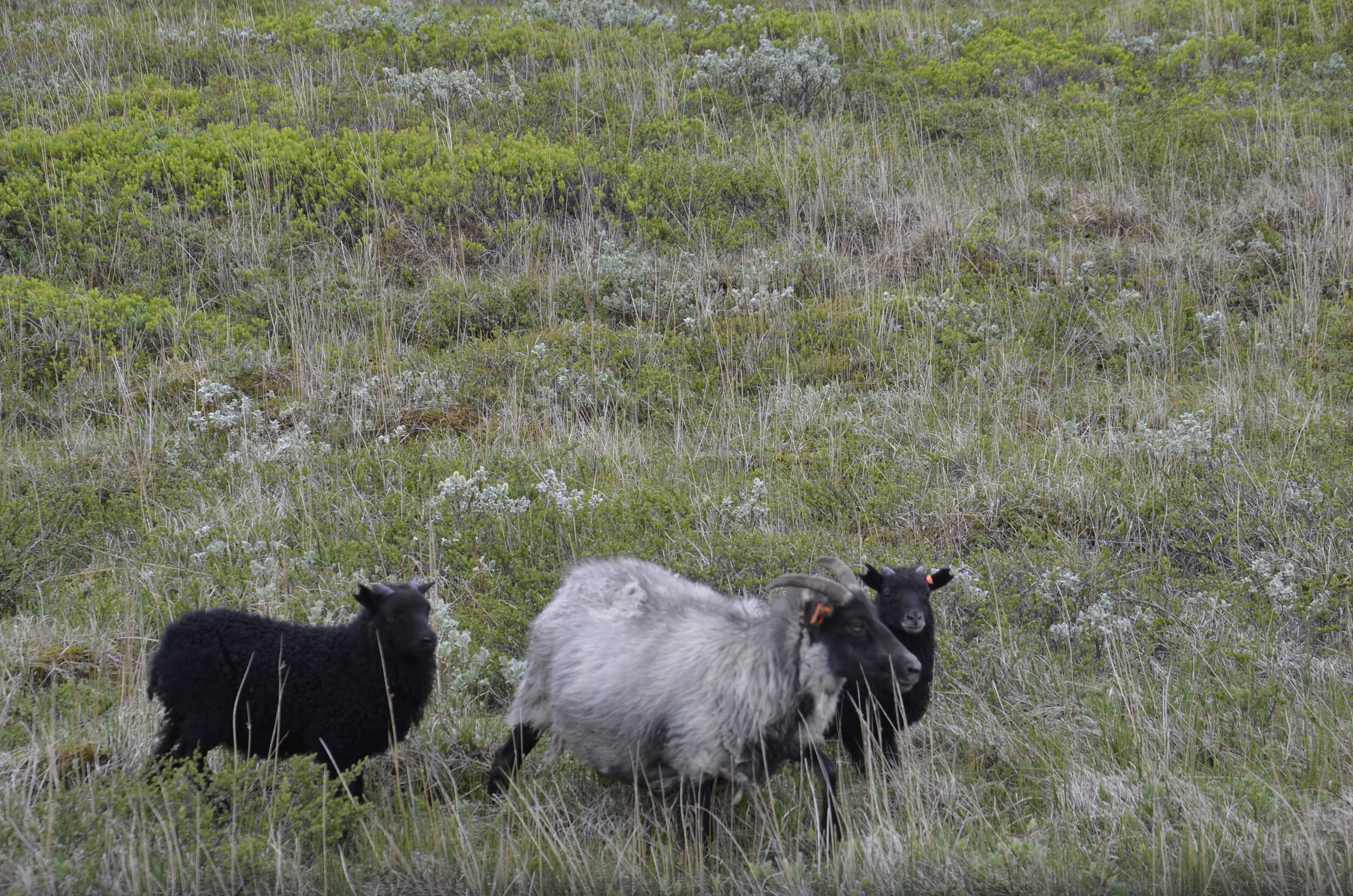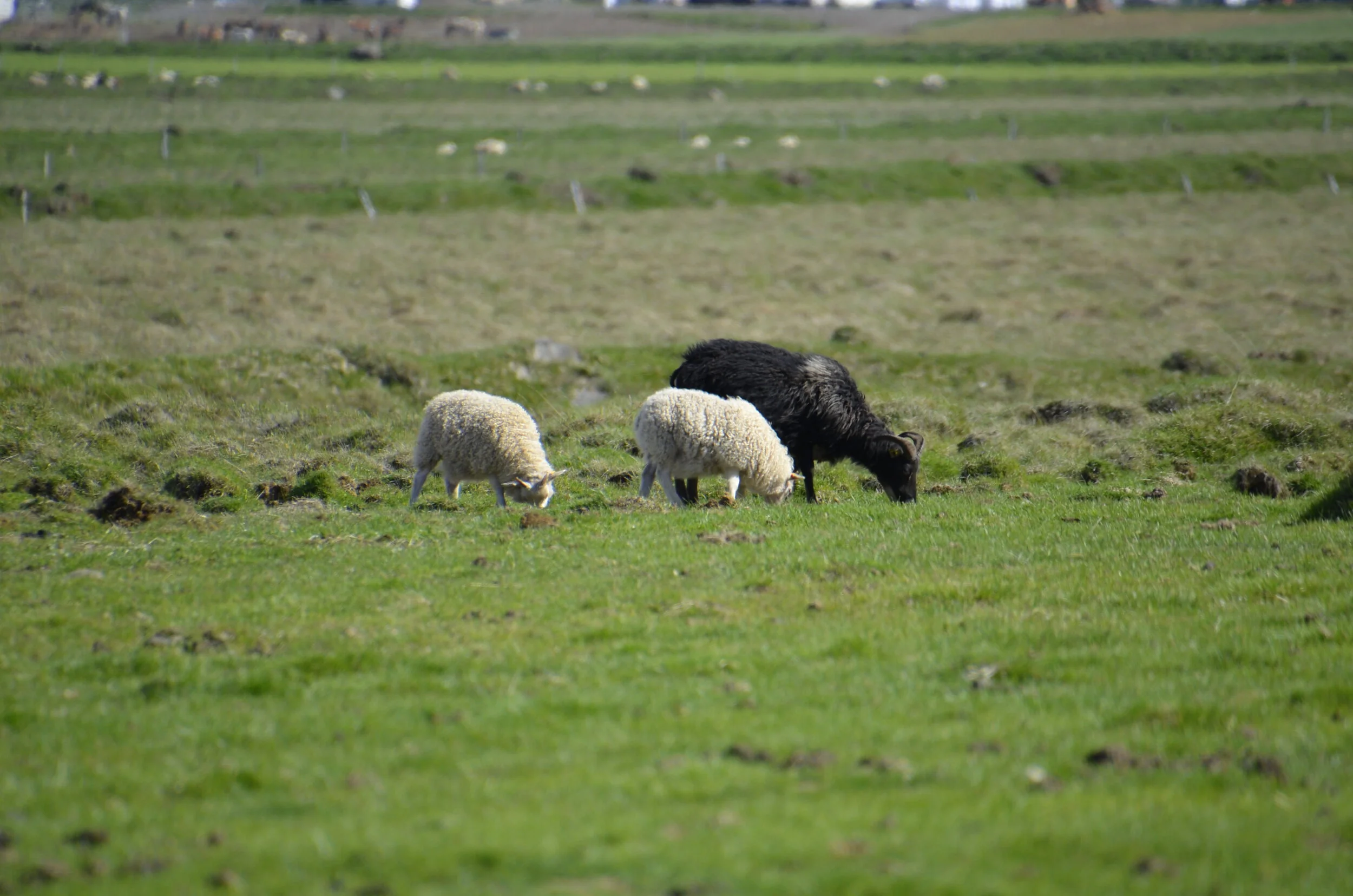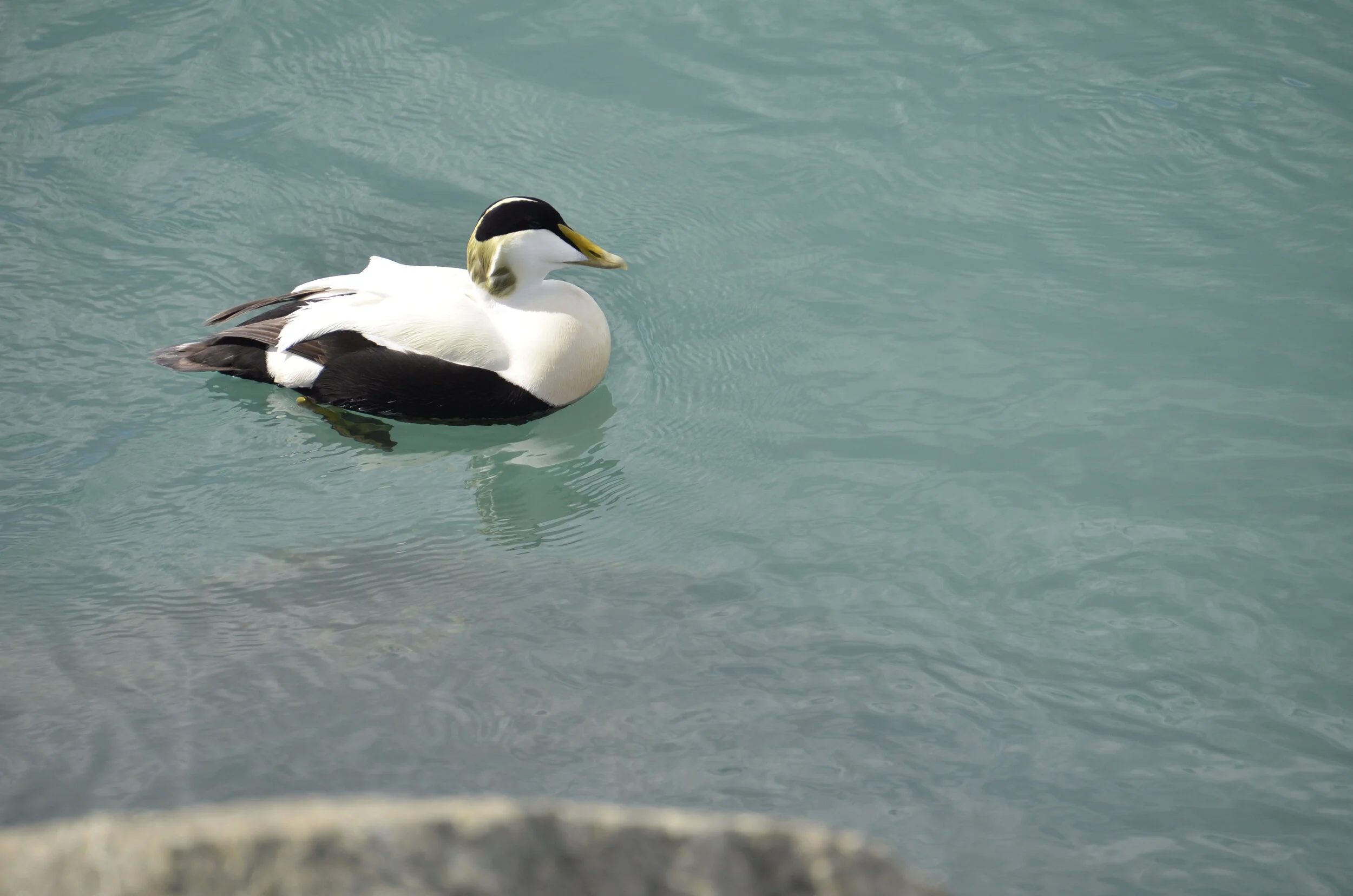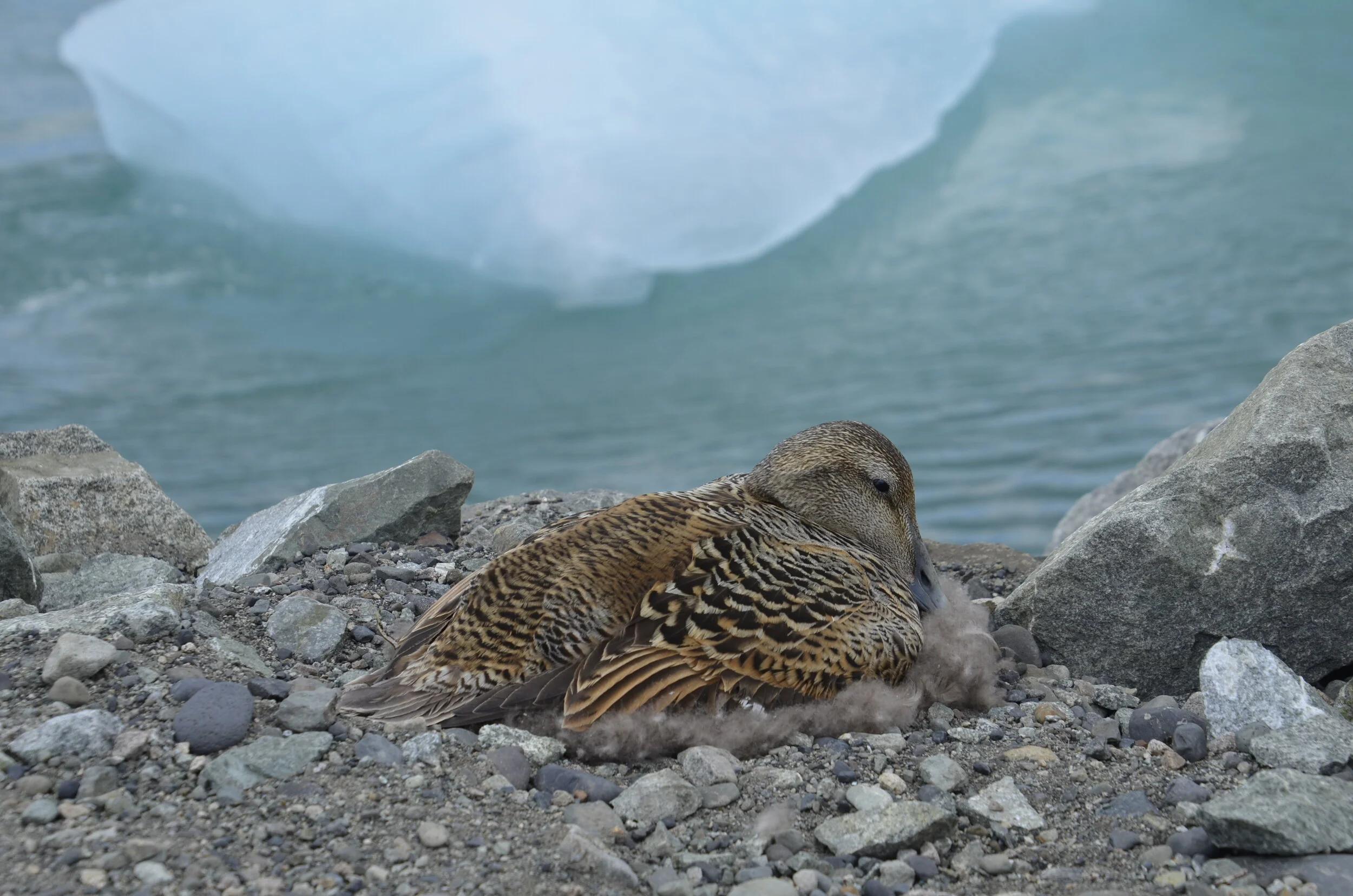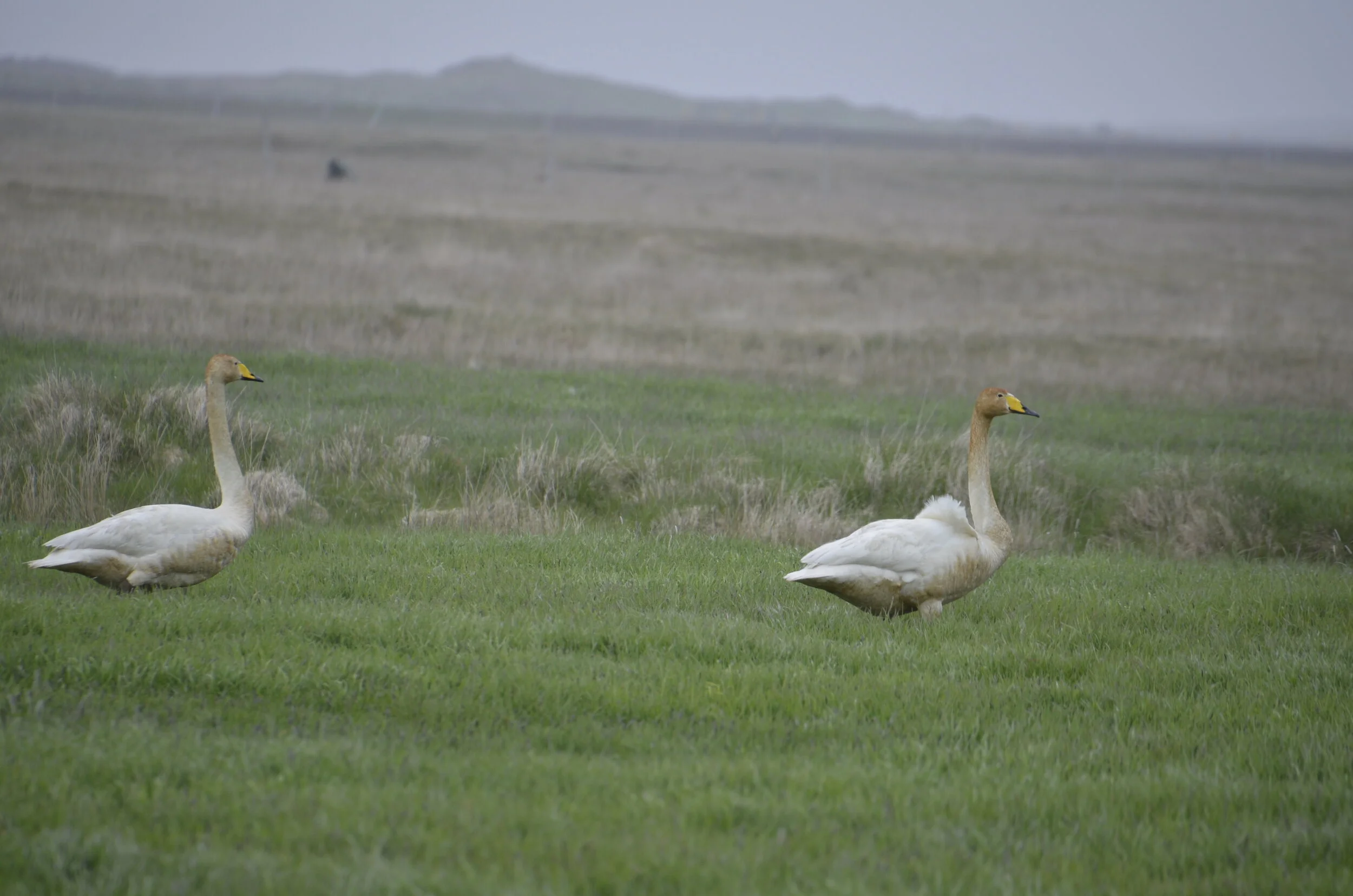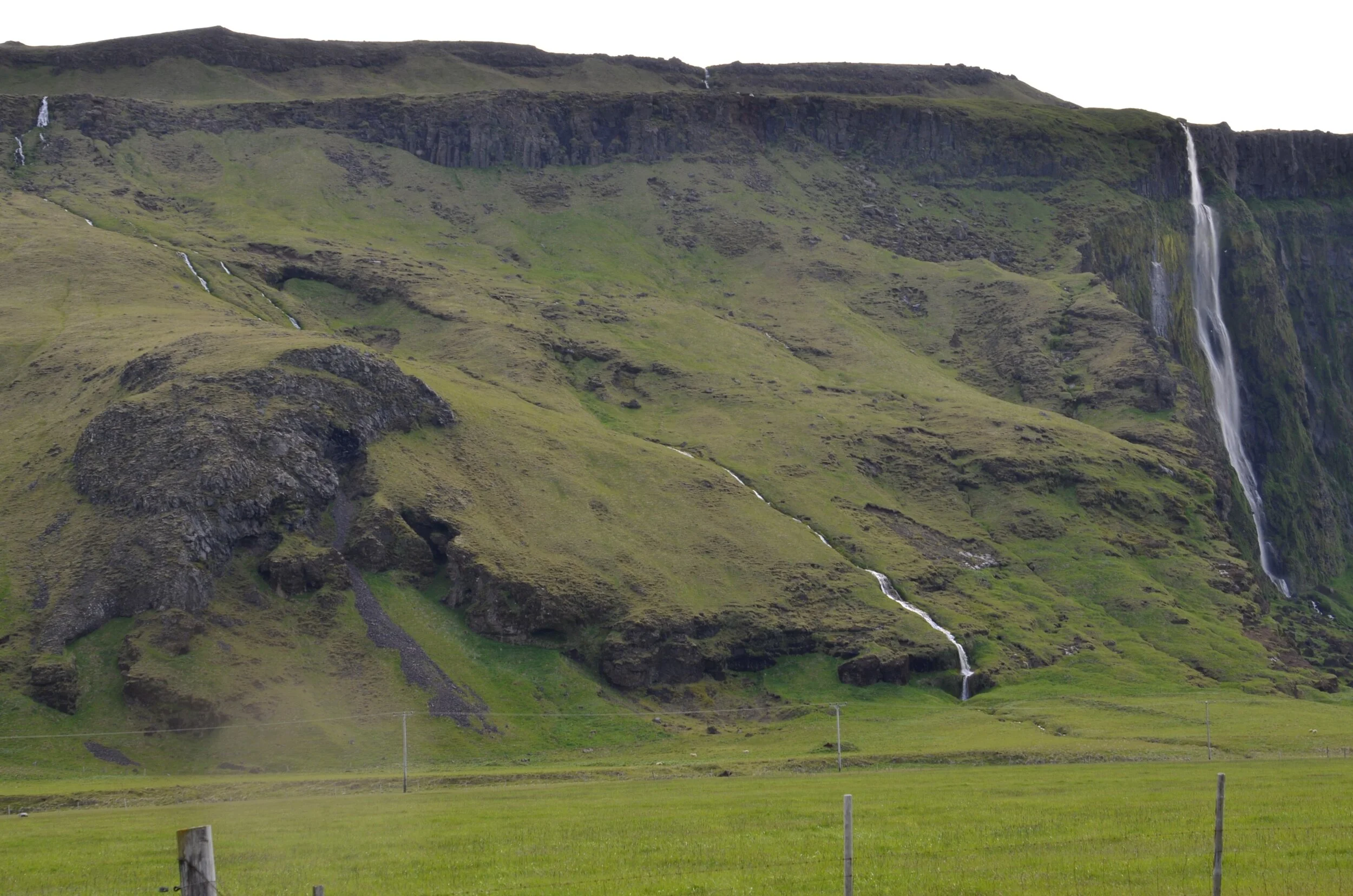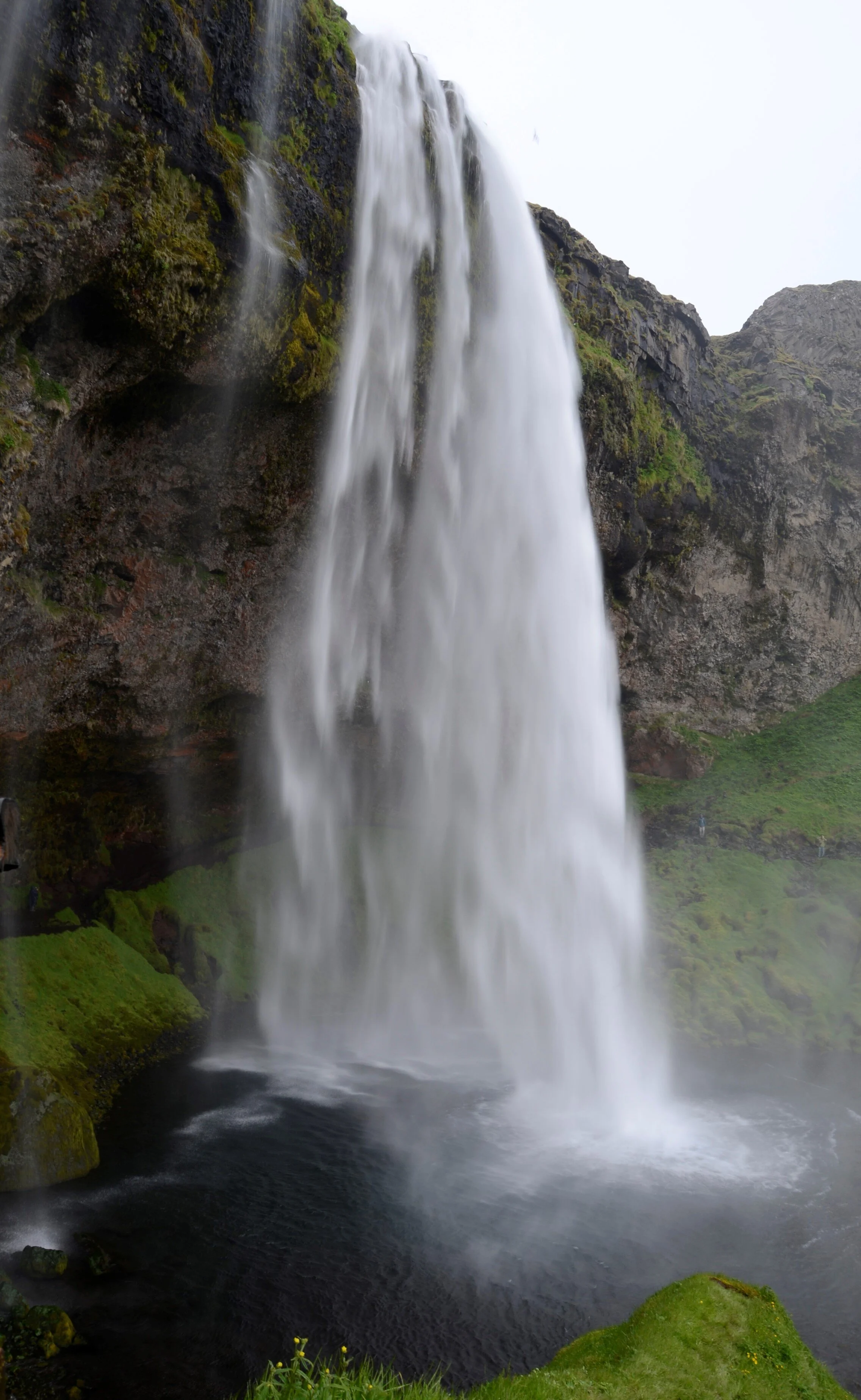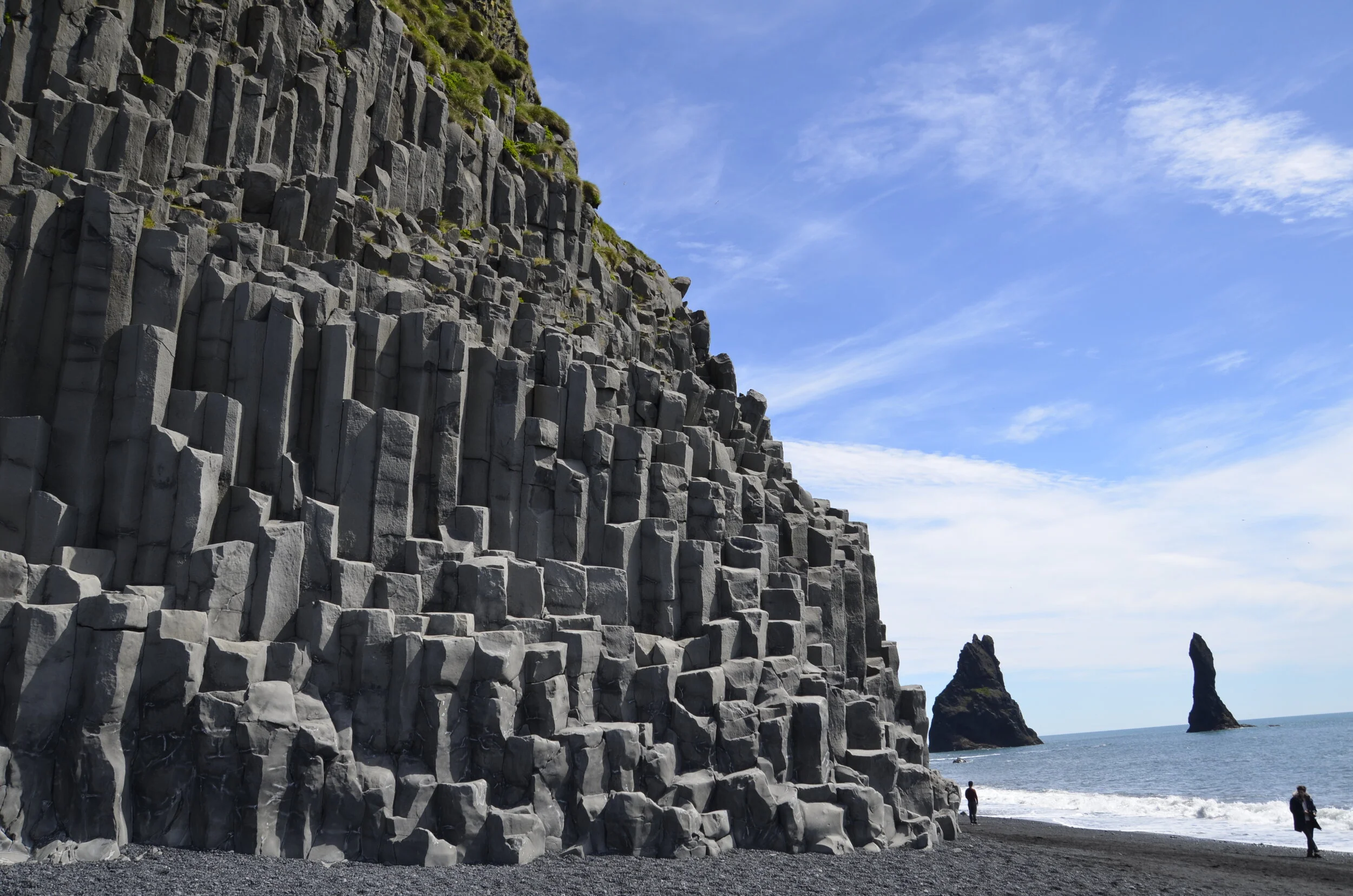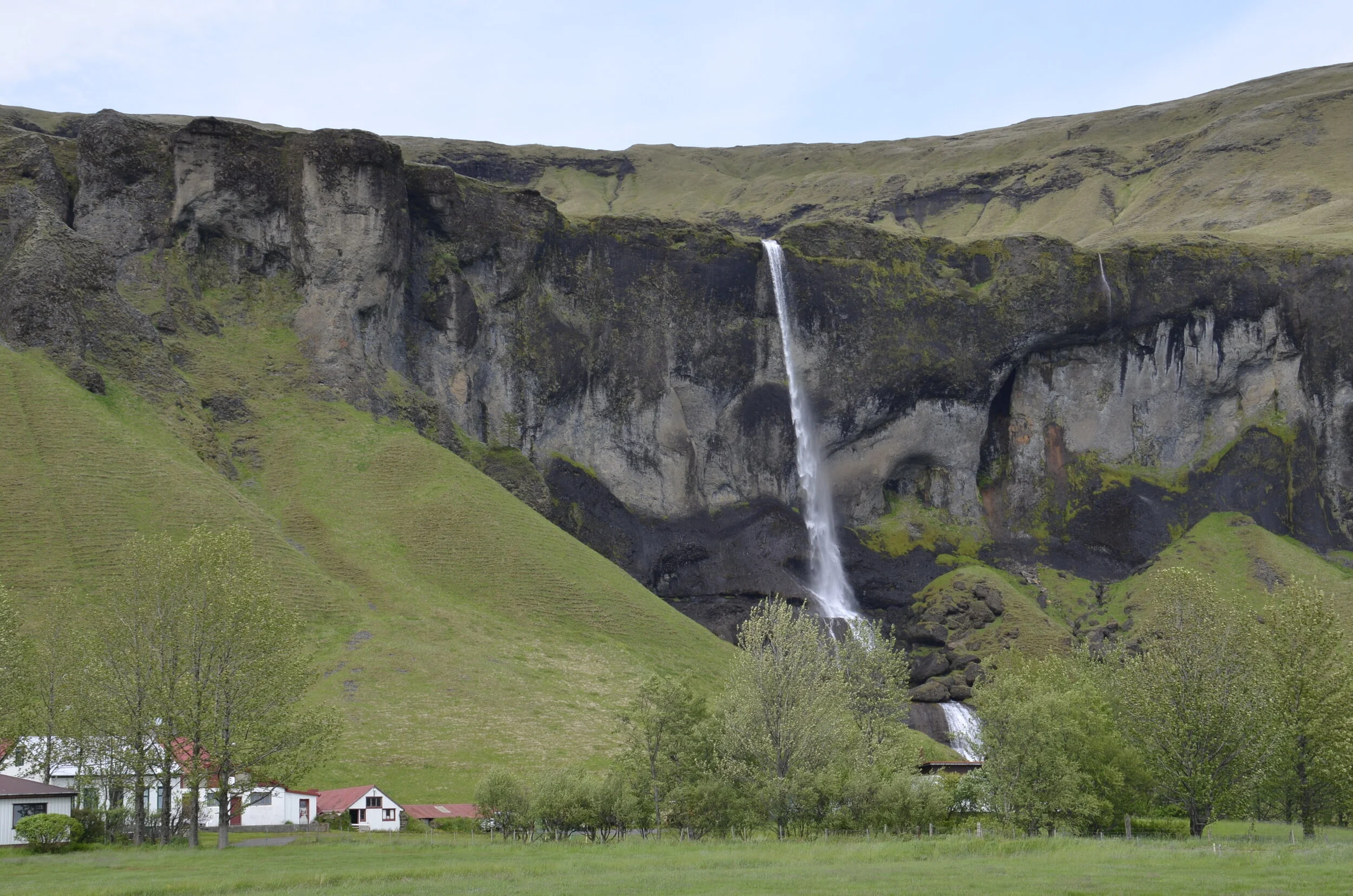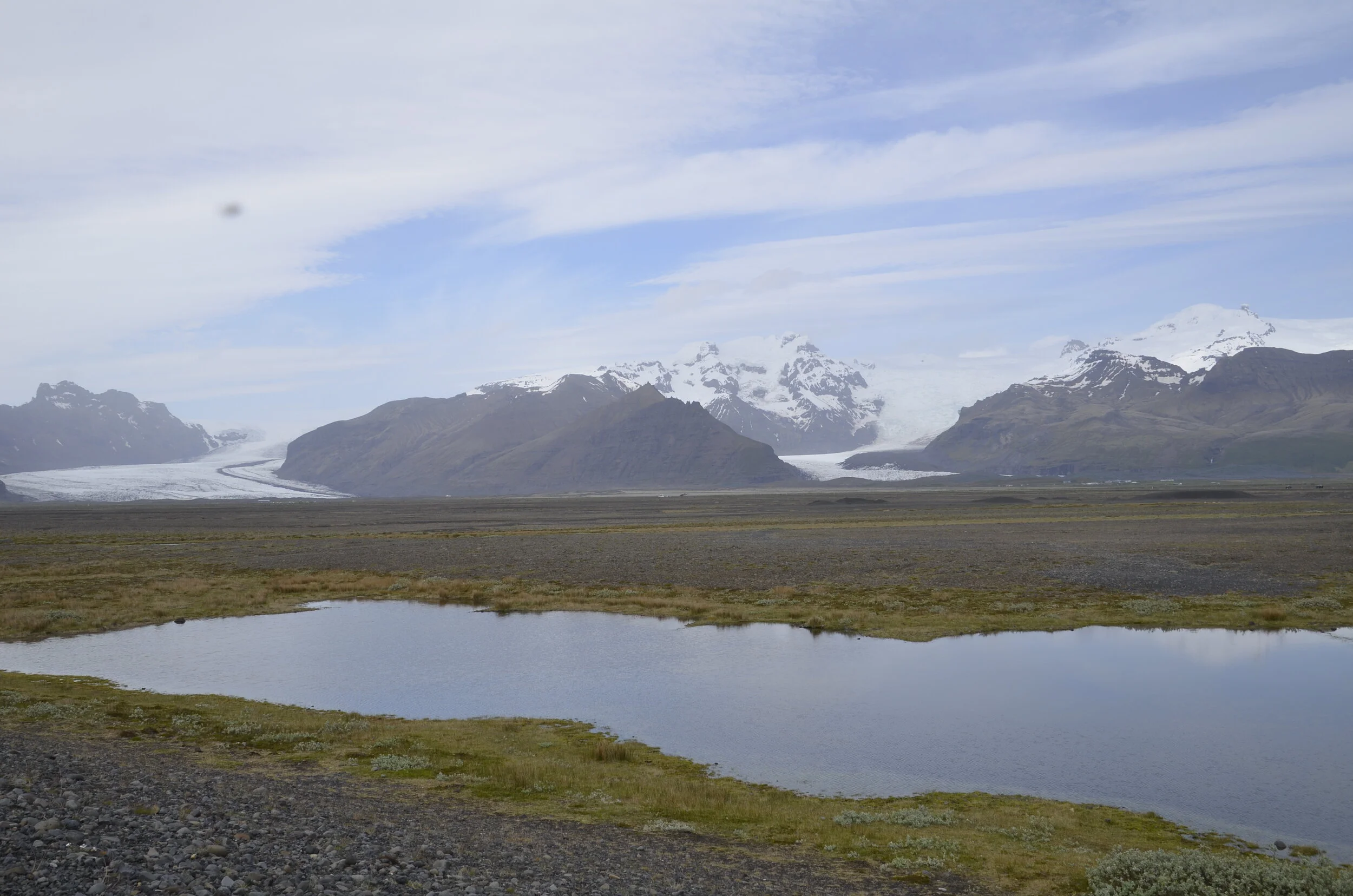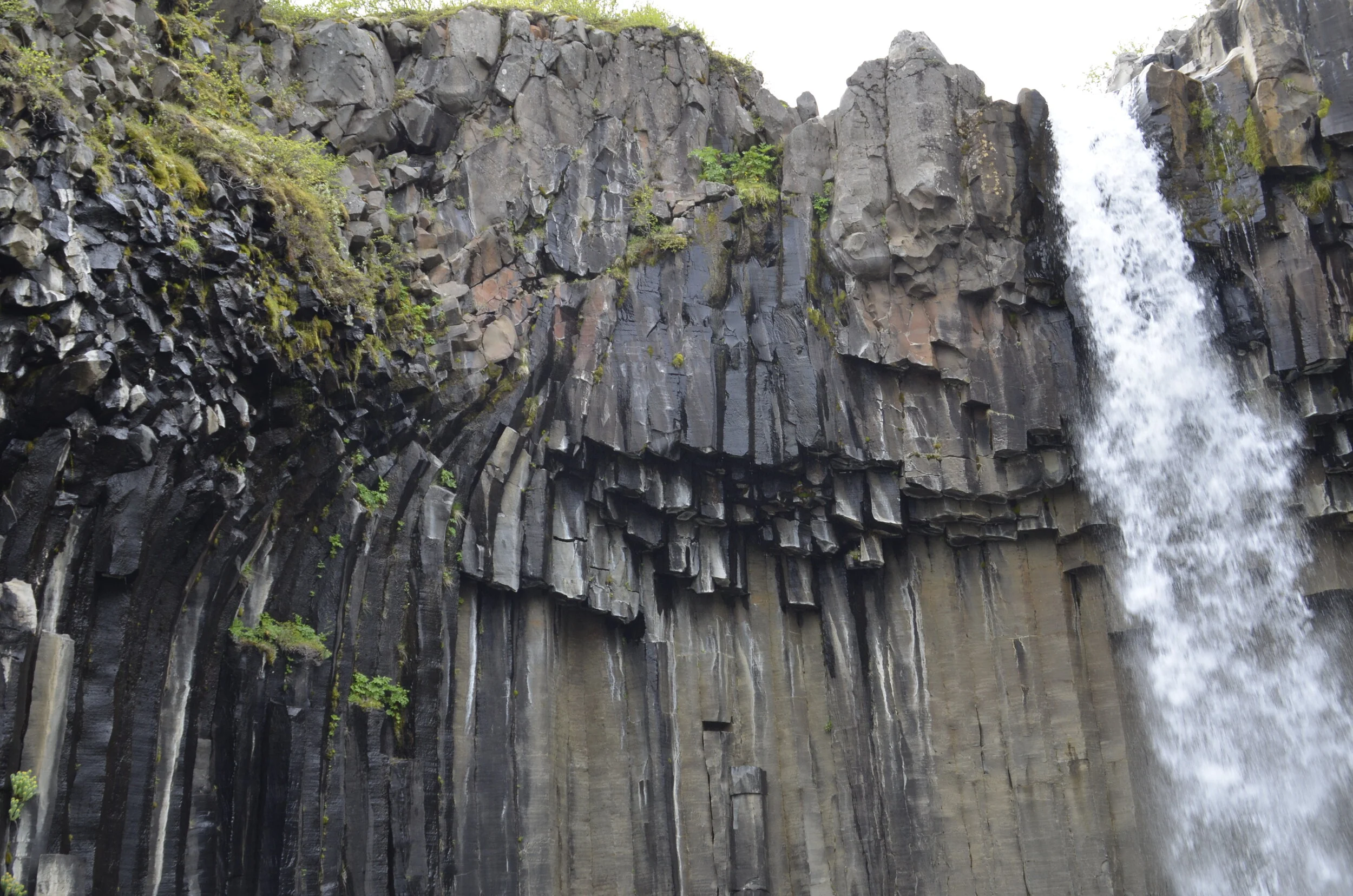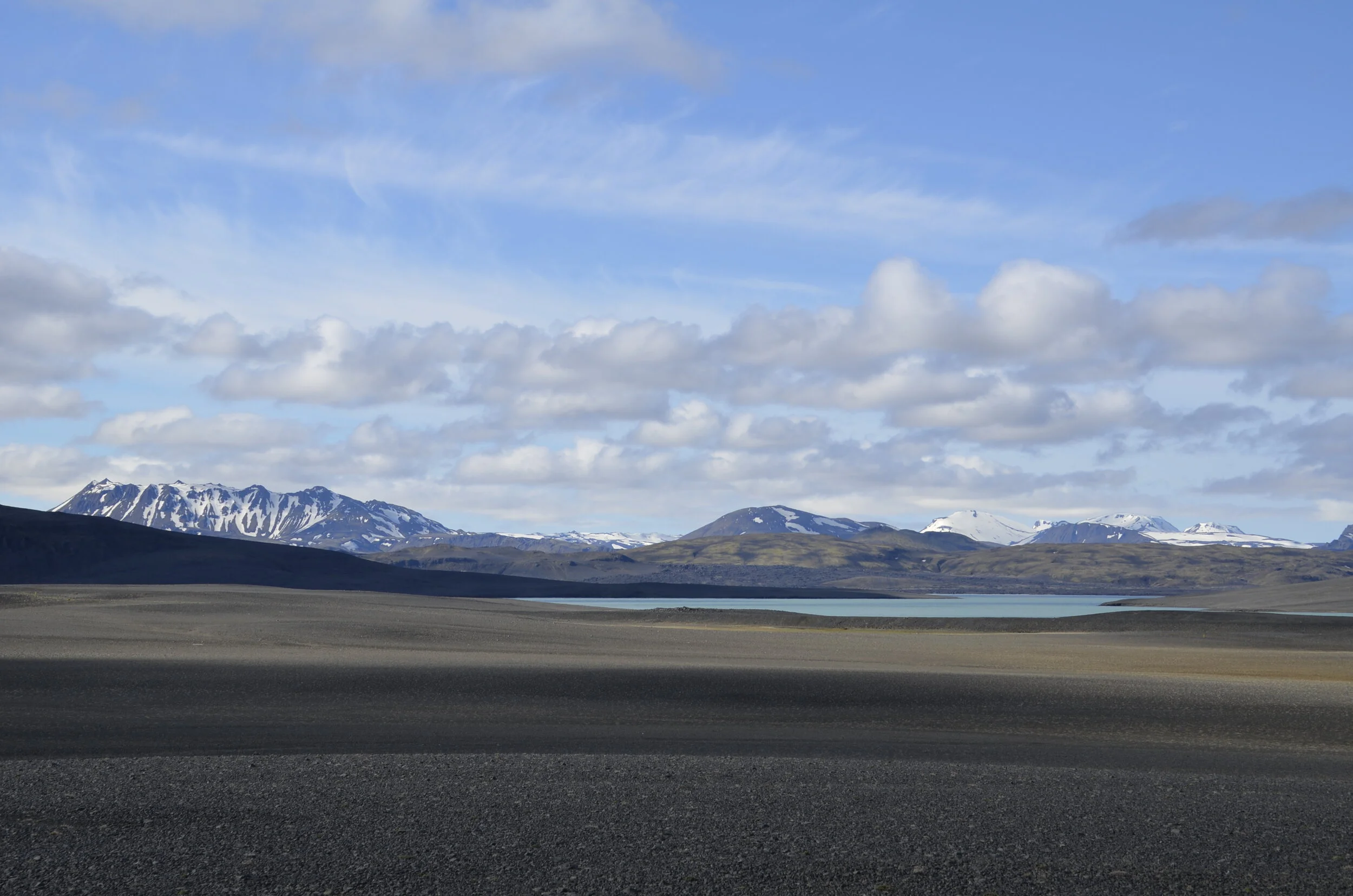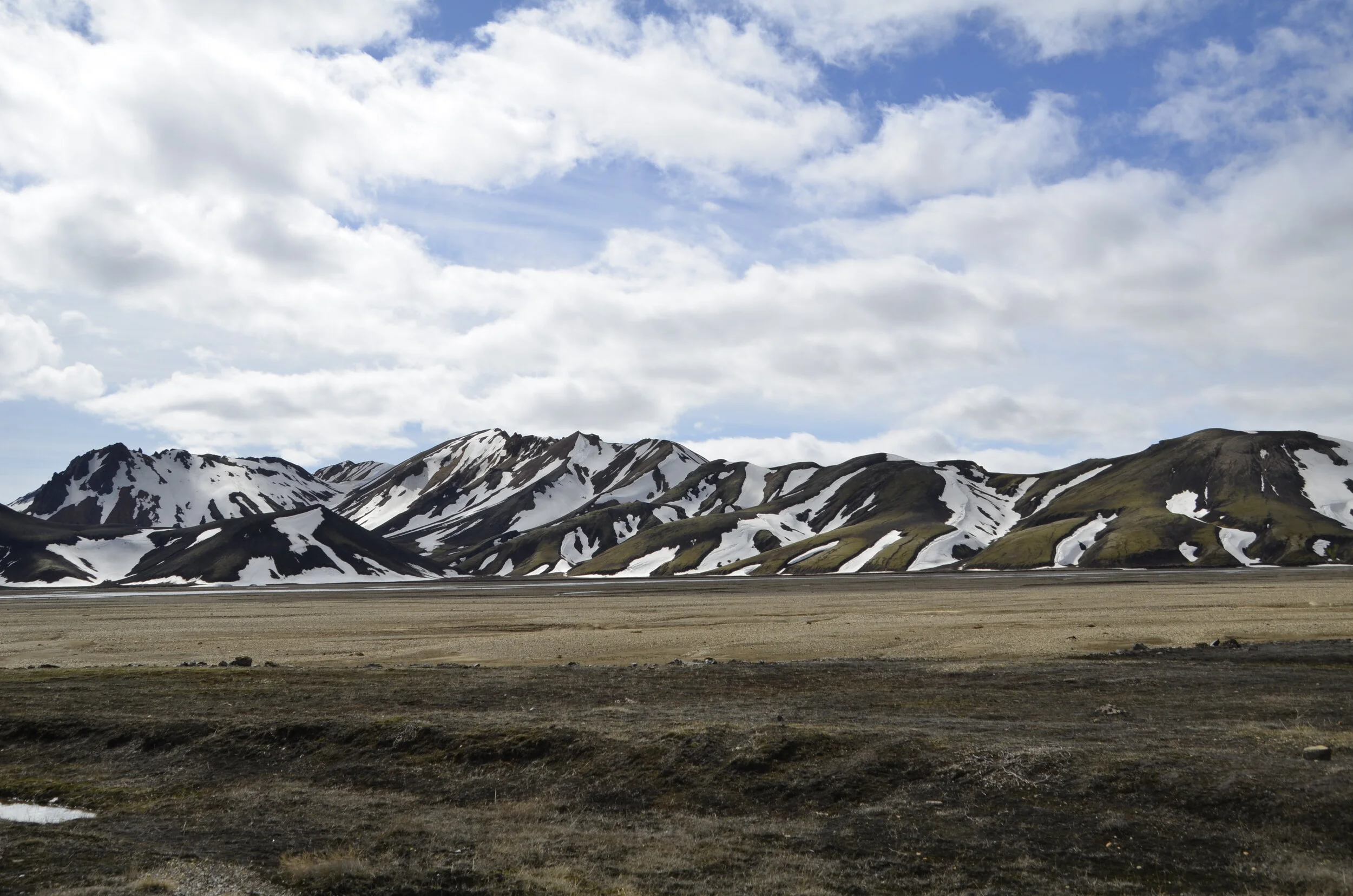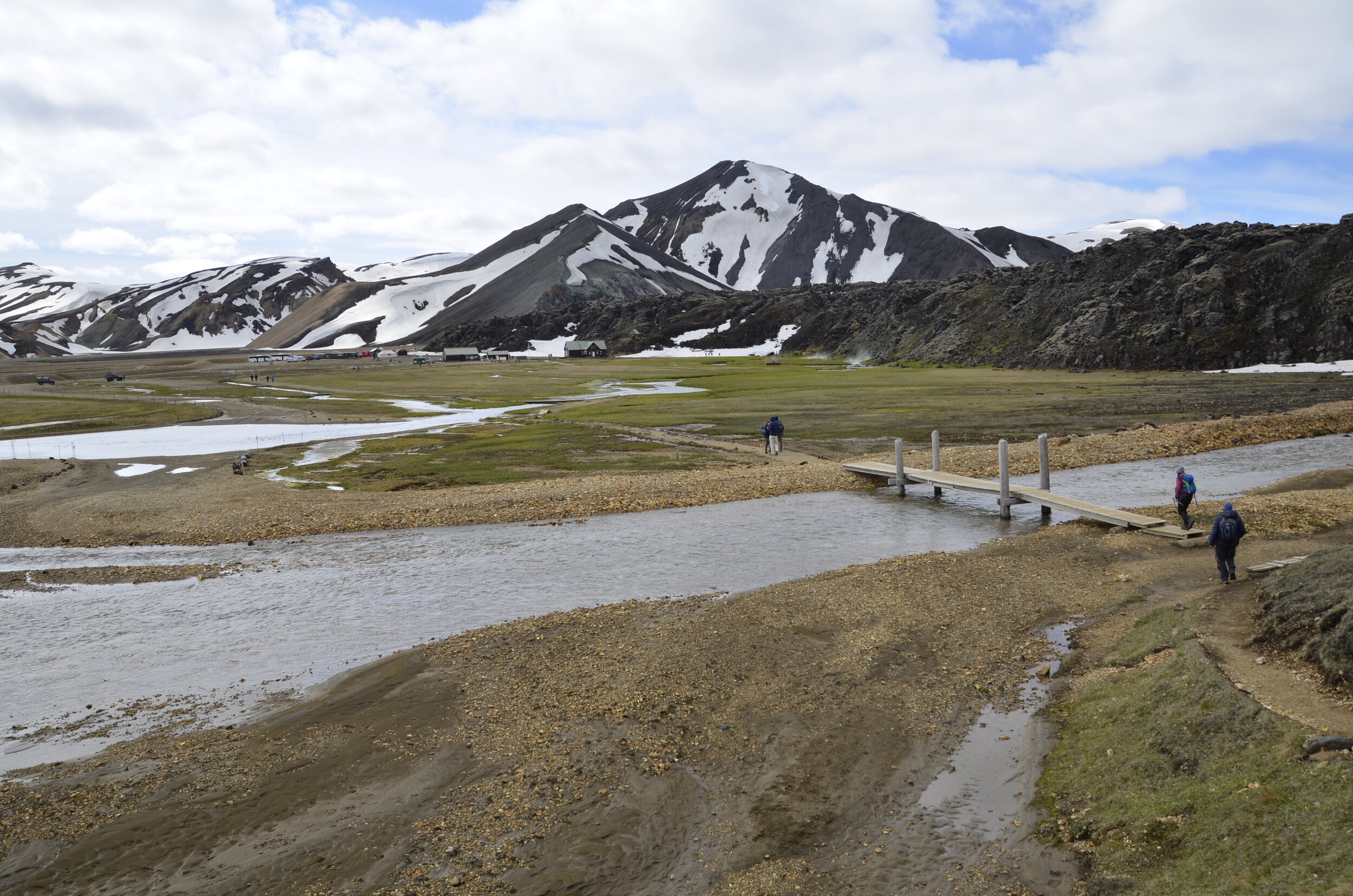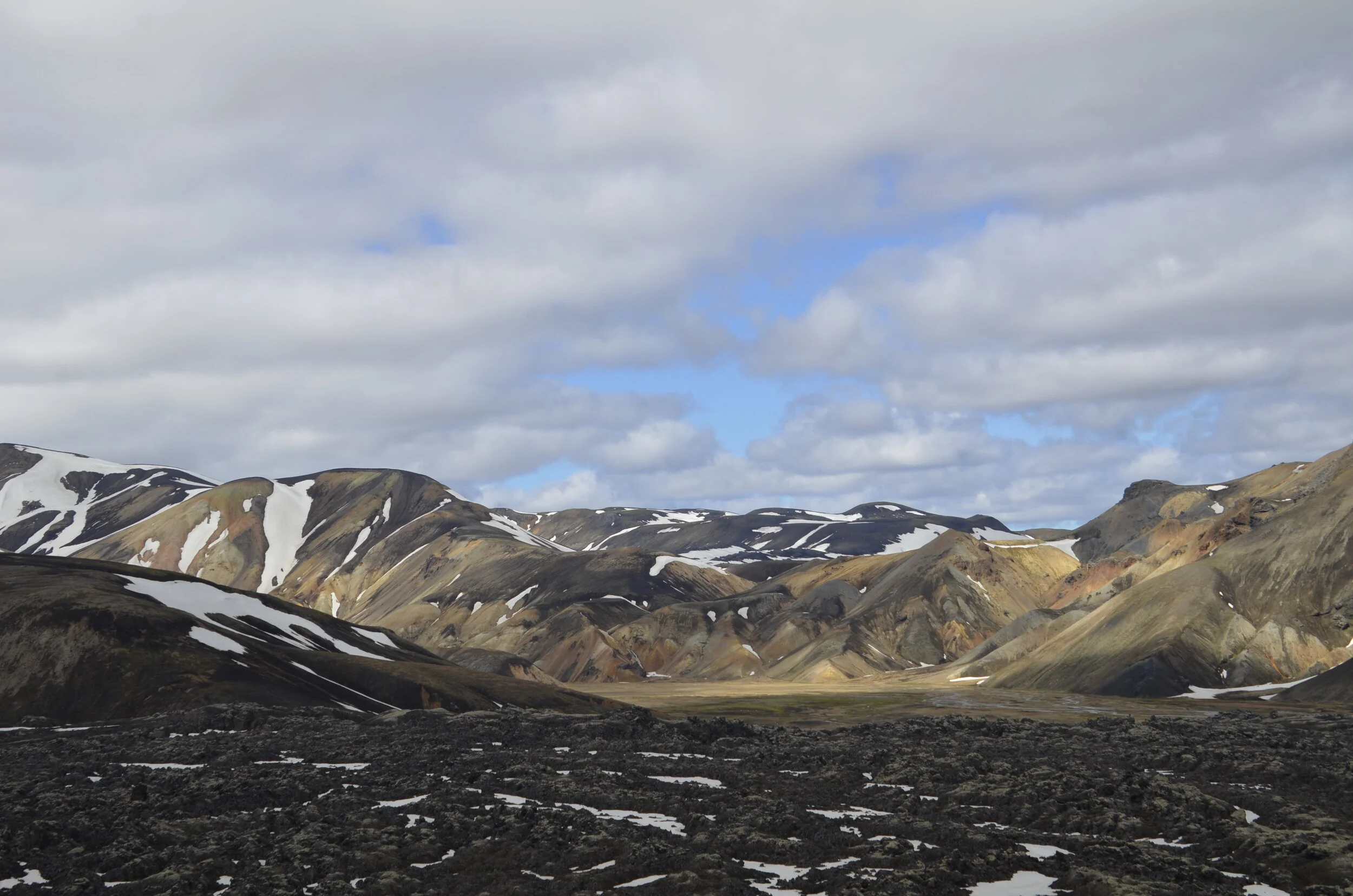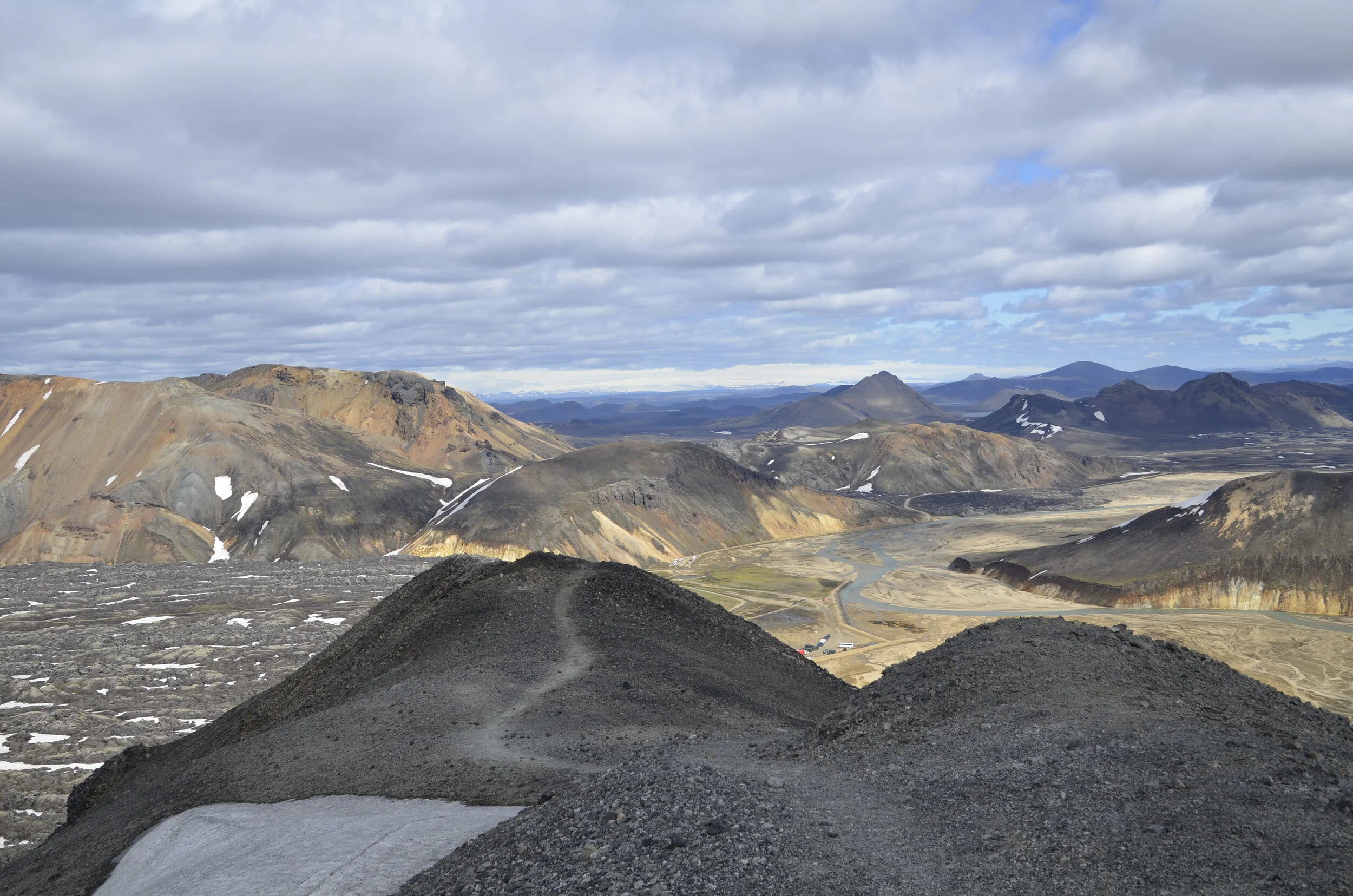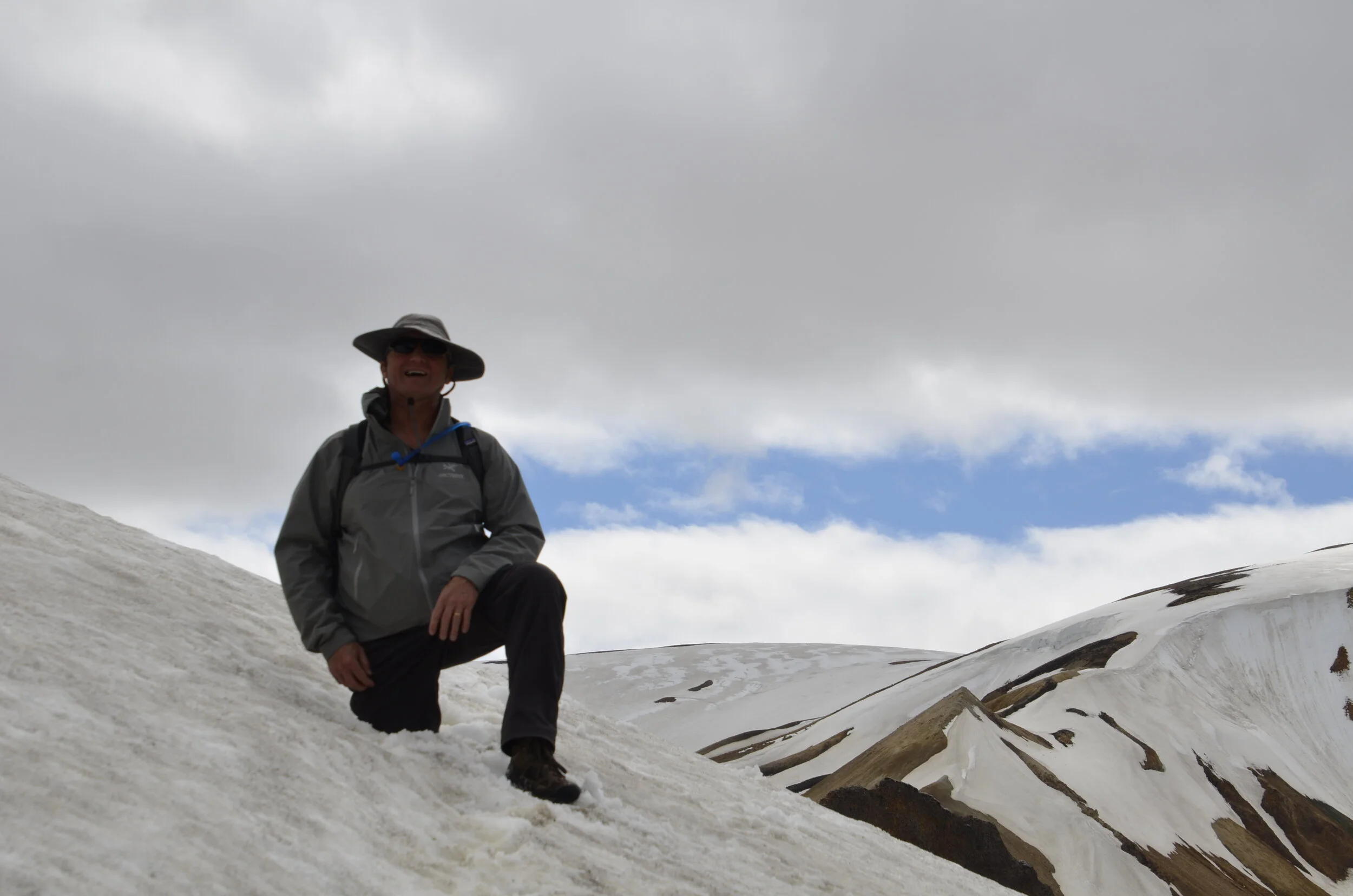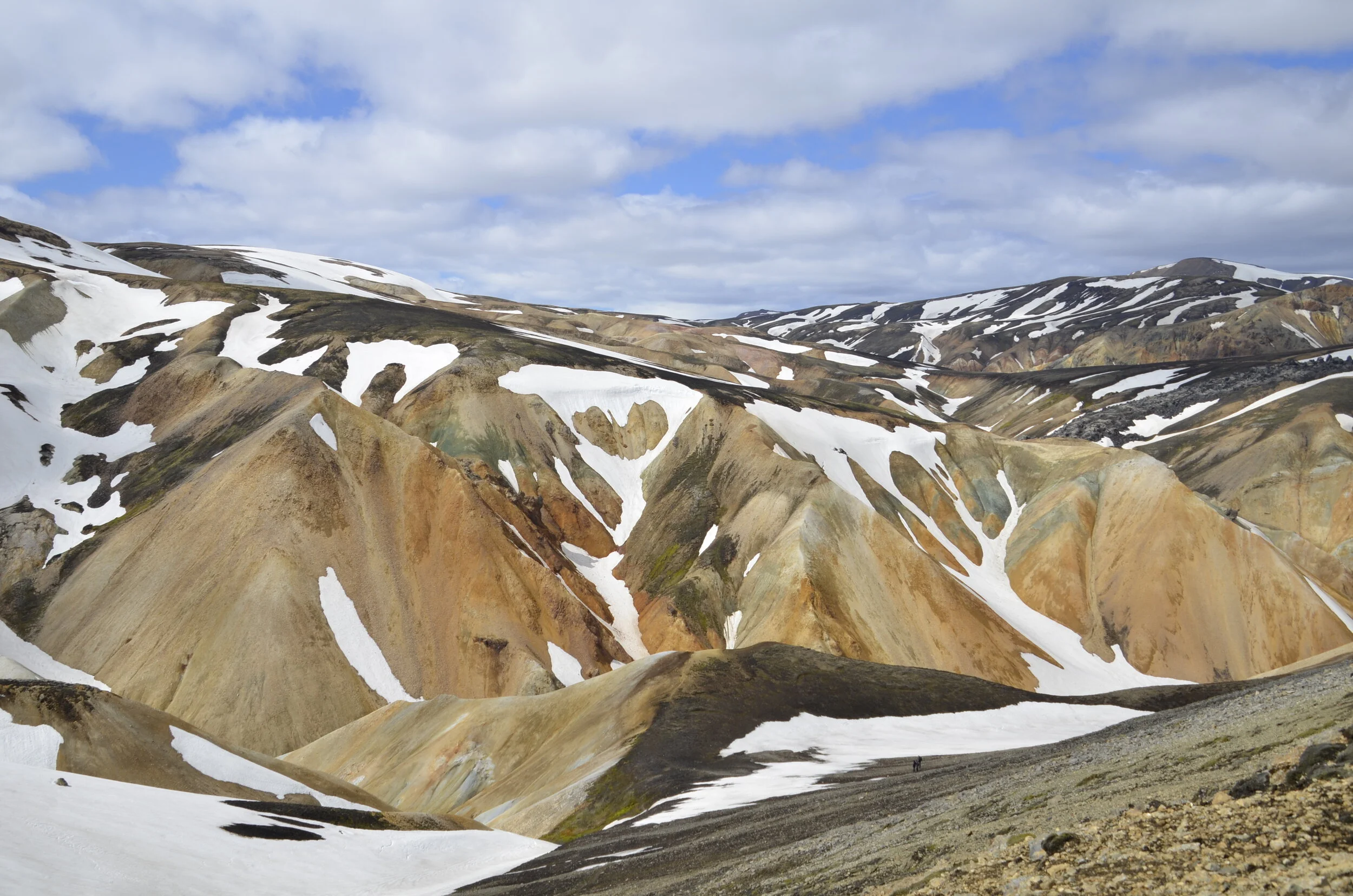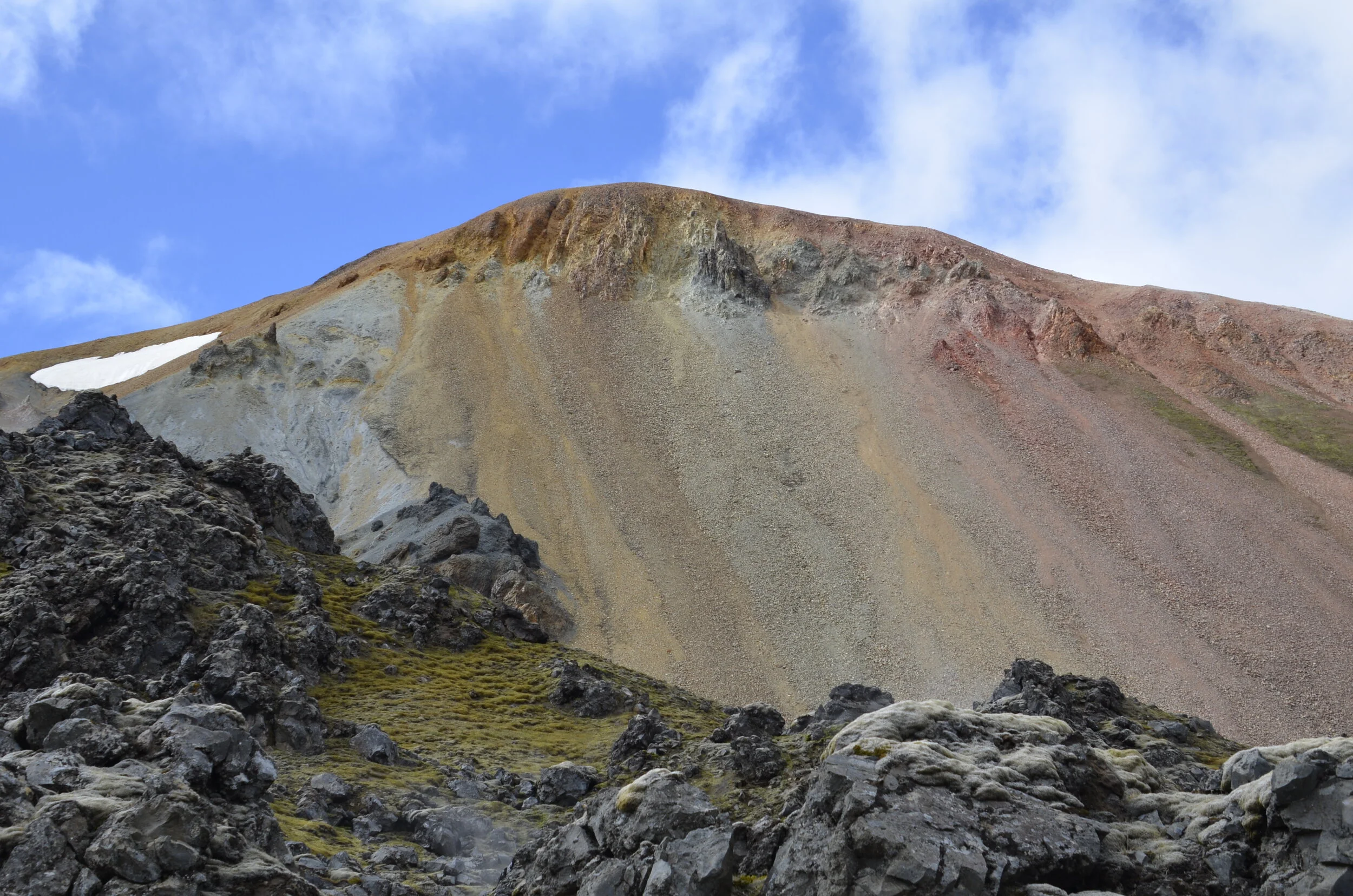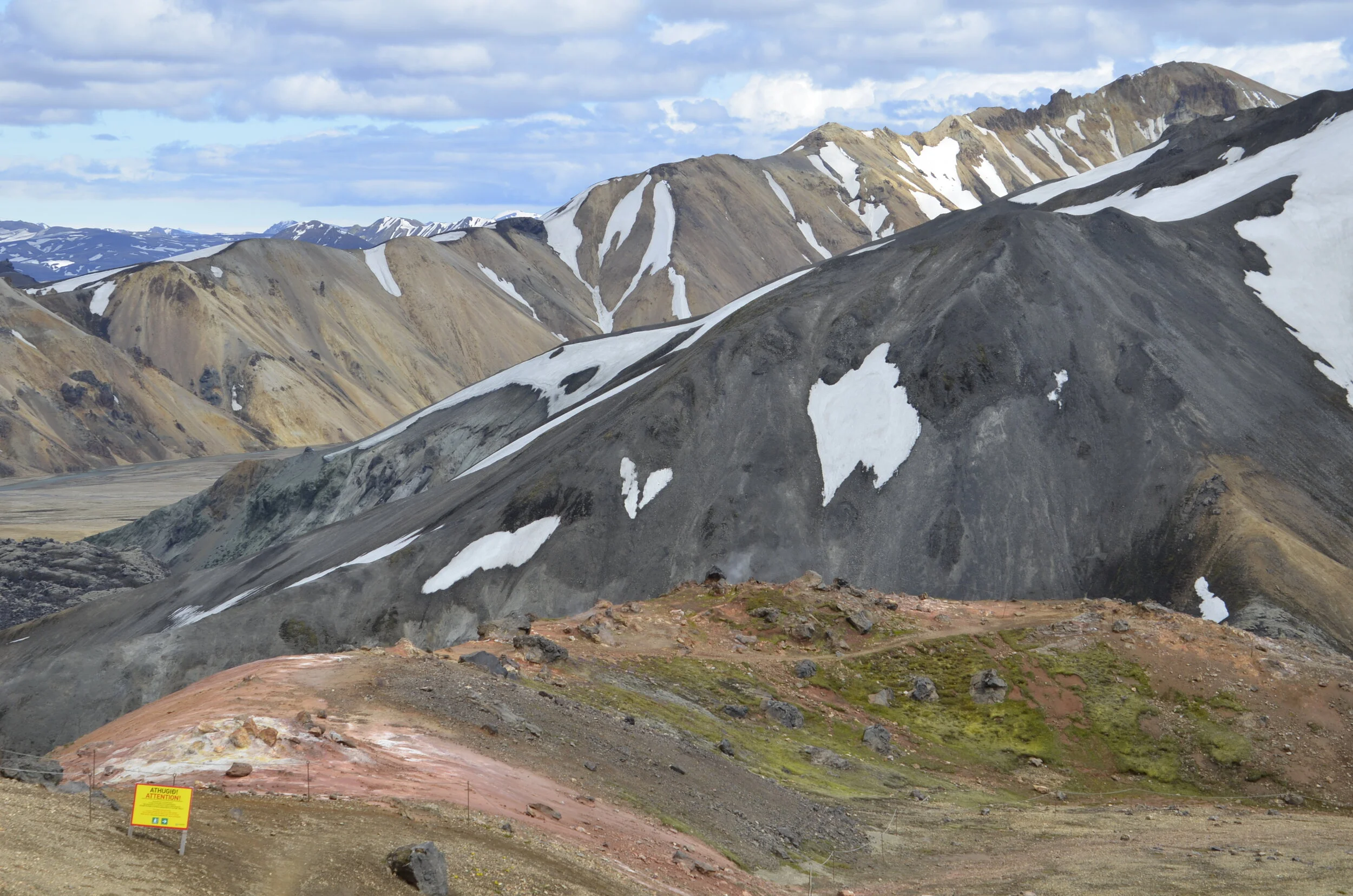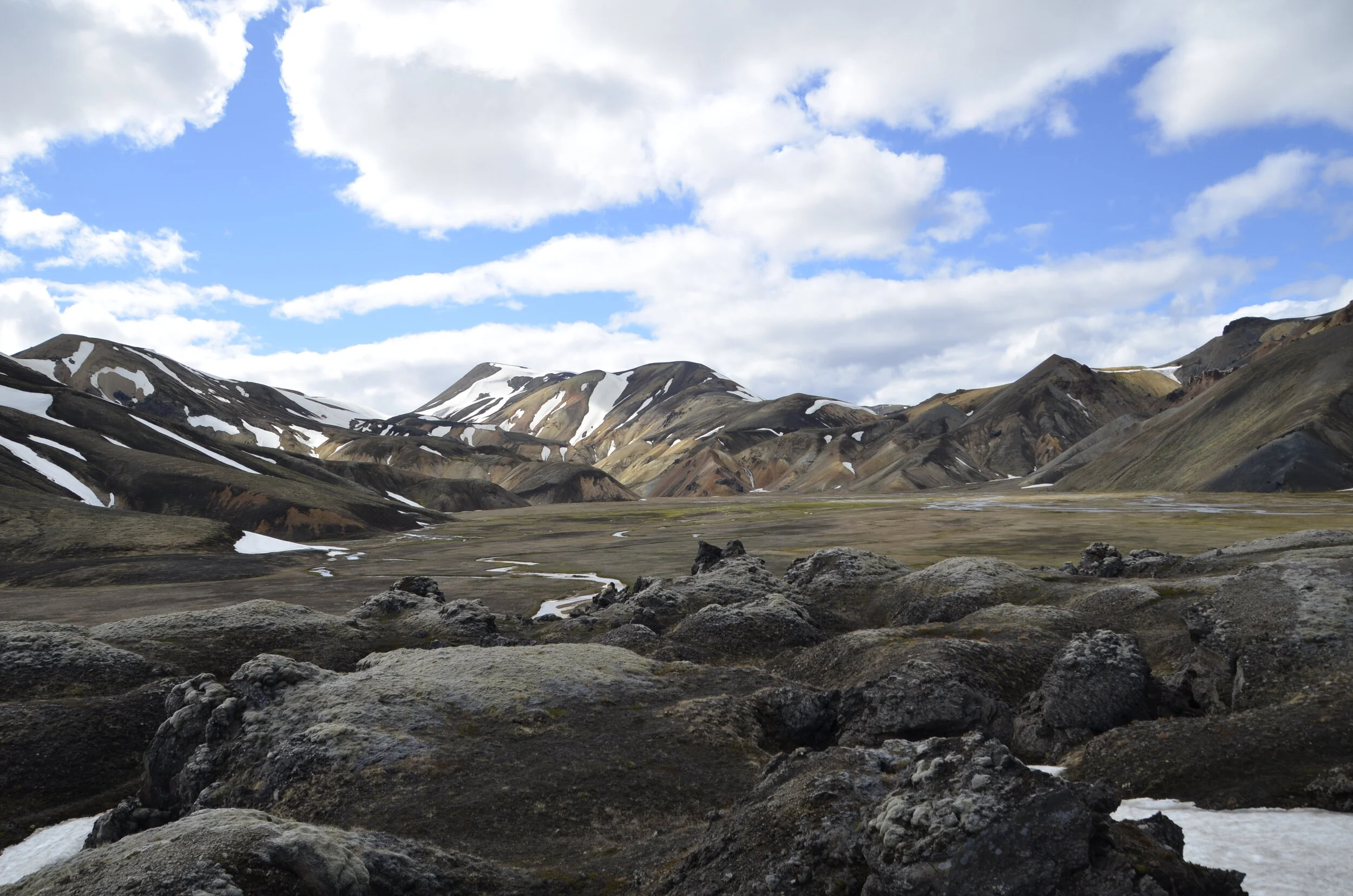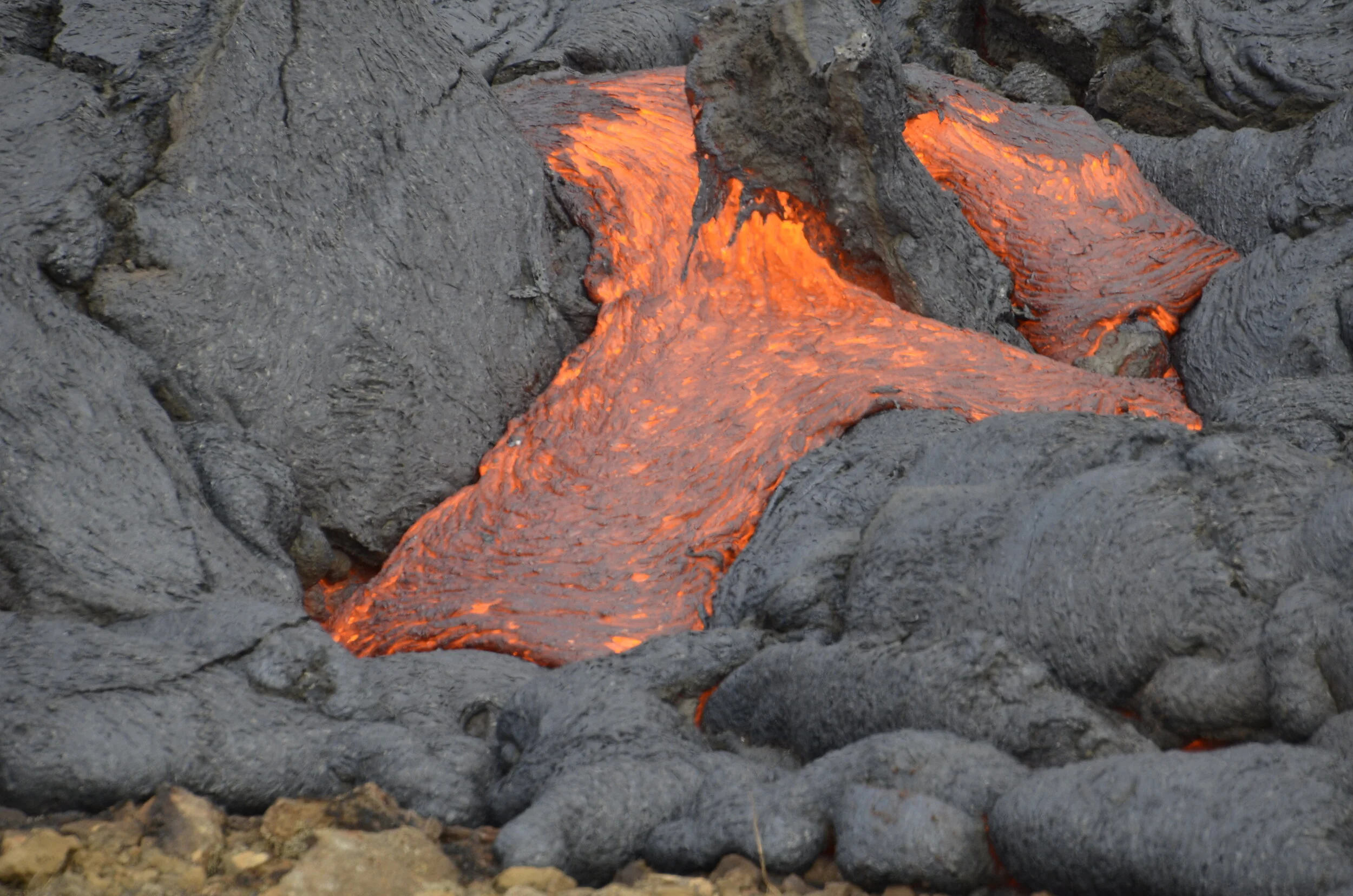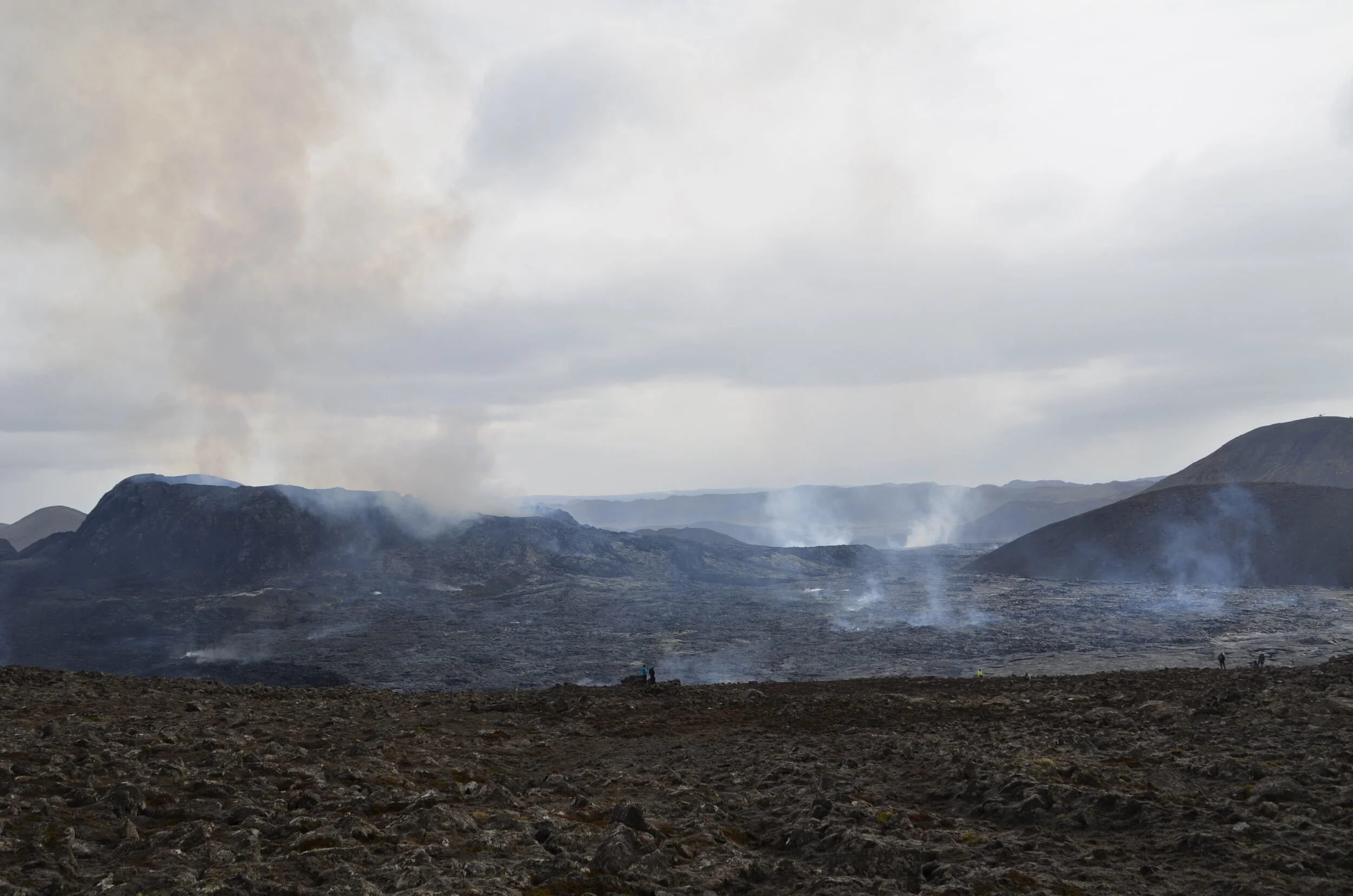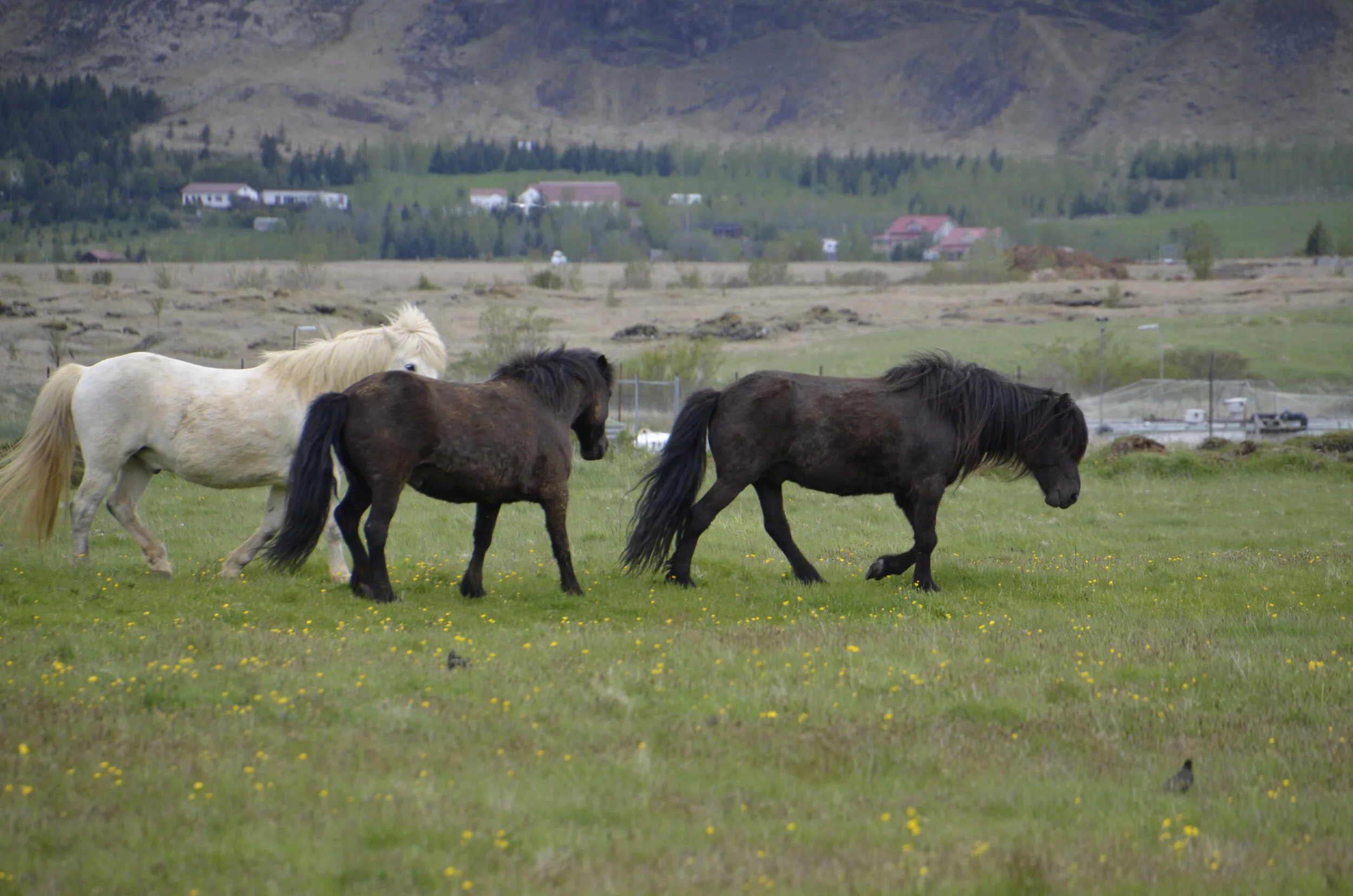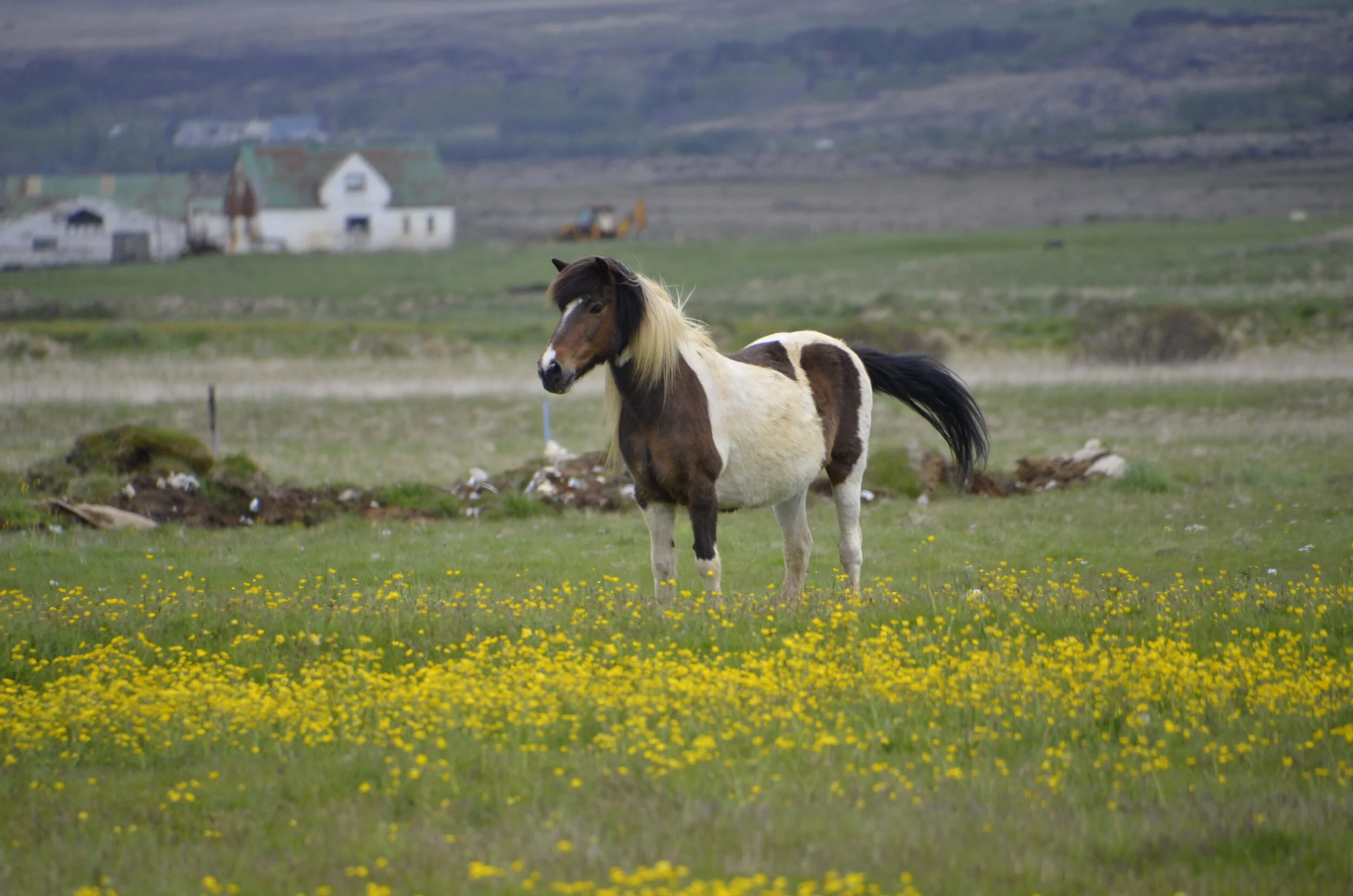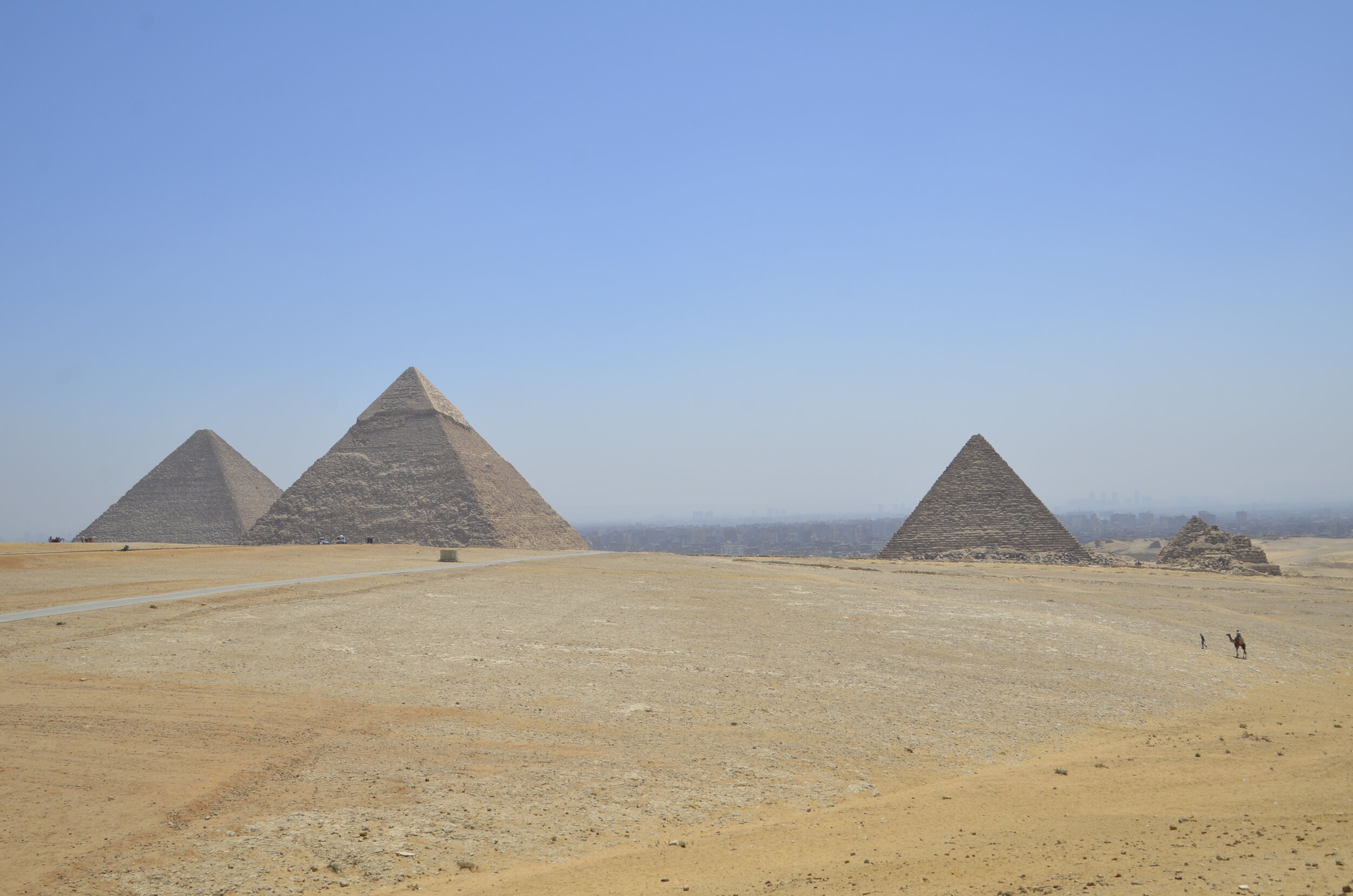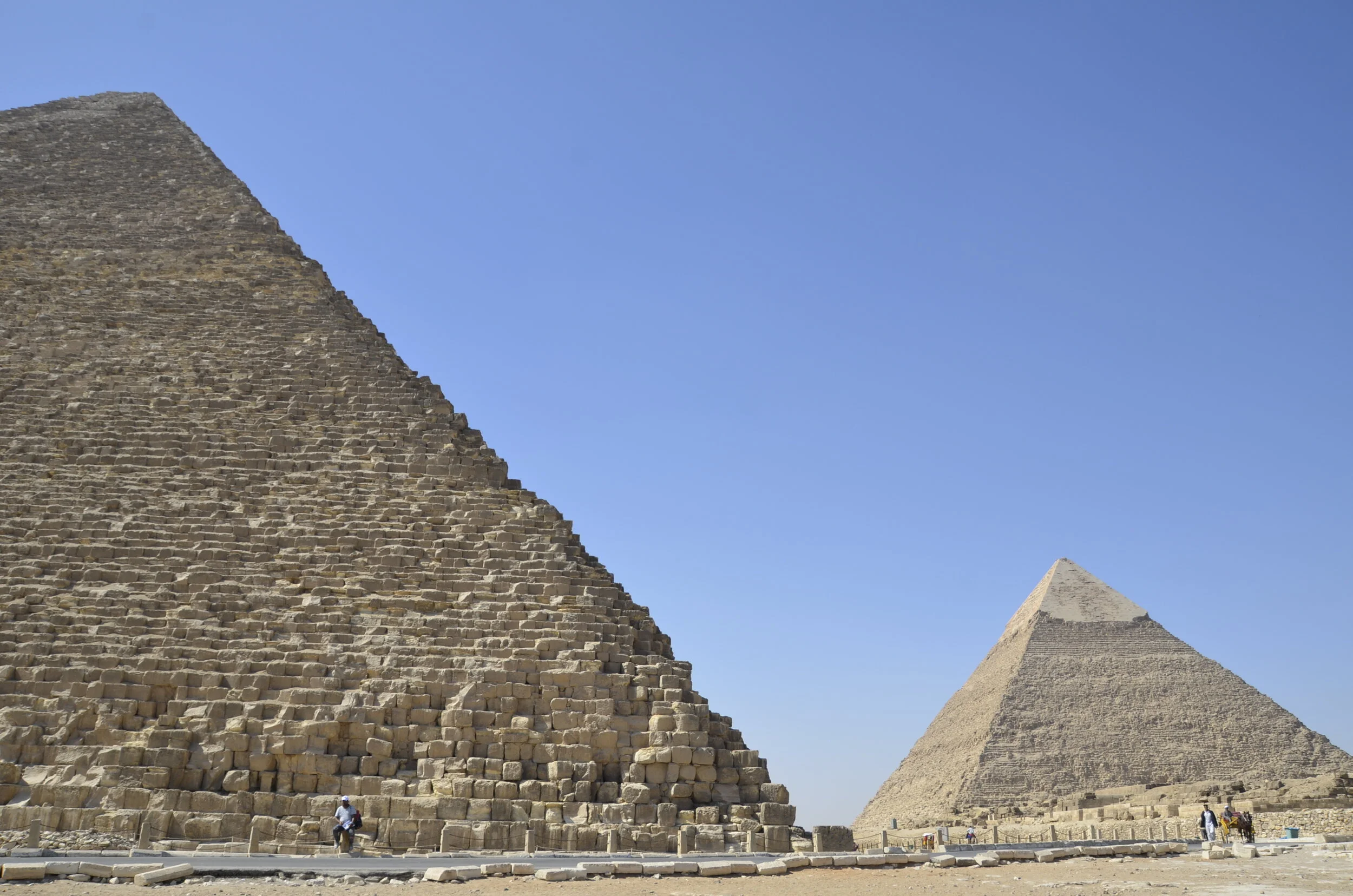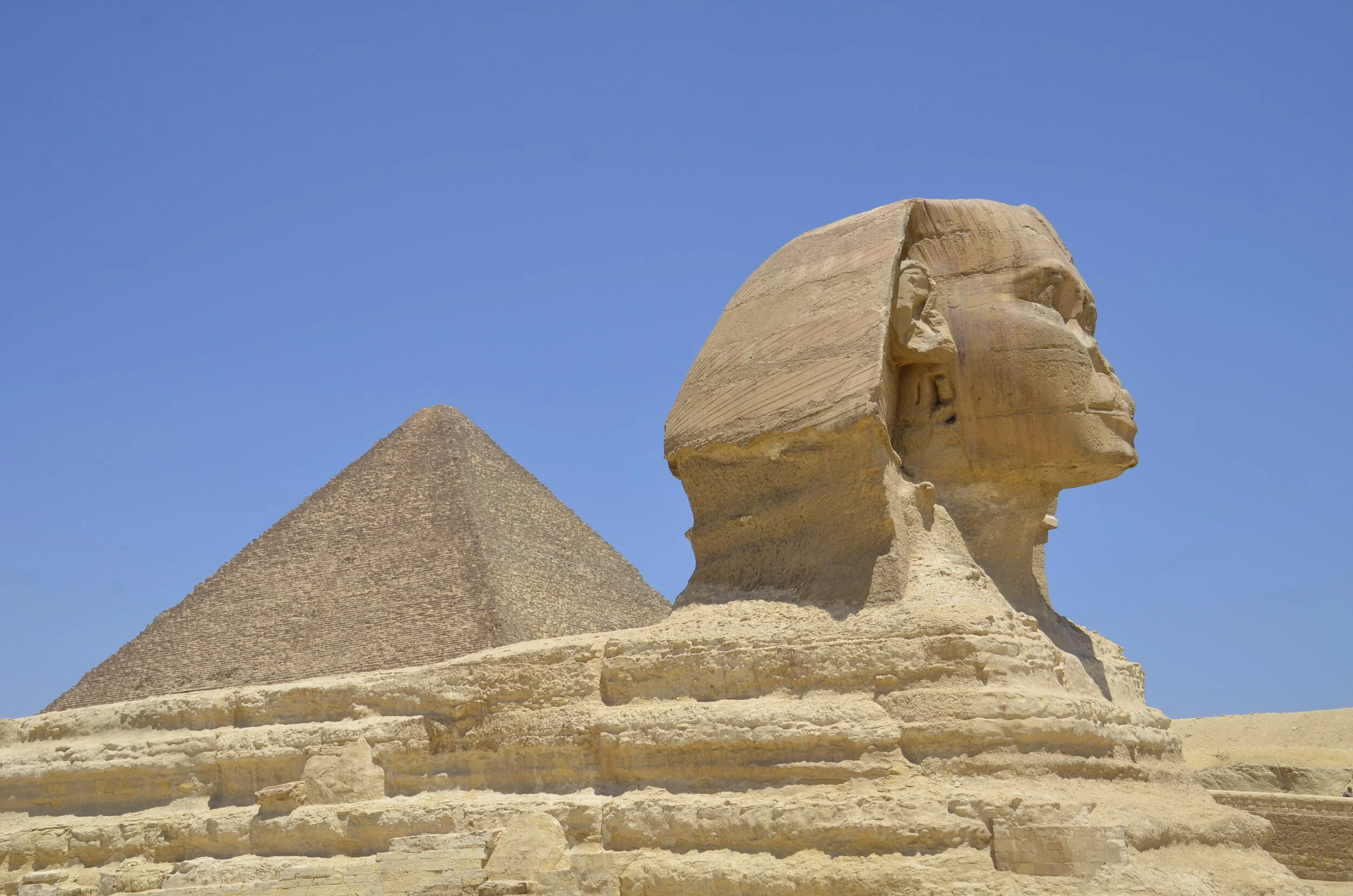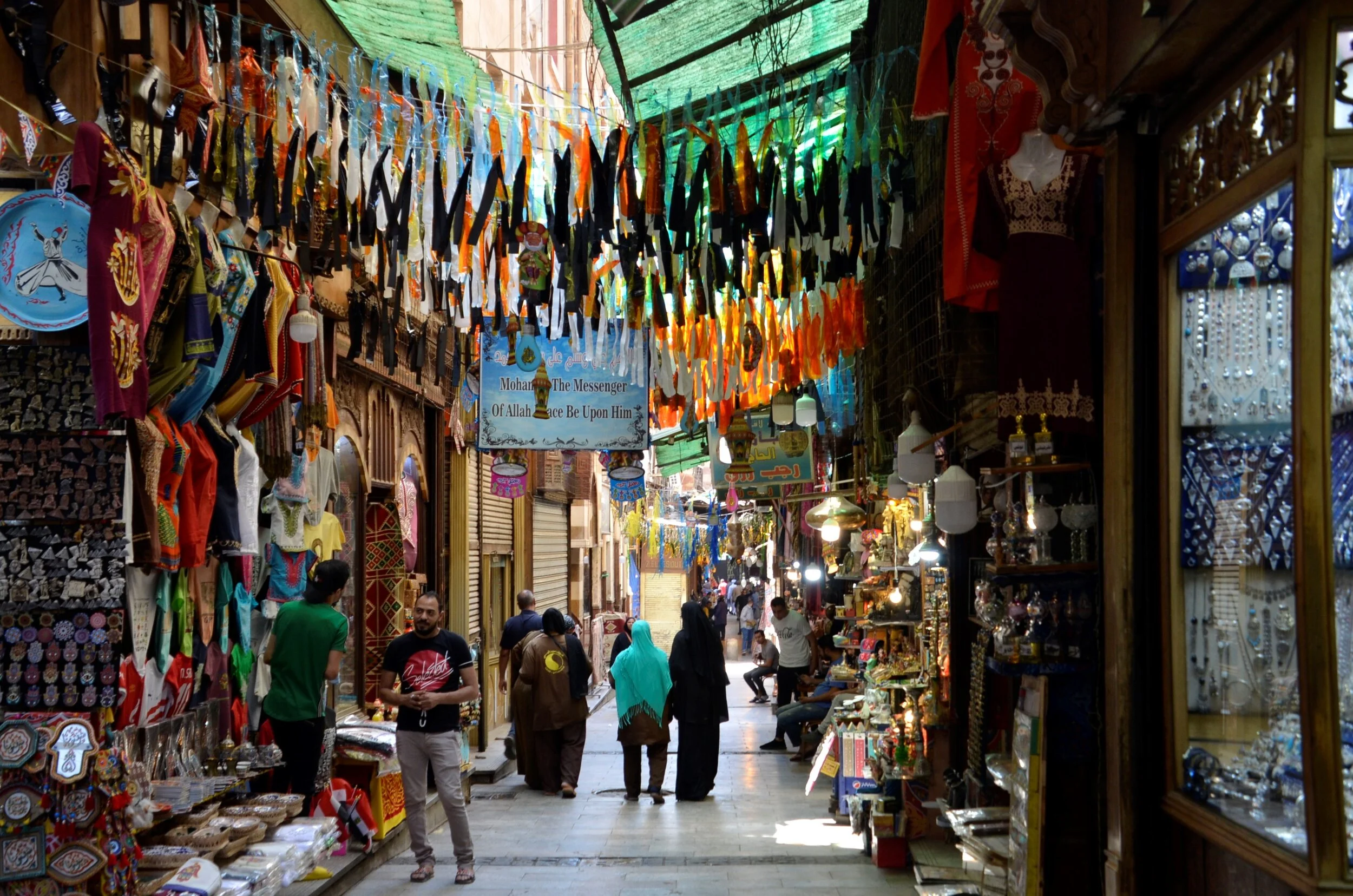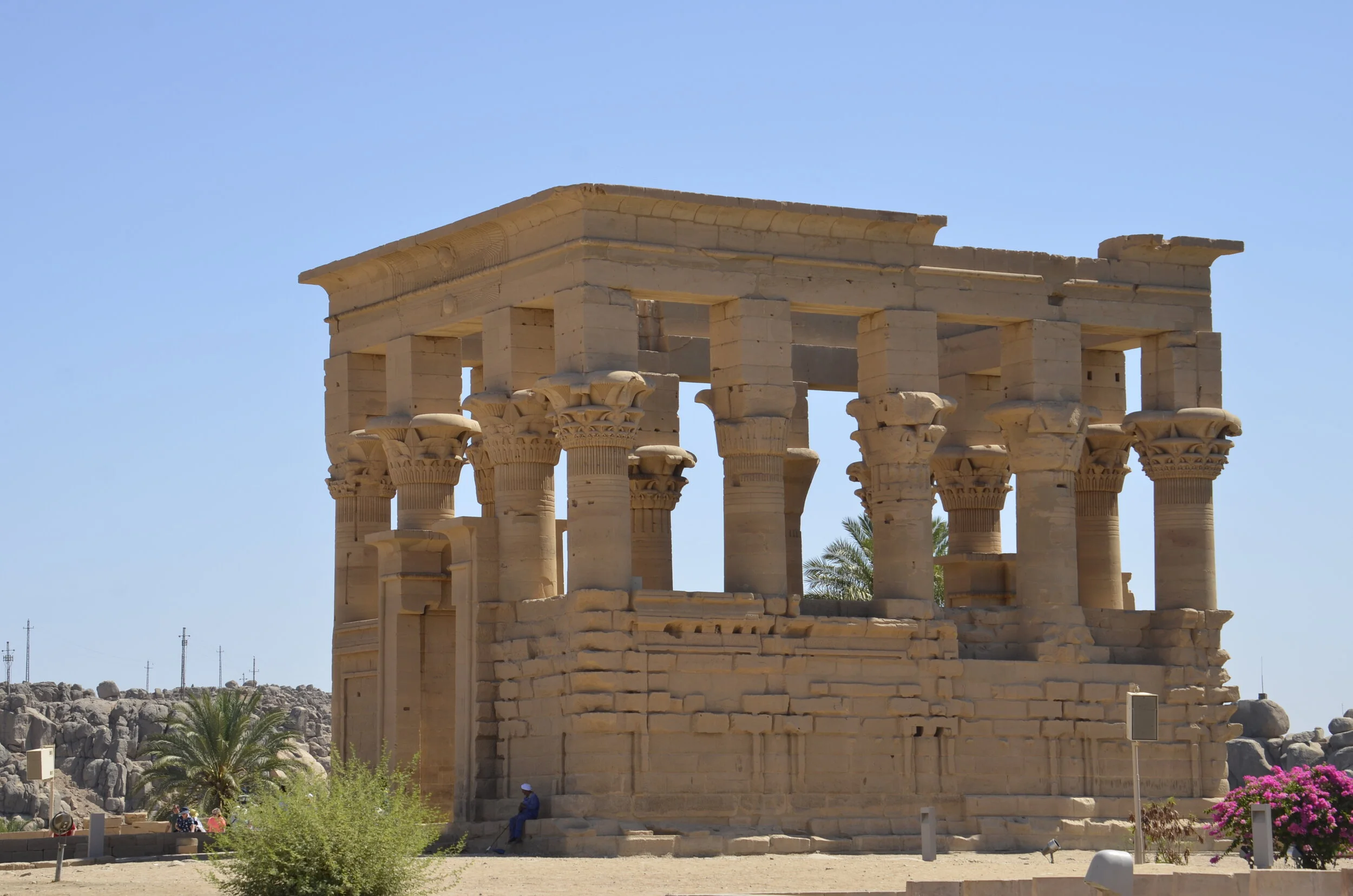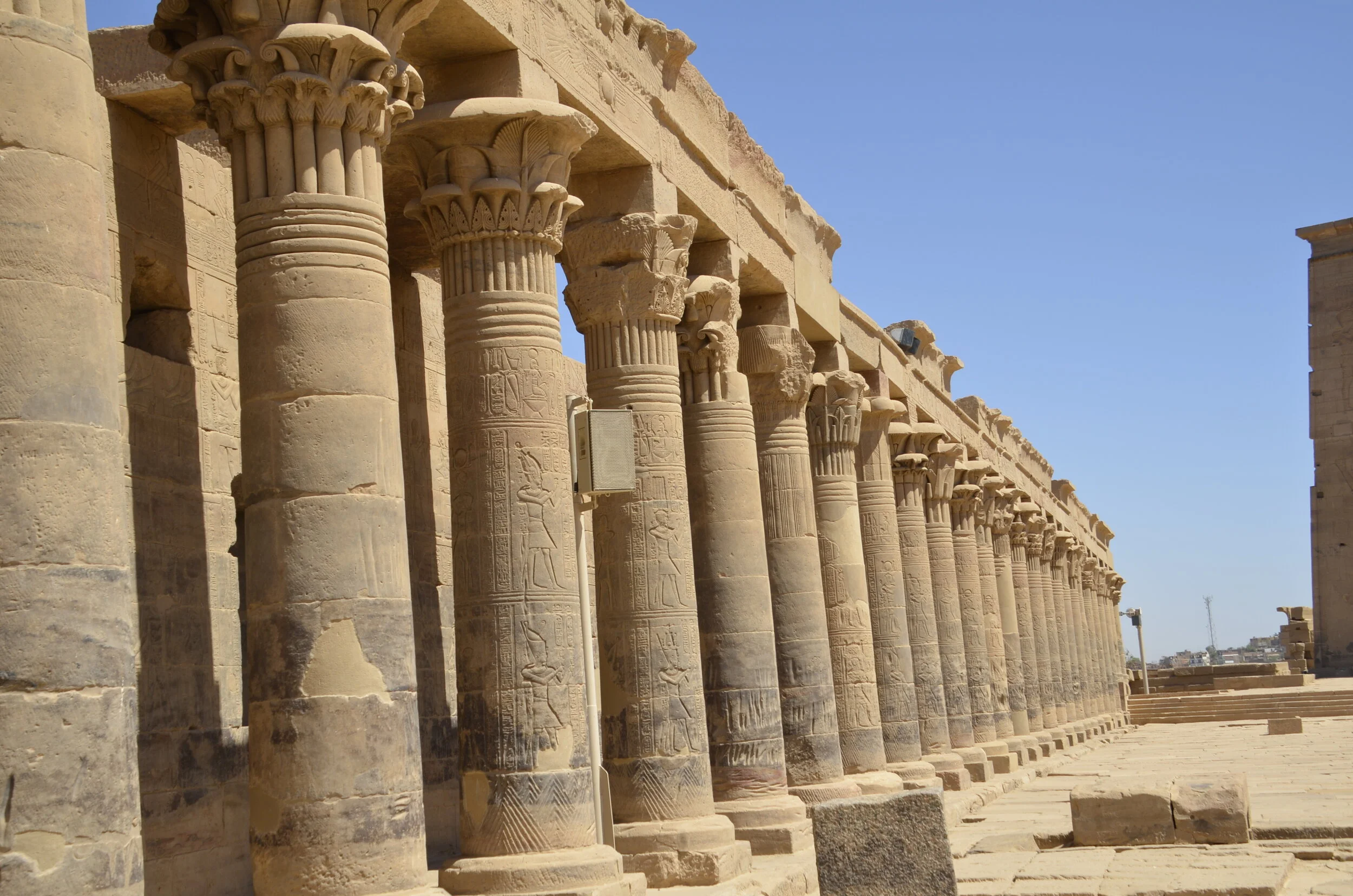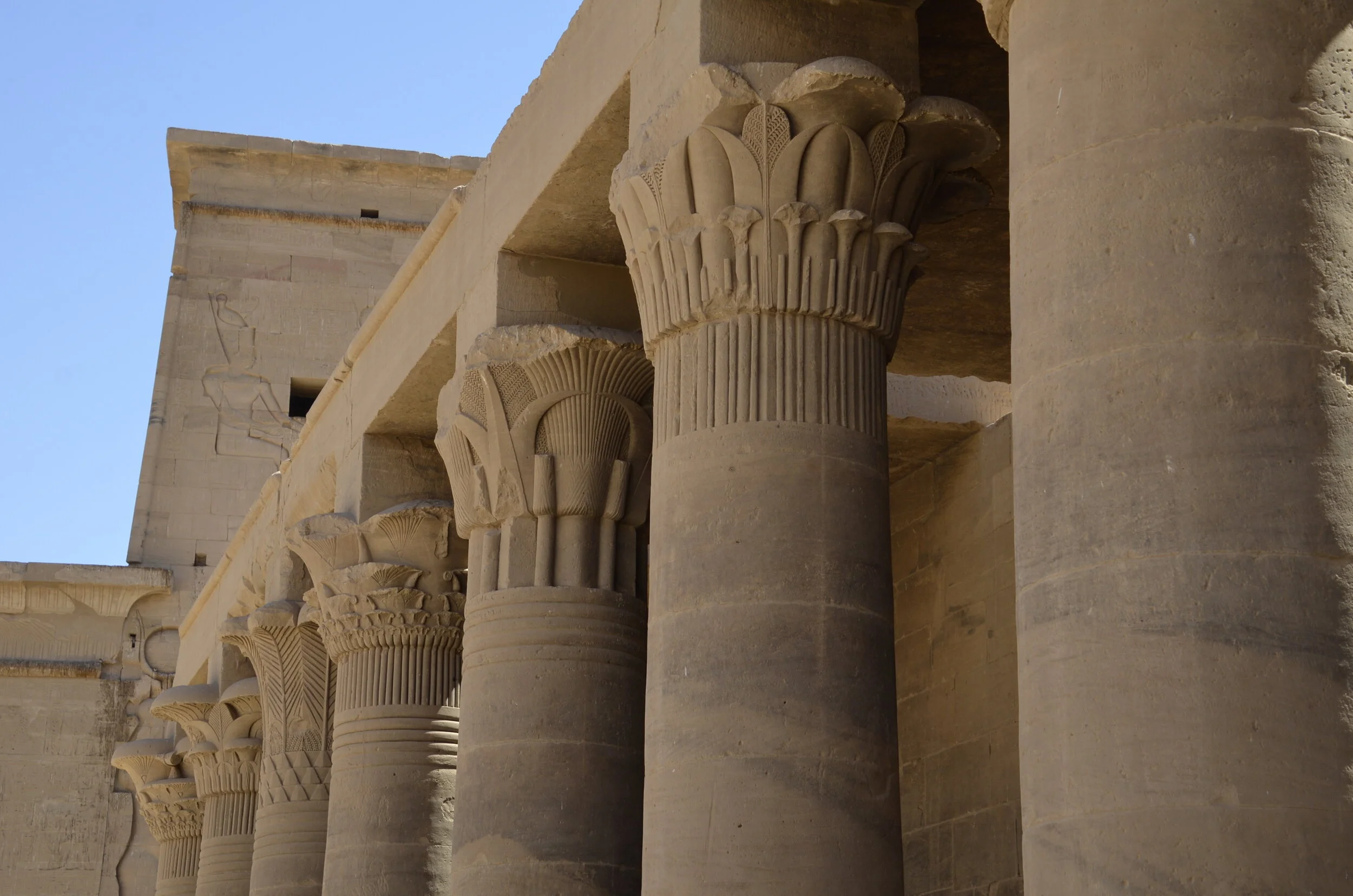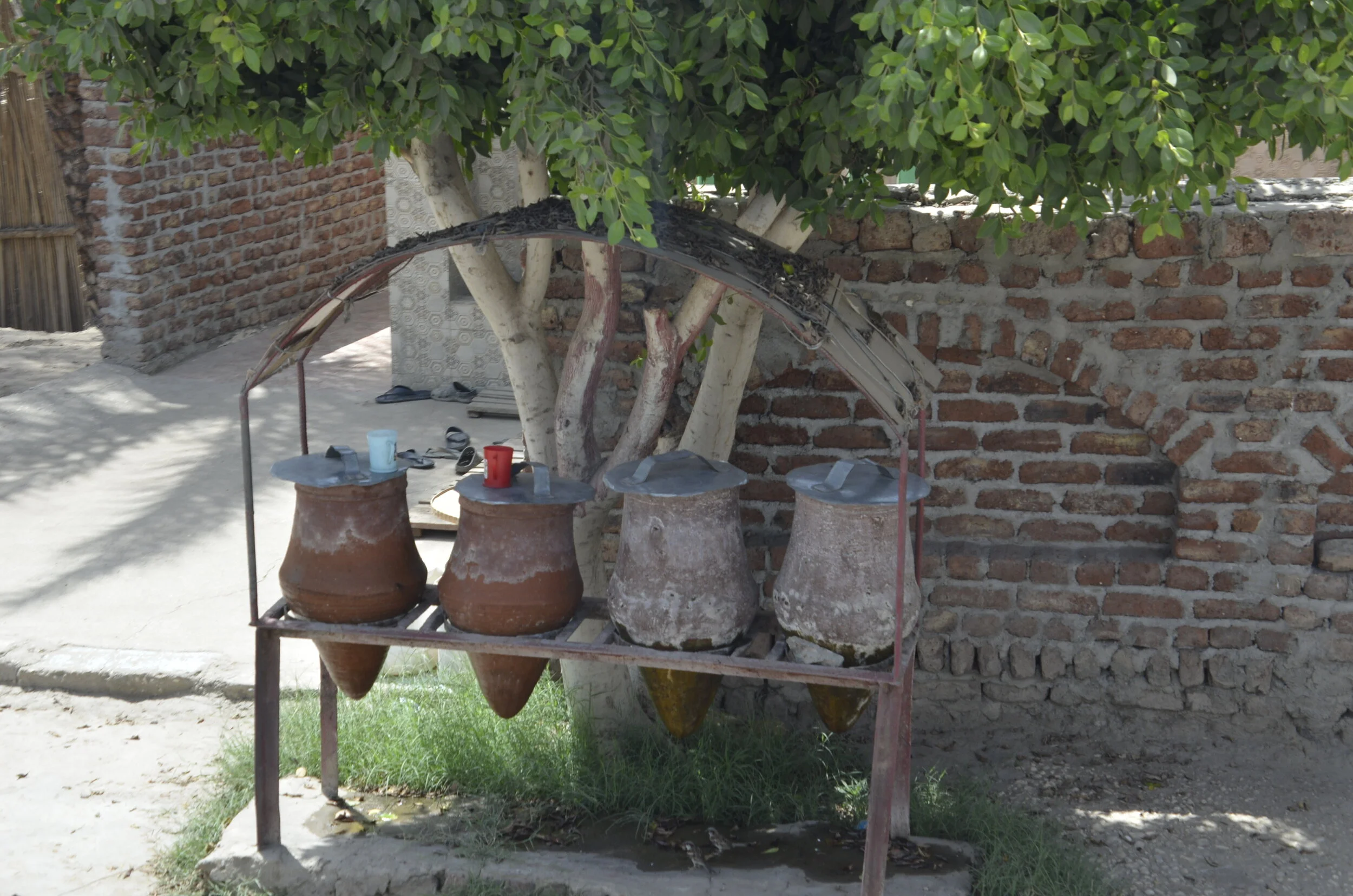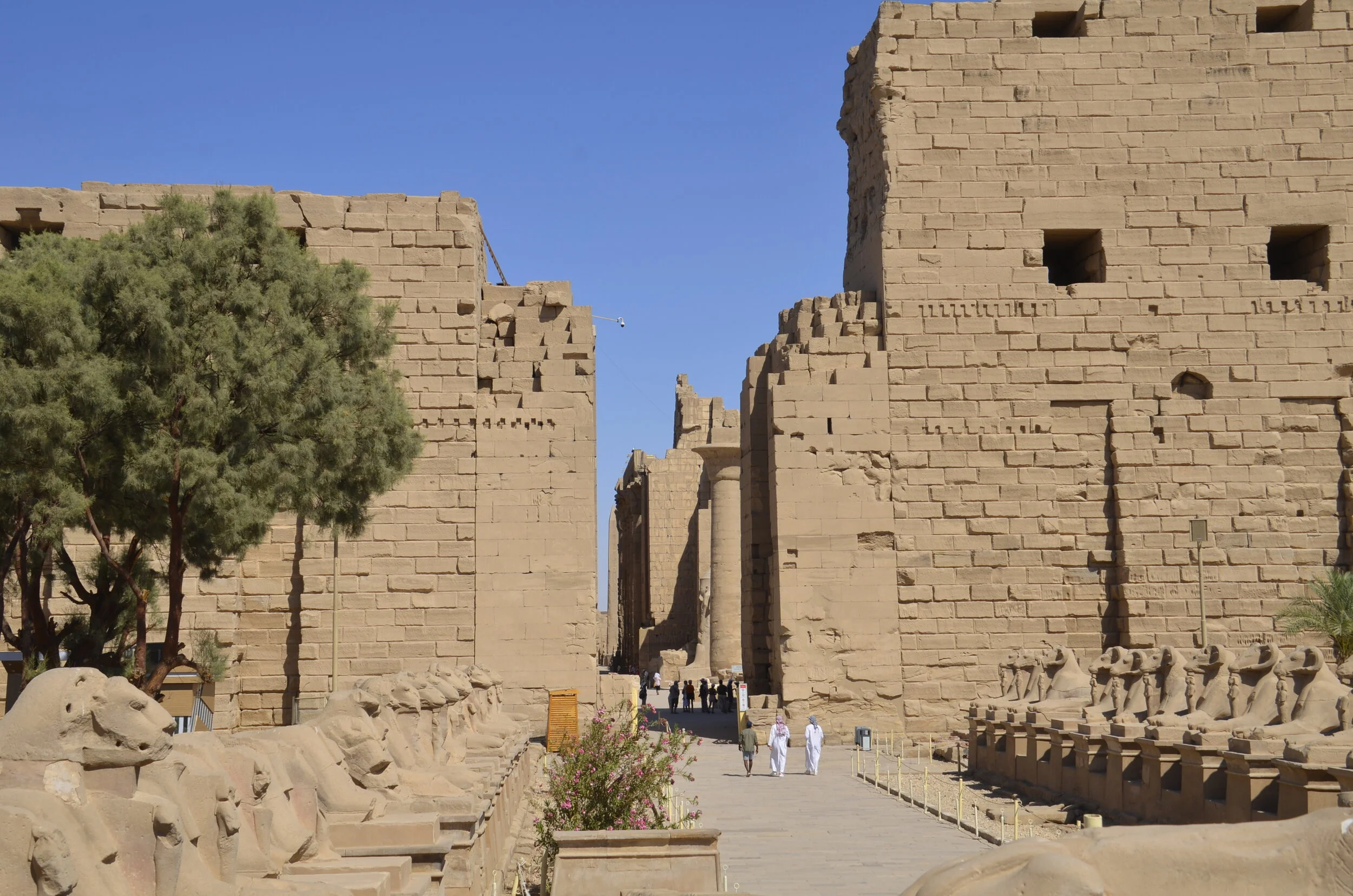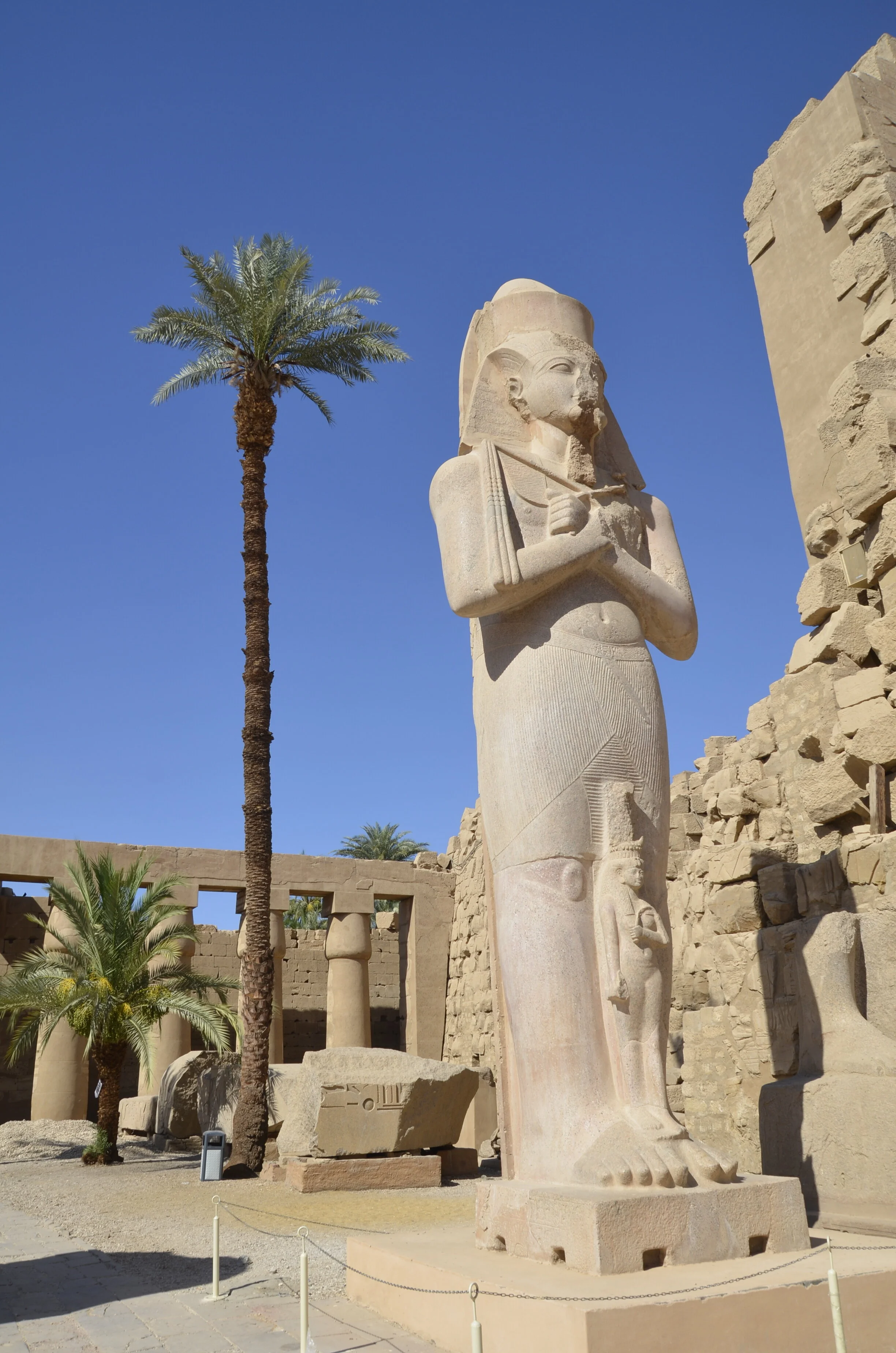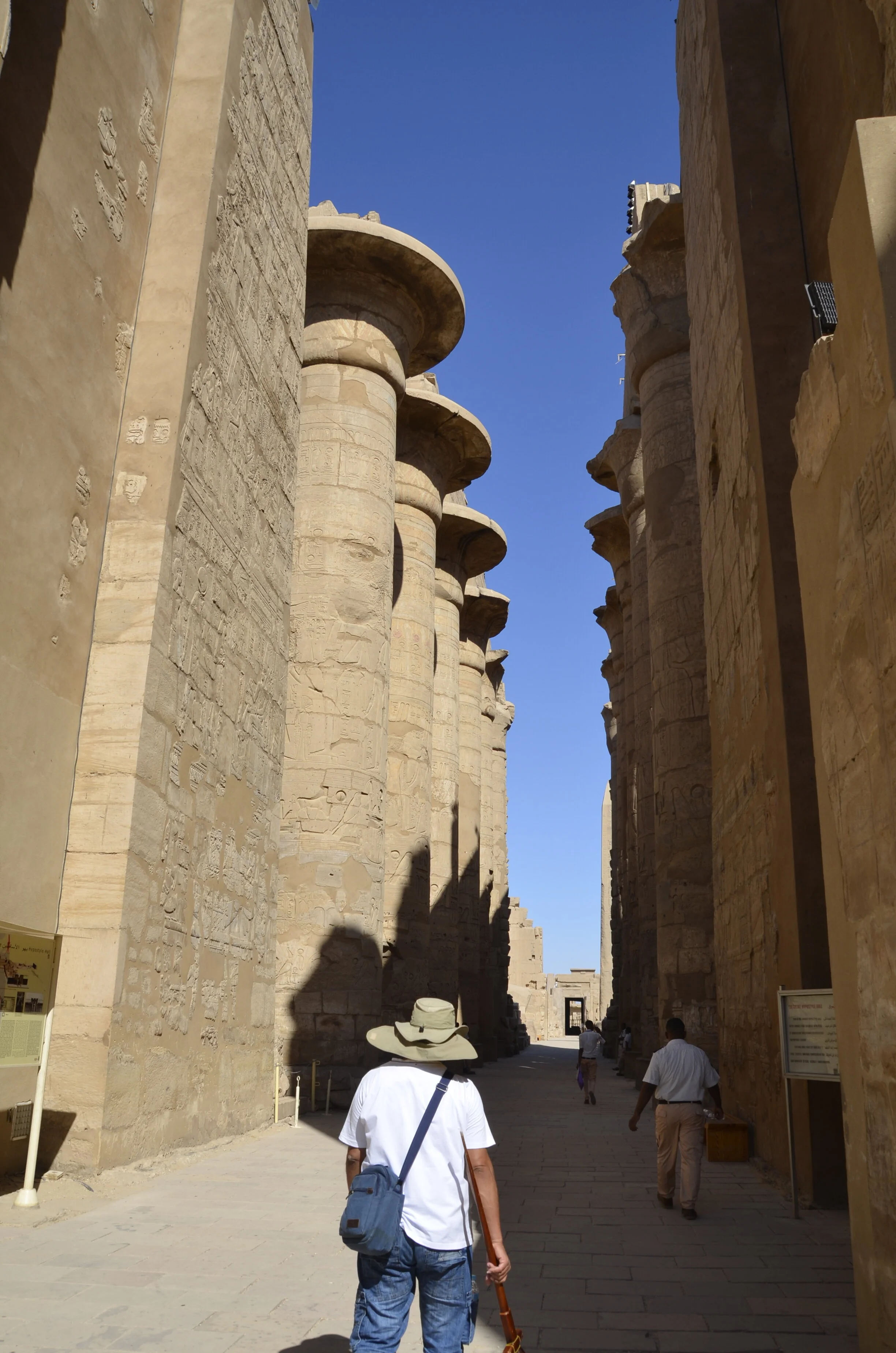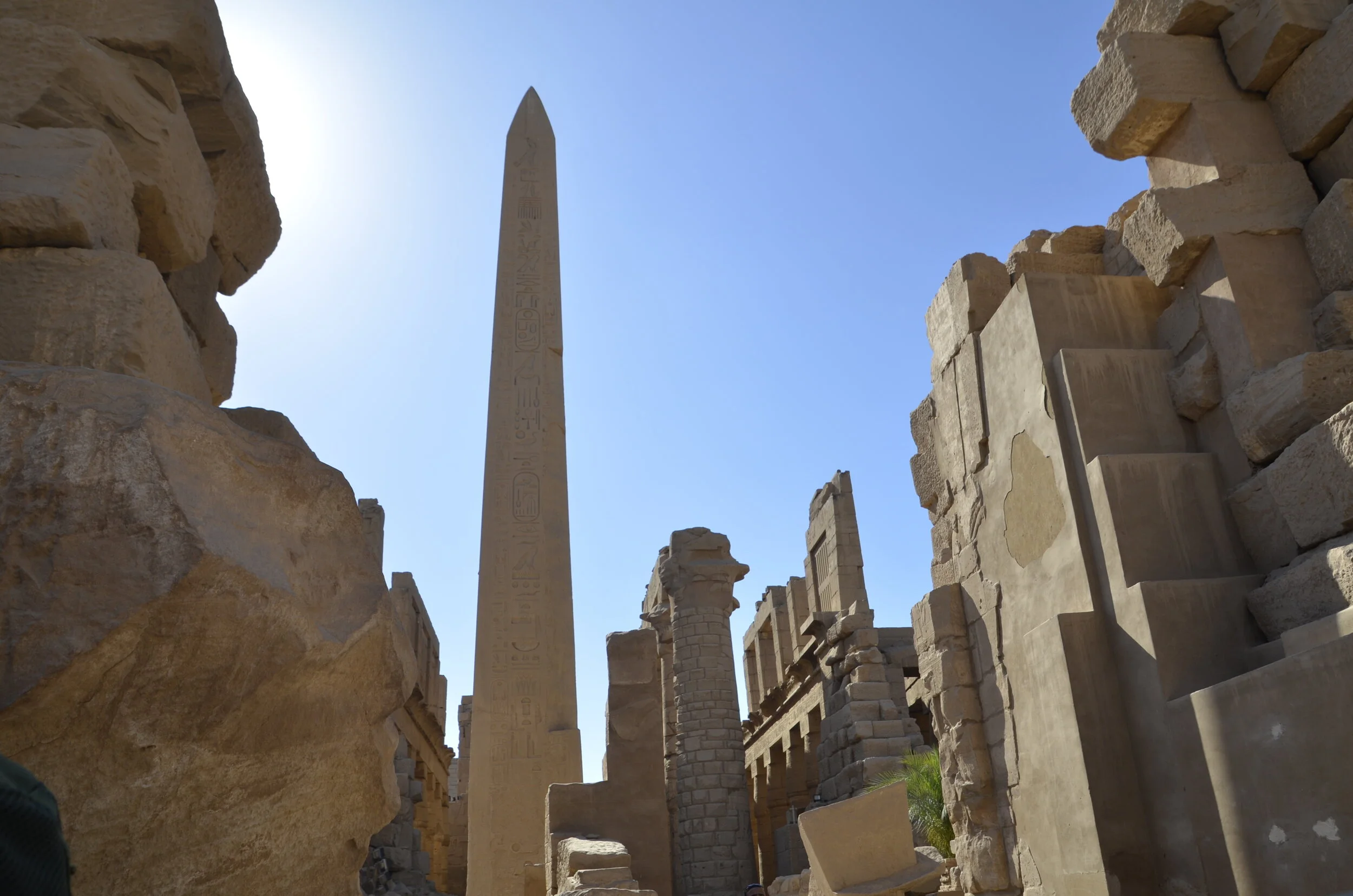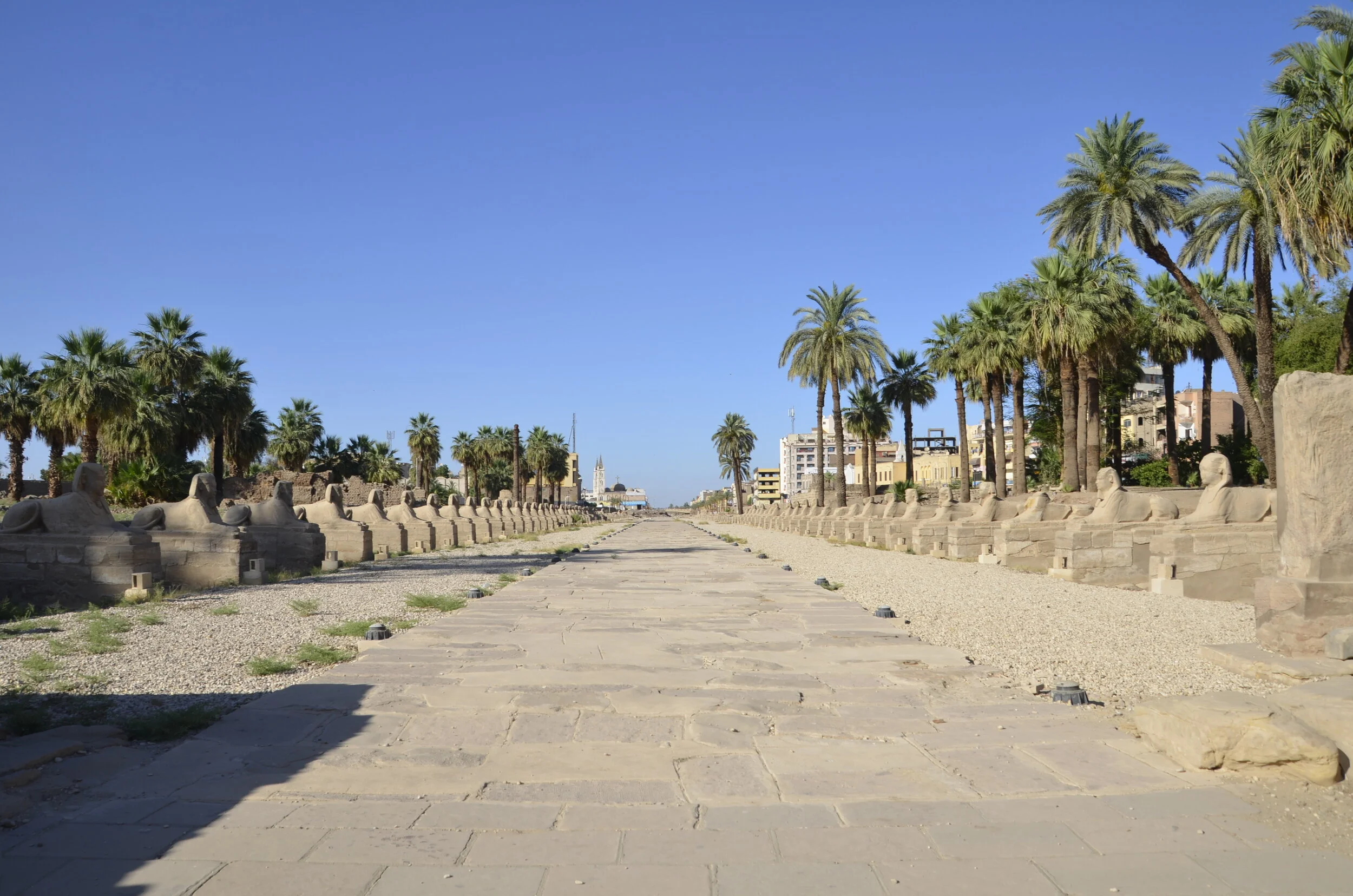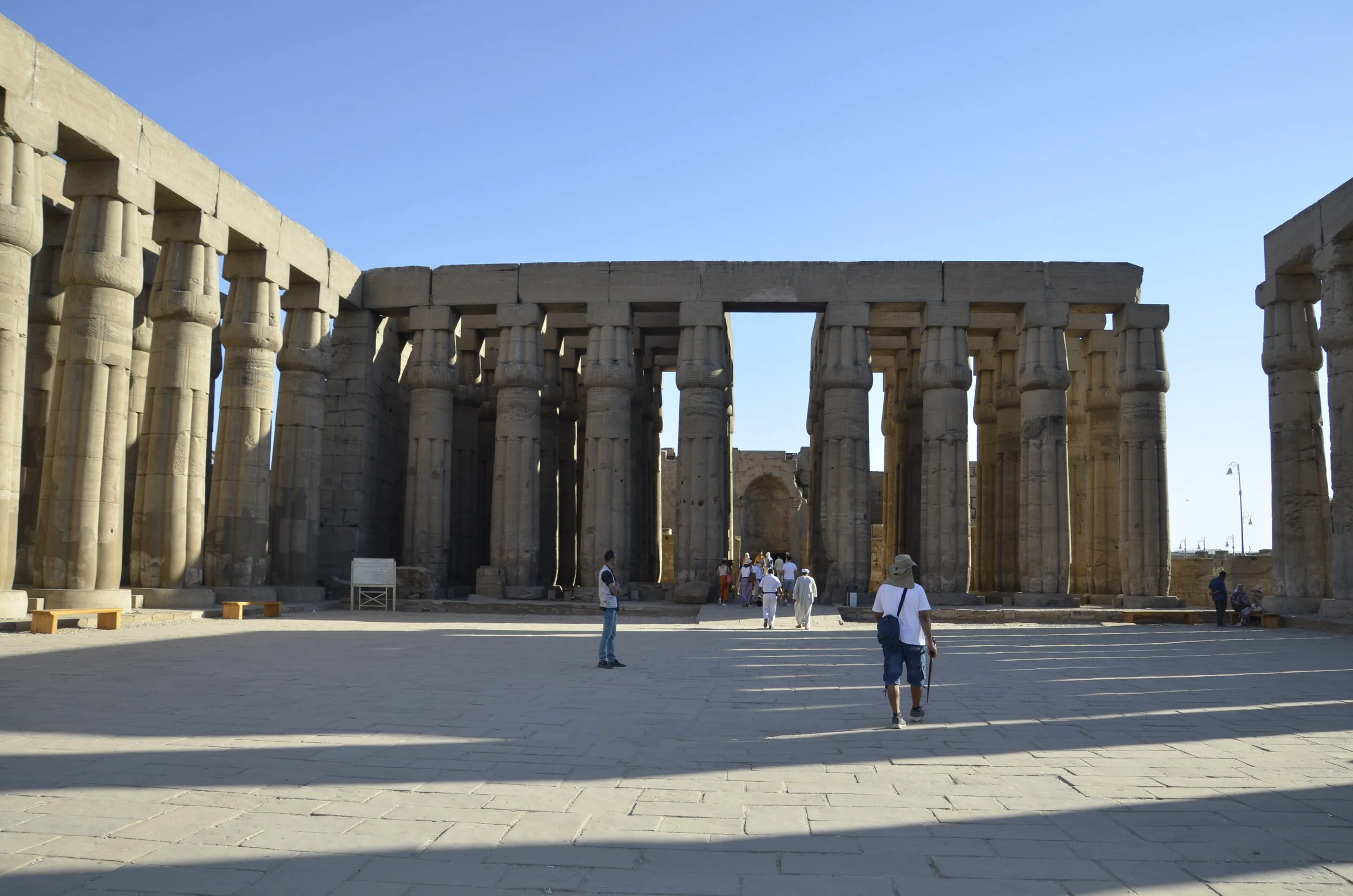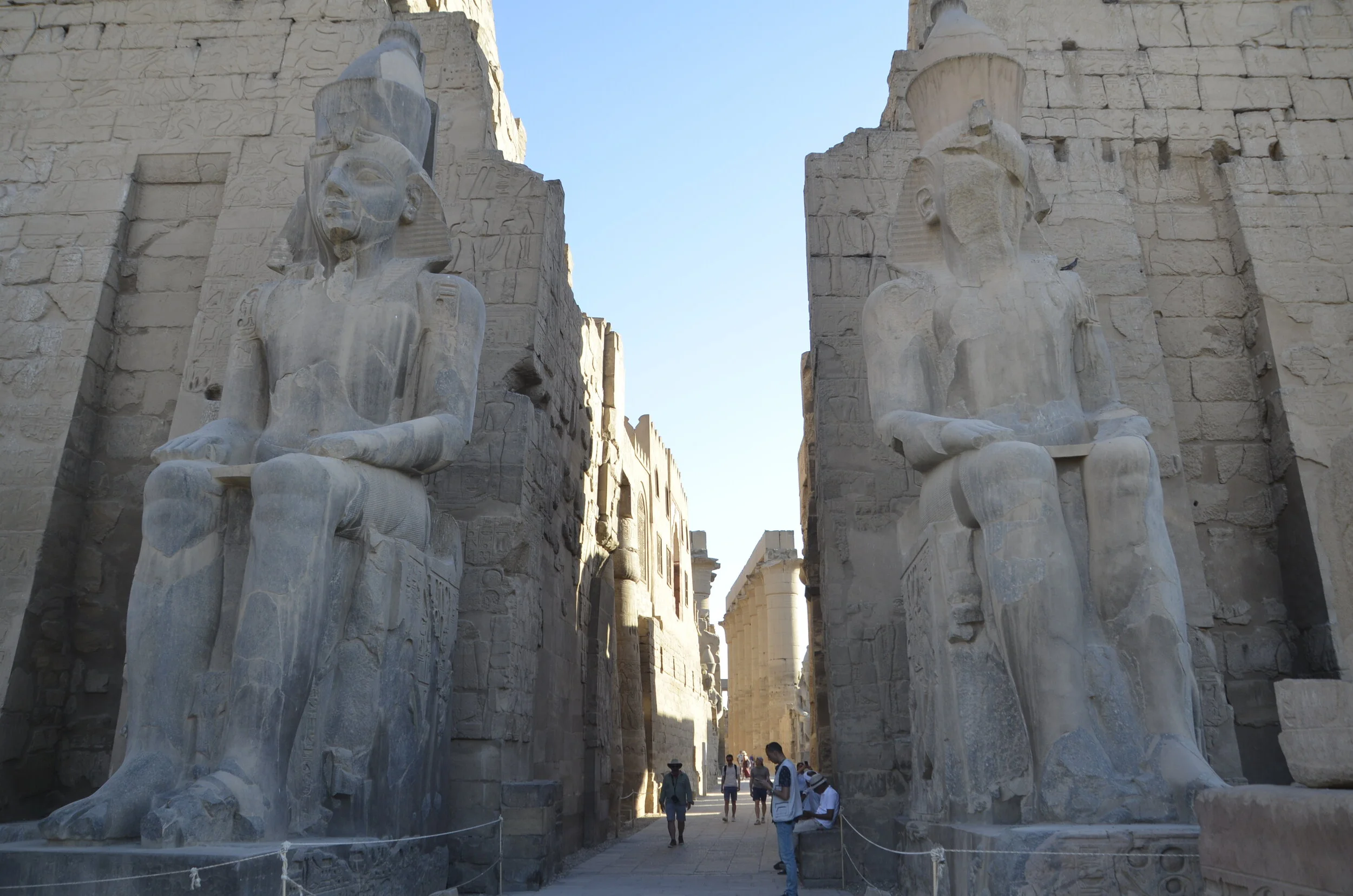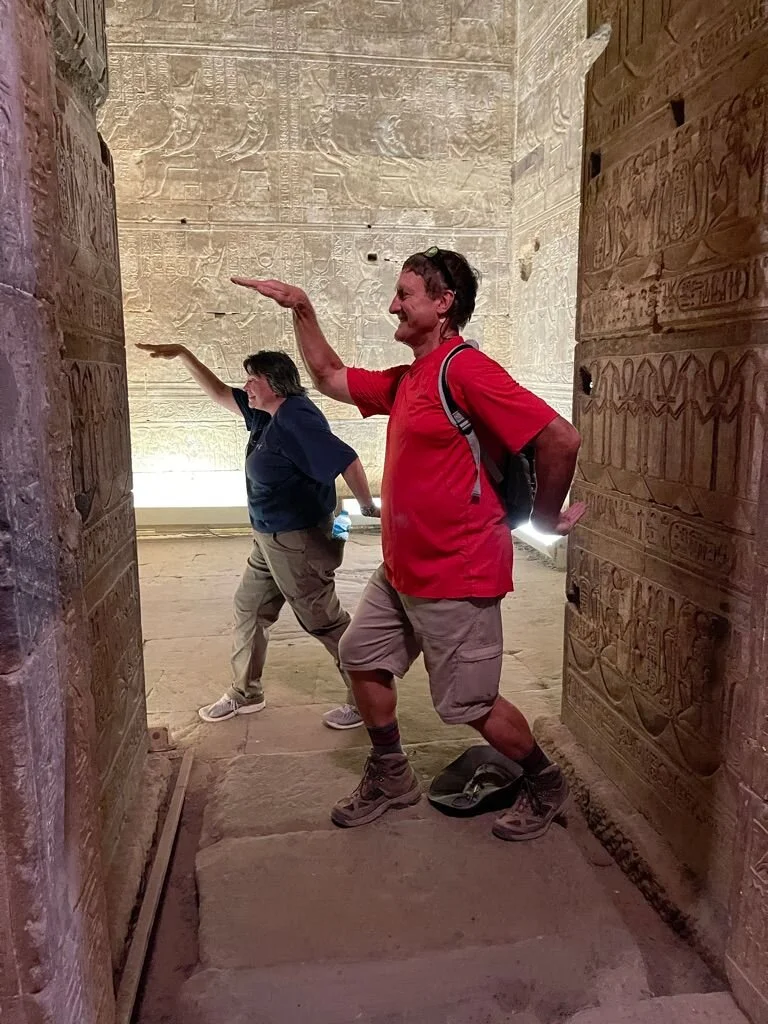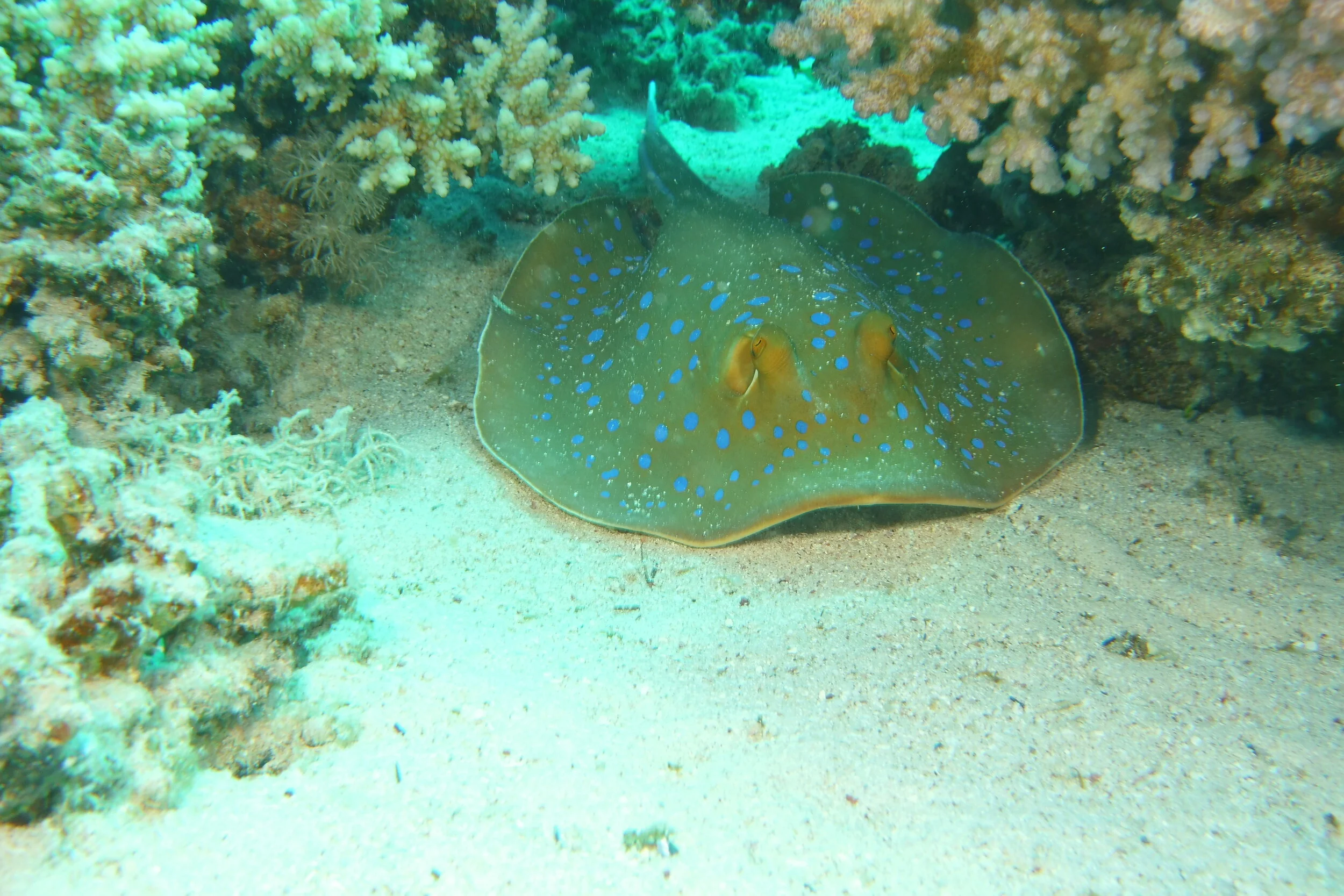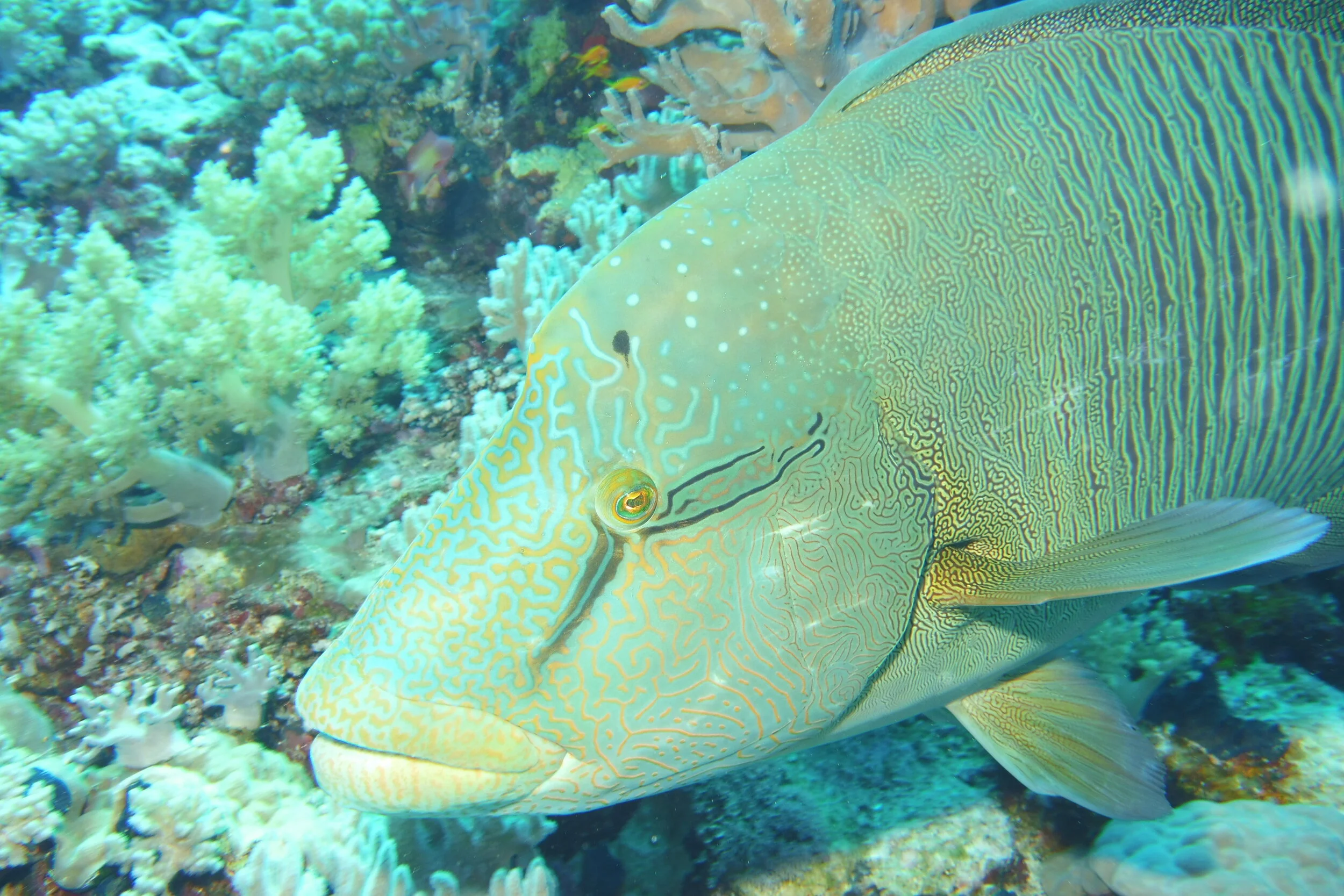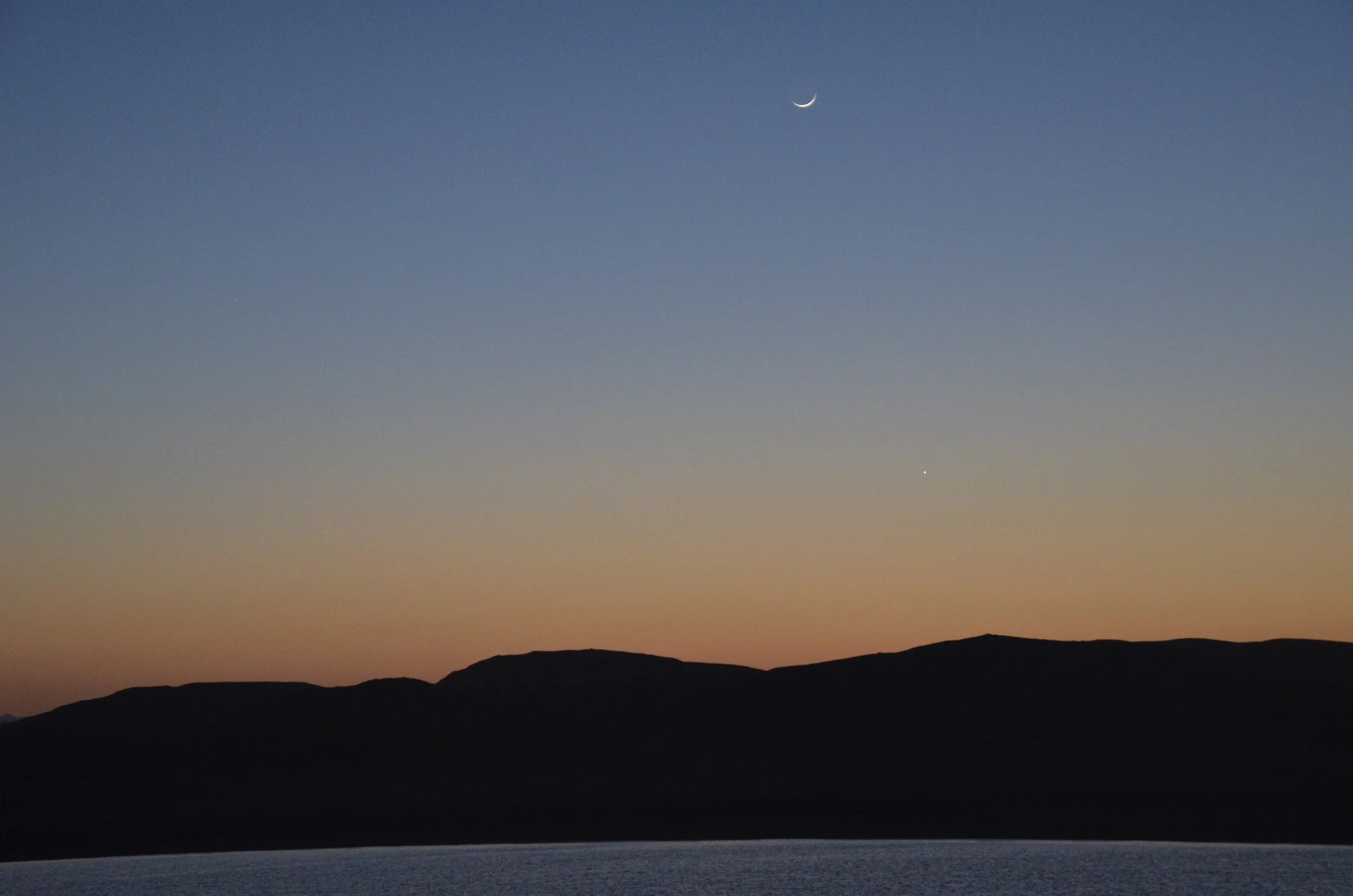Iceland Conclusion
One last waterfall before heading to Reykjavik - Glymur - took almost 2 hours of hiking (pretty steep and also exposed trail near cliff edges) to reach. I didn’t take many pictures on the way up since I was concentrating on the hiking.
If you enlarge the picture above, you can see our first challenge across the river:
Steve took a video of me crossing: (remember, open this post in your browser to see the video)
After an hour of hiking, we got our first look at our goal -
… and that was where we were (where the people are standing on the edge) when we took that first picture of Glymur -
It just got better and better, the closer and higher we got -
This is the second highest waterfall in Iceland at 650 ft!
The views back over the valley we climbed out of were pretty expansive:
See the tiny people at the top?…
You can see people at various points back down the trail we just ascended:
Yay - near the top…
I loved the green filling the canyon walls -
After crossing this river barefoot (on very sharp rocks, to me, and mid-calf deep in spots):
…we got this view at the top of the waterfall -
(talk about dropping over the edge!)
The return one hour hike was very boring, but all downhill.
On to Reykjavik… We stayed in the city, near the famous church, Hallgrimskirkja…
…built to represent the basalt columns that I fell in love with throughout the country. Our Airbnb had some gorgeous poppies in the garden next door -
… that was a great color “pop” against the grey skies we had most of the time. The city had some really colorful buildings…
… but this was my favorite mural -
We did visit one more set of waterfalls before we got to Reykjavik, named Hraunfossar (Lava falls) because they flow out of the rocks rather than as a stream or river falling off a cliff.
This area is just gorgeous in the fall with the changing colors of the leaves.
Okay… I’ve been asked, by more than one person, to give an itinerary for those who want to visit Iceland, but don’t have a month to spend, like we did. Rent a car at Keflavik Airport; visit Blue Lagoon for a pricey thermal hot pool experience; hike to Fagradalsfjall volcano (if you can get to it); head to Snæfellsnes peninsula for 3 nights and 2 days of exploring - you really only need one day, but in case the weather is bad, it’s nice to have an extra day built in to get better weather to see everything; then head down to the south coast for all the big tourist stops of waterfalls and glacier lagoons. Our previous posts highlighted where we stopped. The east and north areas of the country are really spread out with regard to interesting sights, and not really worth cramming into a 10 - 14 day visit. You can really see all the beautiful sights of the country by focusing on Snæfellsnes and the south coast.
Steve would feel that I failed, if I didn’t tell you to visit the Iceland Phallological Museum in Reykjavik!


